The school year is its own animal that seems to envelope our whole family with busyness and, at times, chaos. Nevertheless, the birds don’t care, and last school year they REALLY didn’t care. Prior to last school year, I had started restricting my long-distance chases to just life birds, exceptions being made for state birds that are super convenient. Even under these strict, self-imposed protocols, I found myself on the road a lot last year to go after genuine life birds that showed up in Minnesota. So here’s a quick recap of those birds.
Roseate Spoonbill–August 26, 2018
Late last summer, Spoonbills started popping up all across the upper Midwest. Minnesota birders were on high alert for a first state record at any moment. The honor of that find goes to Kevin and Cindy Smith who first discovered the bird on the Washington County side of the Mississippi River the morning of the 26th. Unfortunately for other birders, it only stayed about 20 minutes before it flew across the river into Dakota County, giving Kevin and City Roseate Spoonbill in two Minnesota Counties while every other birder in the state was still at zero Spoonbills. There was a collective sigh in the Minnesota birding world as it was not refound. At least, not until the afternoon when Jim Pifher refound the (supposedly same) bird at the Old Cedar Avenue Bridge on the Minnesota River in Bloomington. Immediately, Minnesota birders from near and far descended on this location for the historic sighting. Life birds, and megas especially, always seem to come at bad times for me. We had dinner plans with my parents in Hutchinson that night to drop our kids with them since teacher workshops started bright and early the next morning. The upside was that Hutch was halfway to Bloomington. Considering everybody’s reports of the Spoonbill seeming content where it was refound, I reasoned we could still do dinner and get the Spoonbill. That said, and with apologies to my mother, it was really a dine and dash situation. Melissa opted to go with me on this “date.”
Thankfully the Spoonbill was still there being enjoyed by a never-ending flow of birders who braved road construction and a very long hike down to the viewing platform. It is crazy to me that I got this lifer in Minnesota of all places.
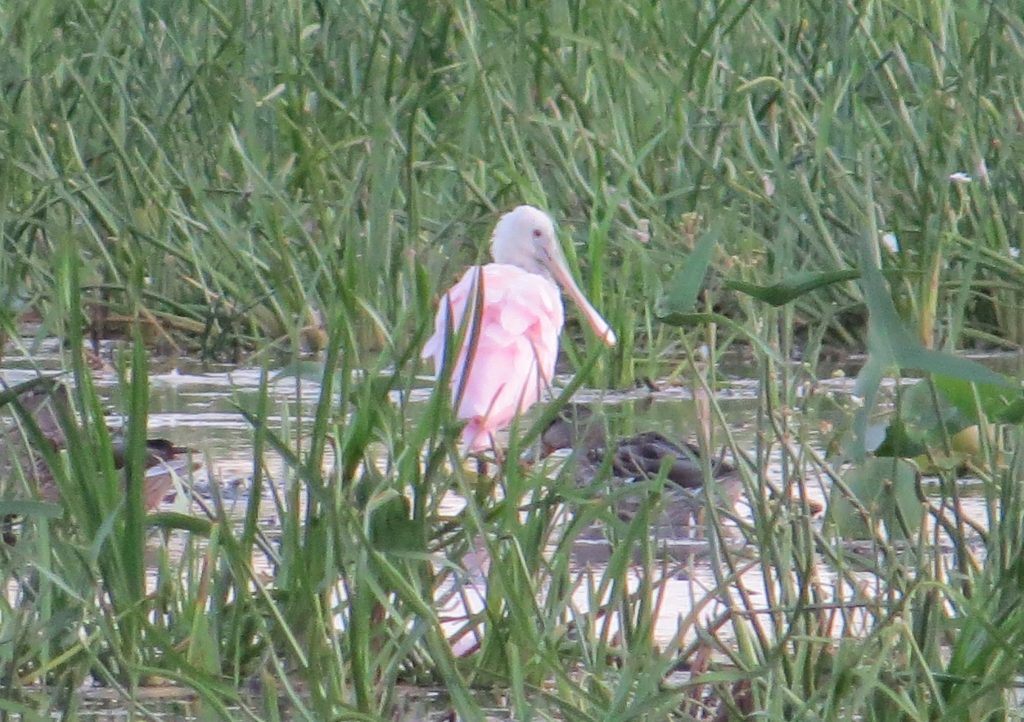
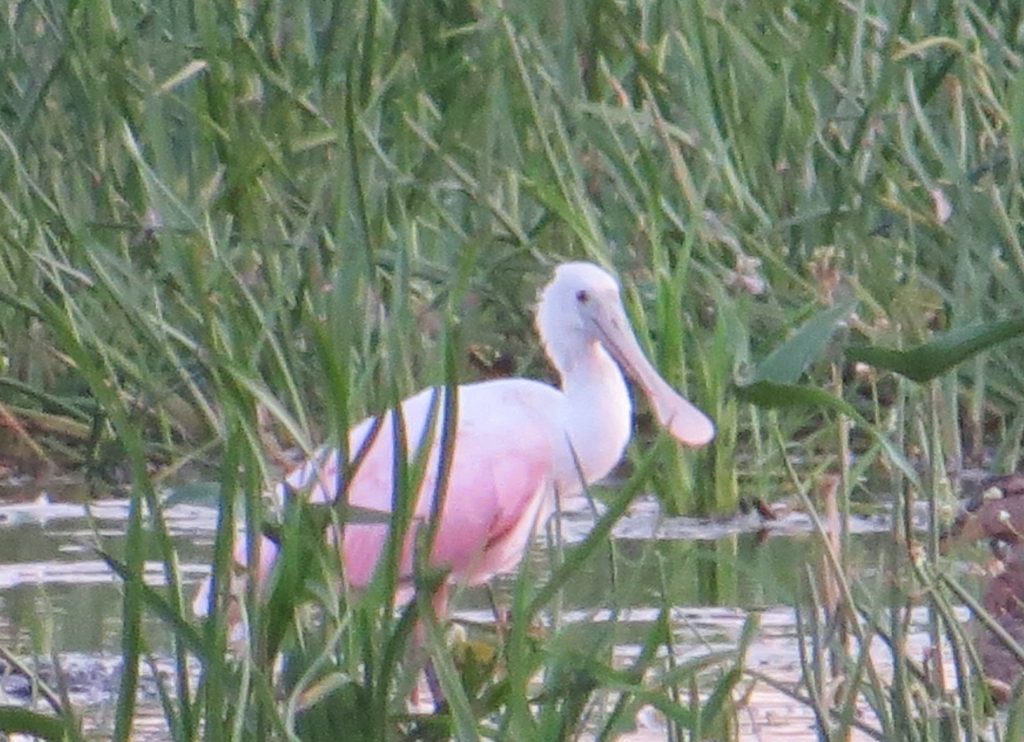
Despite everyone thinking the Spoonbill would stick, it left not long after Melissa and I saw it that evening, never to be seen again. Unfortunately, many Minnesota birders did not see it.
Tufted Duck–December 26, 2018
Speaking of state first records, 2018 began with one when a Tufted Duck showed up near Red Wing in January. Brad Nelson and I chased that bird but were not successful. When a state first record disappears, there is little optimism that there will be another chance. Except this time, there was! The only problem was that Kim Eckert’s second state record discovery in Duluth occurred just a couple weeks before Christmas. How in the world do you break free at that time of year? The short answer for me is that I couldn’t. Thankfully the bird hung on, and I was able to nab it en route to visiting Melissa’s family up north. Getting a lifer this good, this conveniently, and this quickly felt like cheating. It wasn’t the striking male that was found in Red Wing, but you can’t really complain when you get a do-over like this.
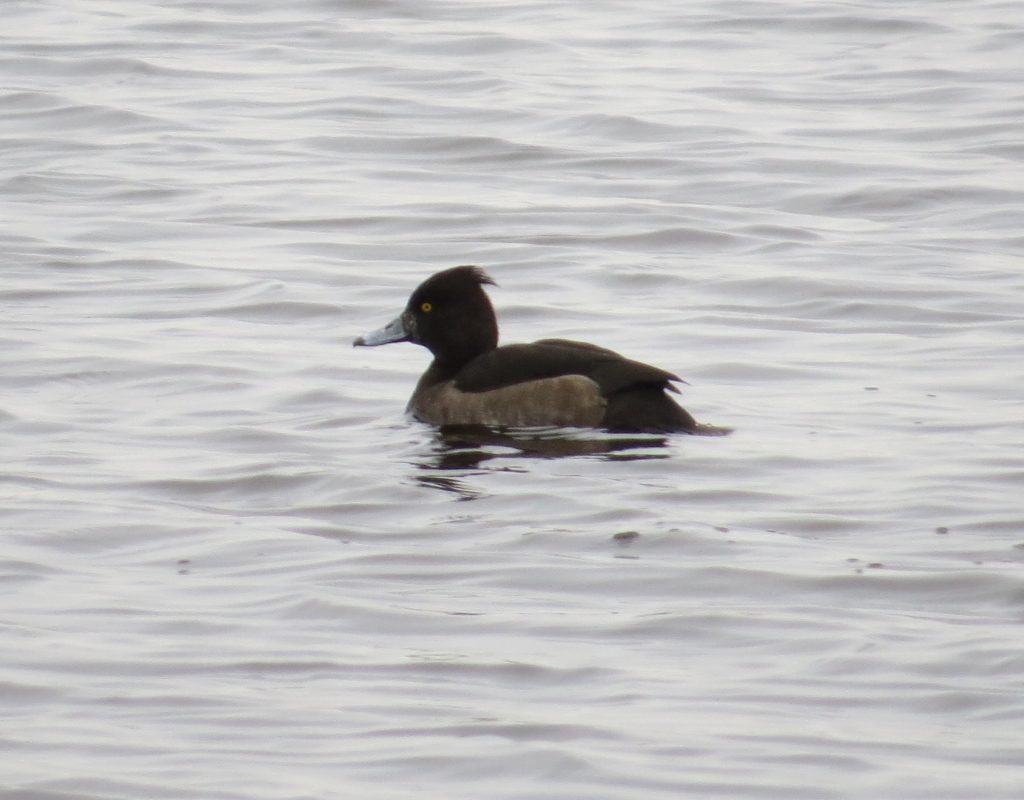
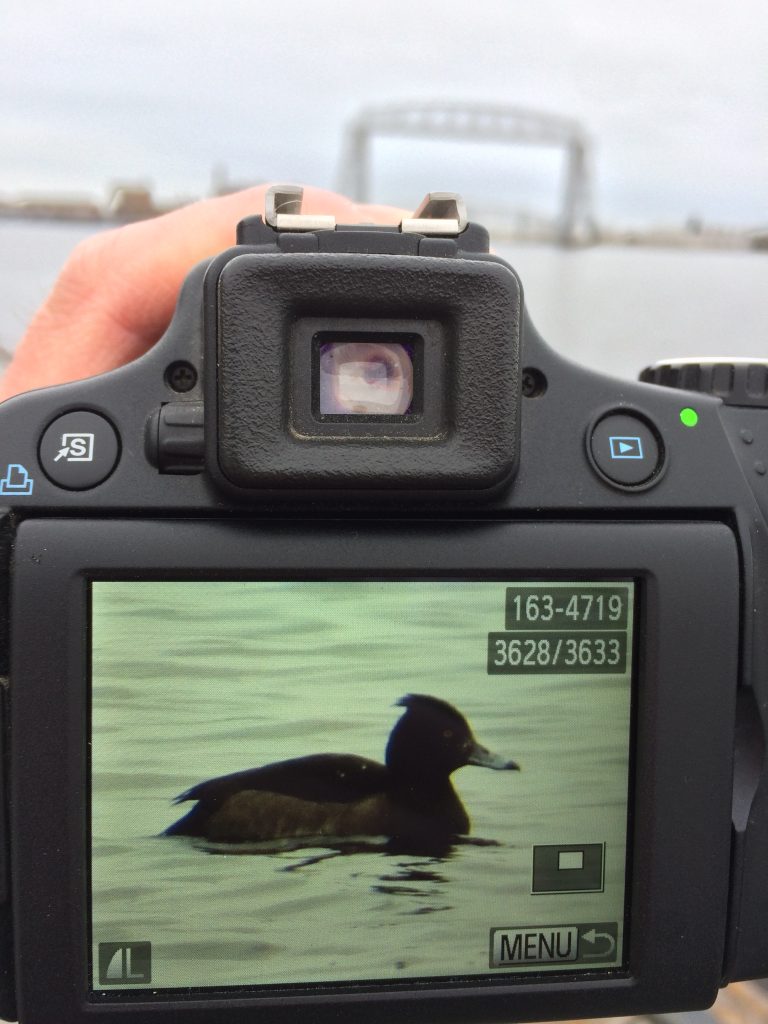
Duluth, the city that just keeps on giving….
A funny note is that a third state record Tufted Duck, a male, showed up this past spring just an hour from my house. However, I had no camera at the time and was stuck at work anyway.
King Eider–January 5, 2019
We had barely been back home from being up north when another incredible duck was found in Duluth, creating an intense urge to return. Duluth power-birding couple, the Kraemers, discovered a juvenile male King Eider off Lake Superior’s Brighton Beach. King Eider is casual in Minnesota, so this was indeed a rare event. The last one I recall occurred back in 2013 when I was just getting into birding. So Steve Gardner, Scott Gardner, Joel Schmidt, and I carpooled for the up-and-down chase to Duluth. When we arrived we didn’t find it, so we headed back to Duluth to look for the Tufted Duck which was still around. Joel had dipped on this bird on a previous chase while the rest of us had seen it. Thankfully it was cooperative for Joel this time. For the rest of us, it was a pretty sweet year bird for the fresh new year. During this side trip of ours, Doug Kieser had refound the King Eider and gave directions on where to spot the very distant duck. So during our second time at Brighton, we were able to get diagnostic scope views but no photos. Even still, it was a key lifer that pretty much has given me the rare duck-sweep for MN with the exception of Garganey.
Brambling–January 31, 2019
Minnesota experienced one of the coldest winters I can recall, but the birding scene just kept getting hotter when Beau Shroyer announced that he had a Brambling visiting his feeders in rural Becker County. This was about a 3-hour drive for me one way, but it may as well have been across the country because Minnesota was going through the infamous Polar Vortex at the time. With windchills in the -50s, most schools were cancelled for multiple days due to cold. Sure, I had three unplanned days off which would be perfect for a chase, except for, you know, temps that could literally kill you if your car broke down (which is more likely in extreme cold). So I fretted for days, monitoring Beau’s daily updates as well as updates from birders that were braver than me. I distracted myself by working on other life list activities.
And perfecting them.
Finally, I couldn’t take it anymore, the cabin fever had set in. On my third day off from work, I made a run for it with local birding friend Jeff Weitzel. Thankfully we had a safe trip, even if it was just a little chilly while we waited for the bird.
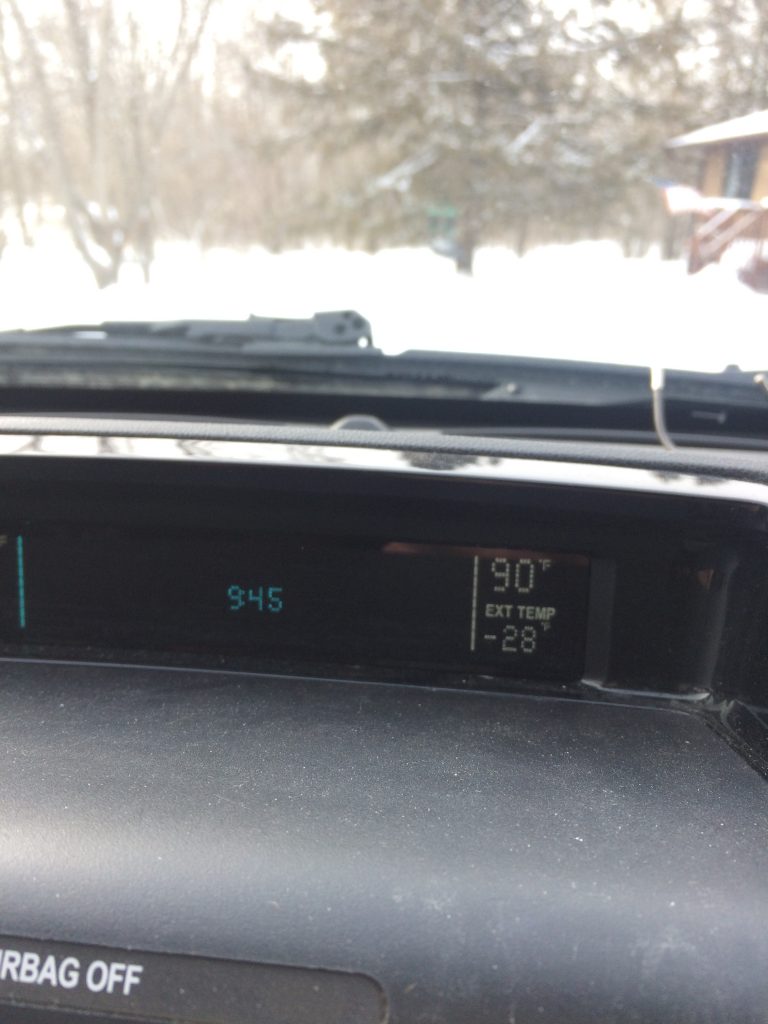
Finally, we saw it. I couldn’t believe we were looking at a Brambling. This is honestly a bird I never thought I’d add to my life list. A Hoary Redpoll was a nice little bonus, along with the more common, but uncommon to me, Purple Finches.
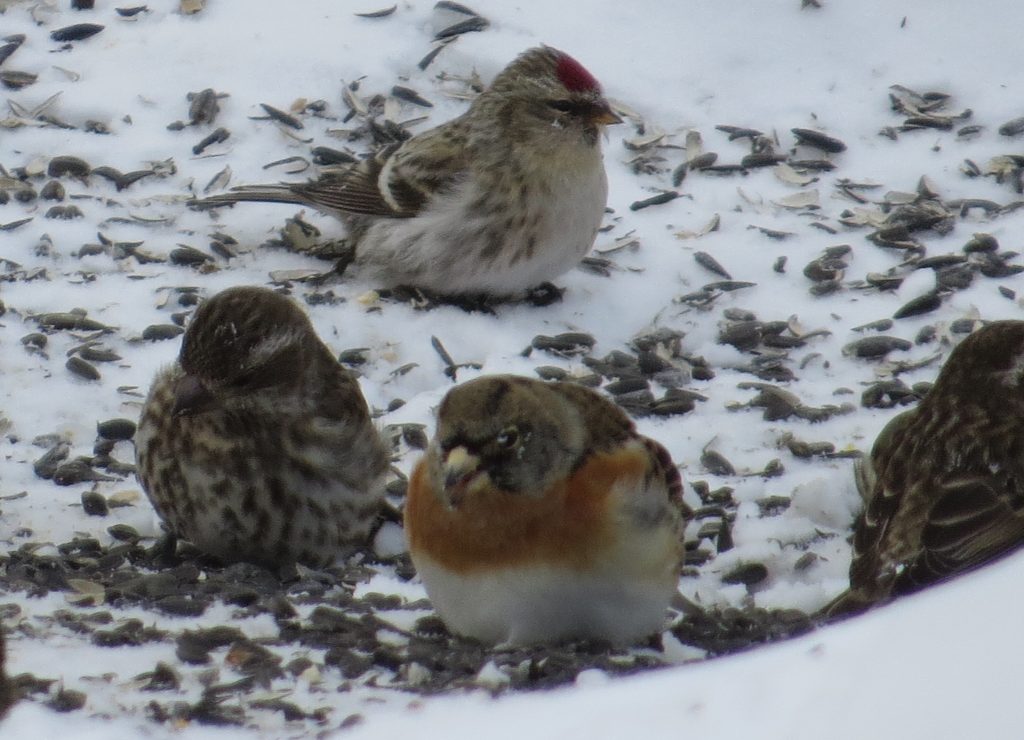
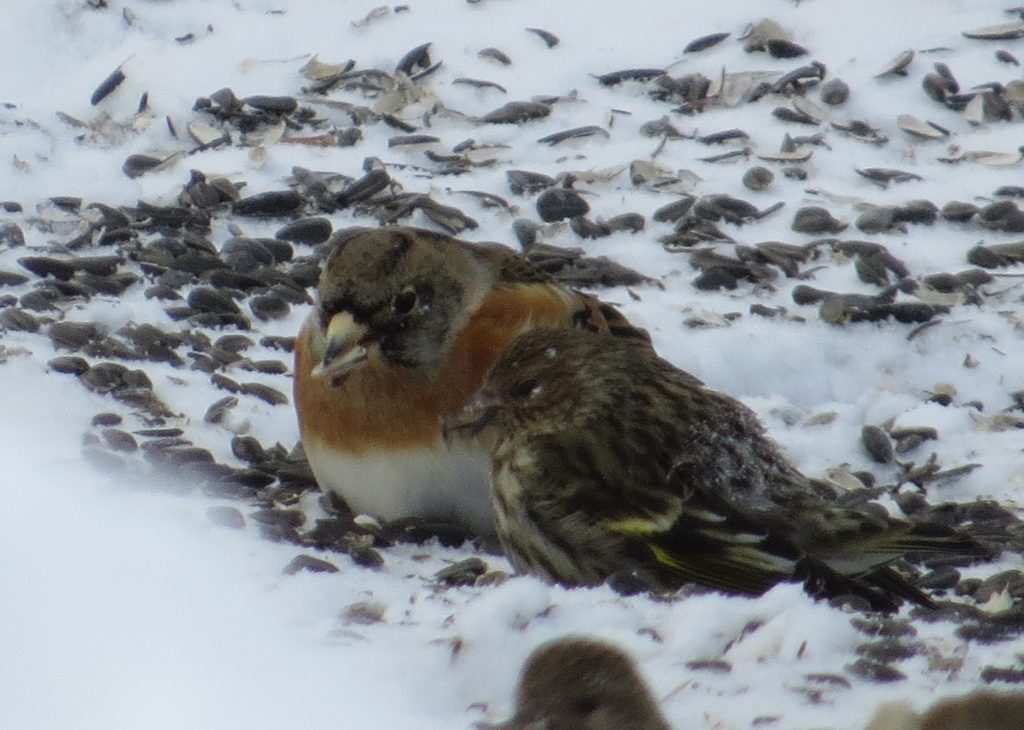
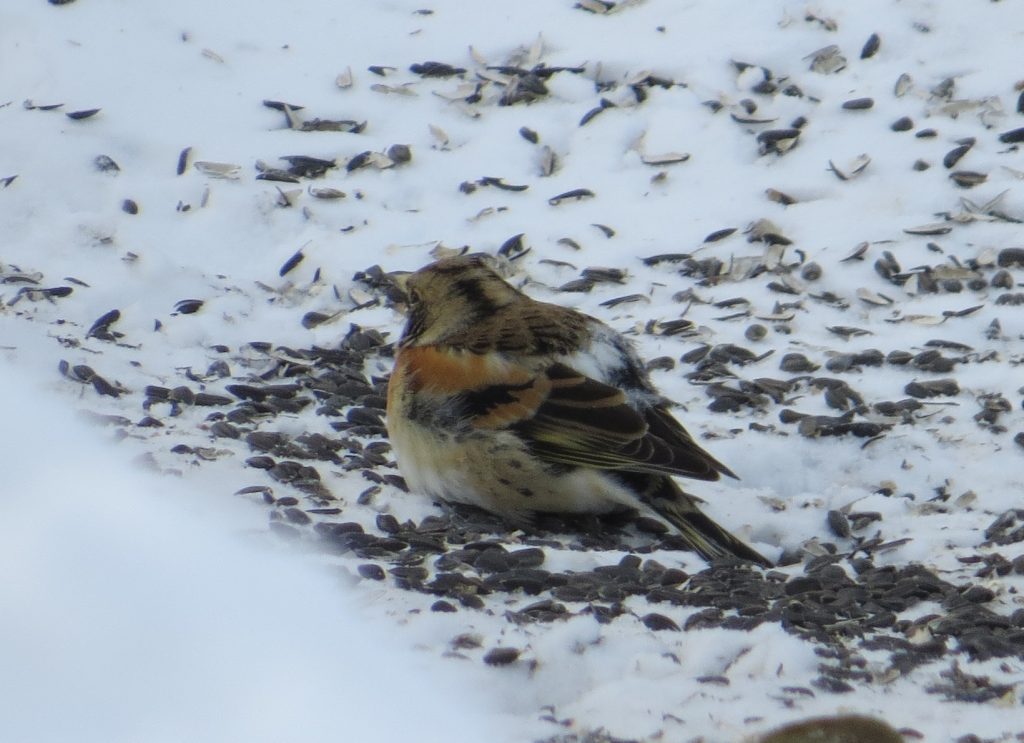 Beau was perhaps the most gracious stakeout host I’ve met. He generously shared this bird with other birders for days even though it meant his family had near constant vehicles right outside their living room. But with a yard scene this cool, it’s too good to keep to oneself.
Beau was perhaps the most gracious stakeout host I’ve met. He generously shared this bird with other birders for days even though it meant his family had near constant vehicles right outside their living room. But with a yard scene this cool, it’s too good to keep to oneself.
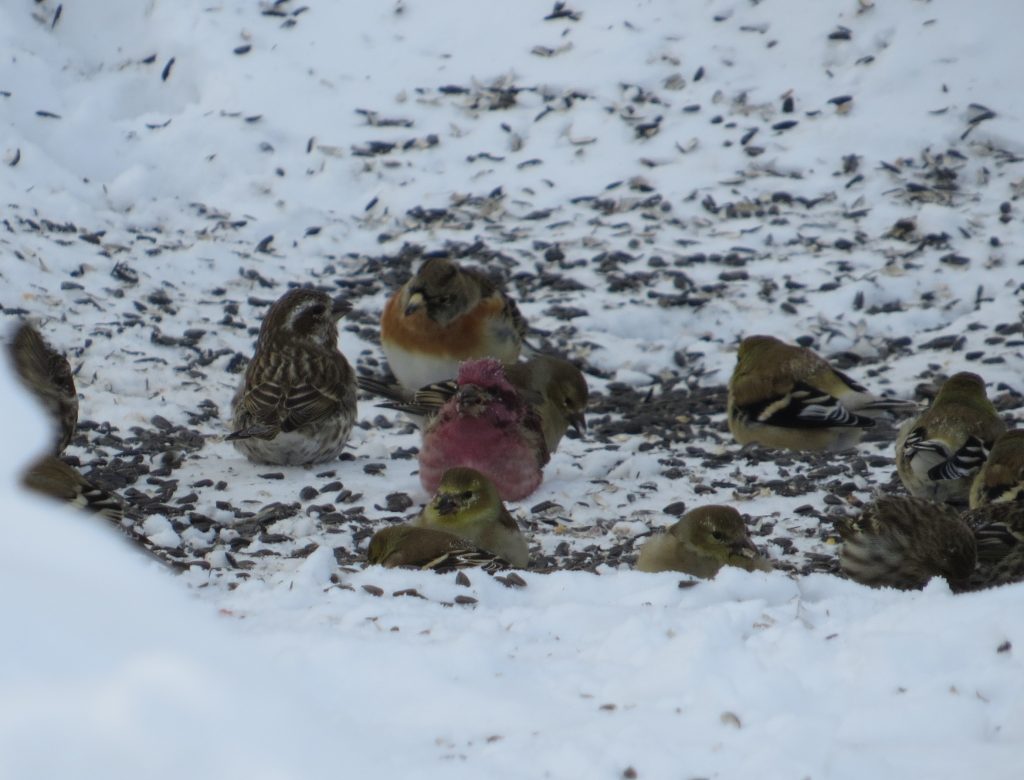
Yellow Rail–May 30,2019
The lowest hanging fruit on my life list in Minnesota is the Yellow Rail which breeds in the state. The most reliable place to tic this bird is the McGregor Marsh which is 3 hours away and in the middle of nowhere. Furthermore, this bird usually vocalizes very late at night (like close to midnight), which makes an up-and-down trip or an en route trip pretty much impossible for me. I knew it would have to be a dedicated trip someday with a hotel stay. Doing a night mission like this by myself far from home is less than ideal. It’s definitely a buddy situation. Problem is that most of my birder buddies already had this bird and wouldn’t be interested in this kind of field trip. But then inspiration hit when I asked Ben Douglas if he had the bird. Ben is doing an epic big year trying to get 10,000 county tics in 2019. Certainly an Aitkin County Yellow Rail would work for 0.01% of his goal. Plus, it turns out that Ben also needed the Yellow Rail as a lifer. So plans were made. We would tackle the McGregor Marsh on busy Hwy. 65 in the dark together and then grab a hotel in town. Ben and I picked the right year to do this. Birders who had been to McGregor Marsh earlier in the spring to look for Yellow Rails had reported incredible numbers–well over 20 birds sounding off. And they were found at several locations. Ben and I were definitely getting excited for our rendezvous with this lifer we have both put off.
On my last teacher day of the year, I drove up to Mora after work to meet Ben. After a nice chat and a little lunch, we killed daylight by bumming around Kanabec County boosting our respective Kanabec lists by a few dozen tics before finally heading north to the McGregor Marsh. I can’t imagine the work and mental strain Ben’s goal would take. Ben has to squeeze out county tics any way he can. For him, the grind never stops. While I followed his car and we were stopped on Hwy. 65 for some road construction, I was enjoying the AC and radio with the windows up when I get a text from Ben in front of me: an Aitkin County Pine Warbler and Golden-winged Warbler were having a duet right by the car. Ben had his windows down and his radio off–100% committed to his goal. I was impressed.
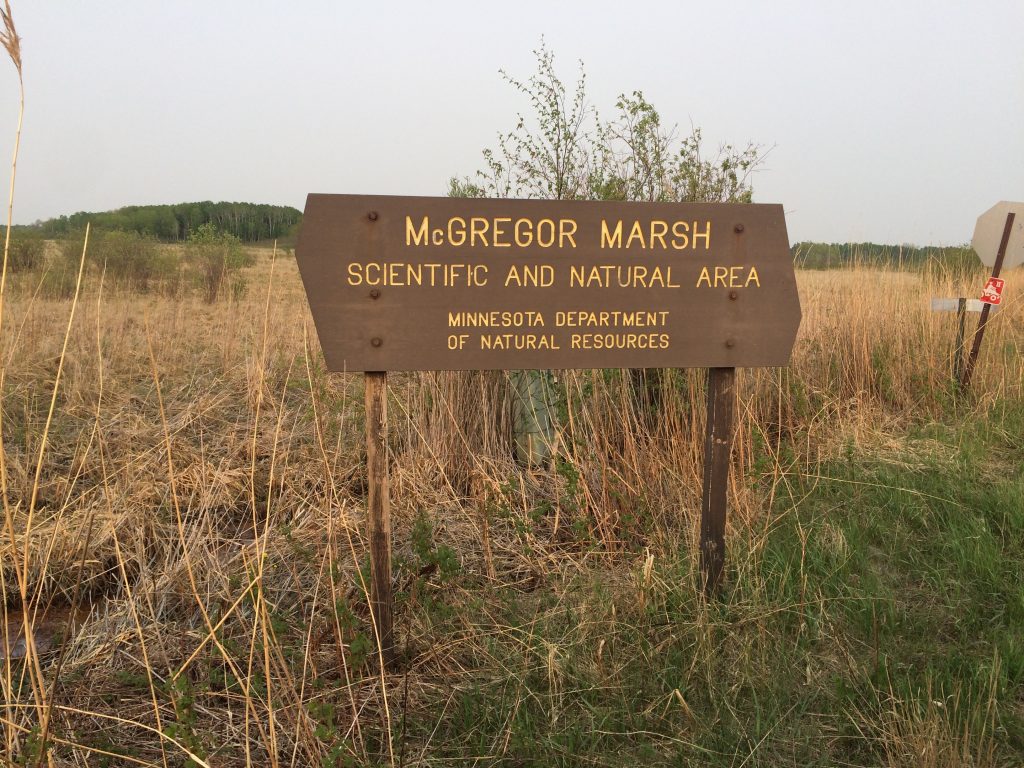
We got to the marsh with a little more than an hour of daylight left. We poked around on the Soo Line trail, a wide gravel railroad bed, that borders the south end of the marsh. Ben has superhuman hearing and was calling out birds far away. His ability to detect Ruffed Grouse drumming is uncanny, a gift really, and one I hope he will someday use in Kandiyohi County. At 7:45, well before dark, it was Ben who excitedly called out the tick-tick-ticking of our Yellow Rail lifer. Within minutes we had several calling around us. We tried for visuals for awhile before going to another nearby location. Once again, we heard the ticking of the Yellow Rails, but we just could not get a visual. Ben may have seen one briefly but did not get a solid look. It was okay, though, as this is what is to be expected with this species. Talking it over, we realized we got we came for and each had time to get home before midnight. No hotel was necessary for this trip. After saying our goodbyes and congratulating each other, we split ways. It was a good box to check on our life lists, made even more fun by sharing it with someone else. And for those of you that are curious, at the writing of this post Ben is at 86% of his goal with half the year left.
Prairie Warbler–June 3, 2019
I have wanted to see a Prairie Warbler for a very long time. Warblers are what got me into birding, and I have seen an awful lot of them since those first days. Because my travels haven’t yet brought me to the southeastern U.S., I still had not tallied this striking bird. It is casual in Minnesota, which means it shows maybe once every five years or so. There hasn’t really been a chaseable one since I’ve been a birder. Steve Gardner and I talked of heading to the very southeastern corner of Iowa this summer where they are known to show up annually. Before we could make plans for that 7.5 hour drive, though, Dedrick Benz made a sweet discovery. Dedrick found a Prairie Warbler on territory in the very southeastern corner of Minnesota in Houston County. The prospect of cutting off 3 hours of drive time and getting this life bird in Minnesota were very enticing. Even though this bird was singing on territory, I was anxious to get down there before my trip to California a week later. Steve decided to join me and took a day of vacation for this Monday jaunt.
Finding the Warbler was not hard.
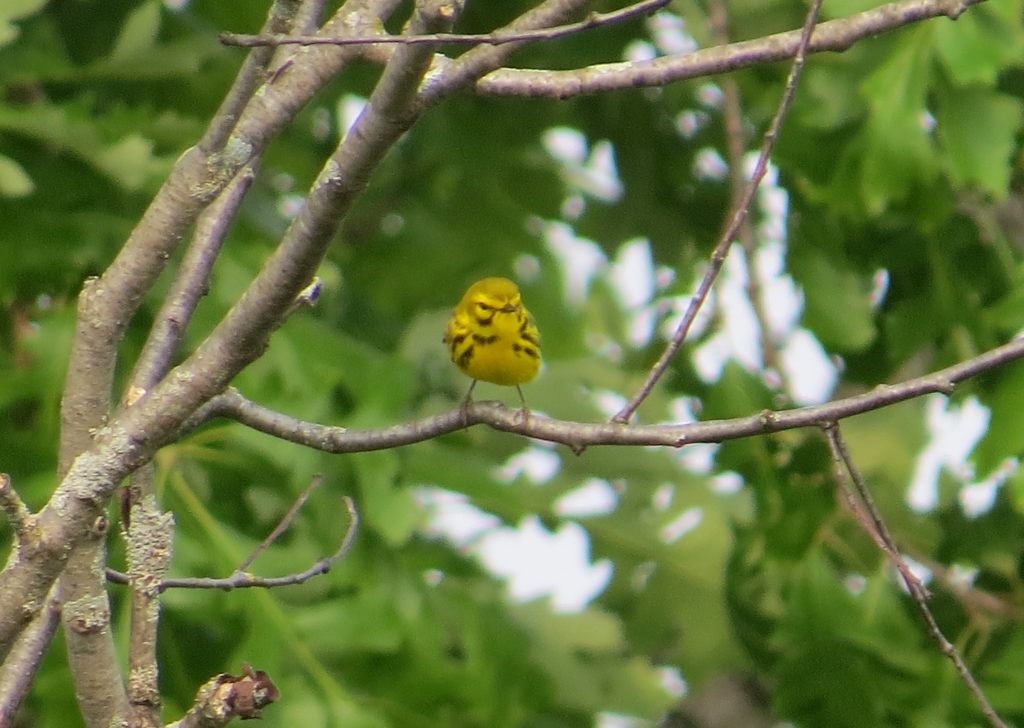 Birds that are long-hoped for seem more enjoyable than the random surprise birds. This one was a treat for the eyes and ears.
Birds that are long-hoped for seem more enjoyable than the random surprise birds. This one was a treat for the eyes and ears.
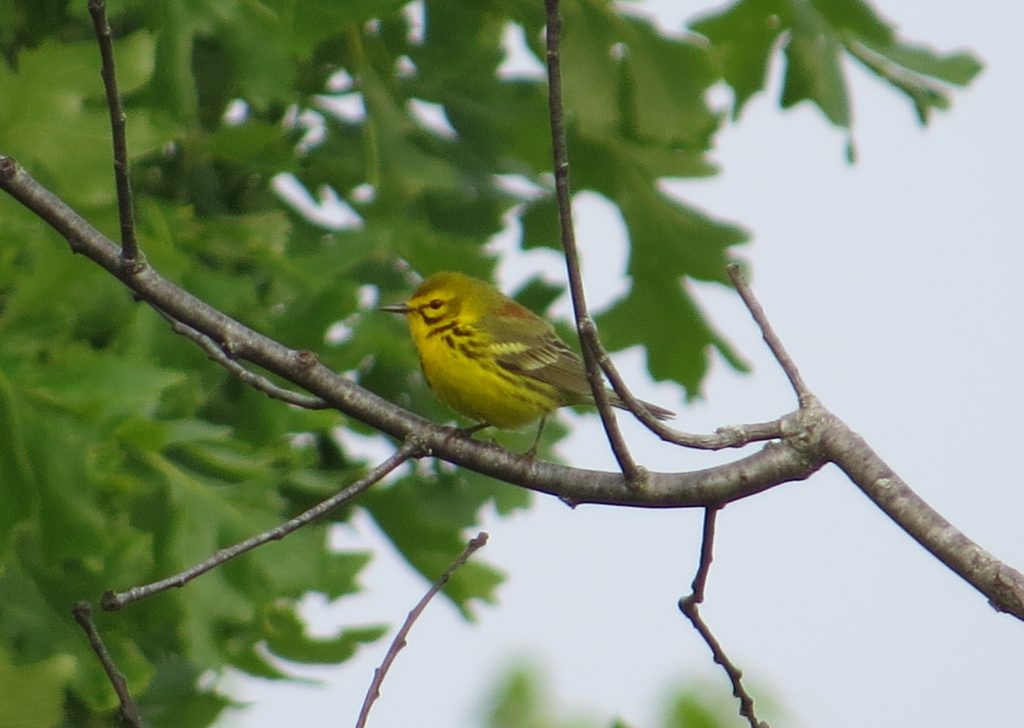
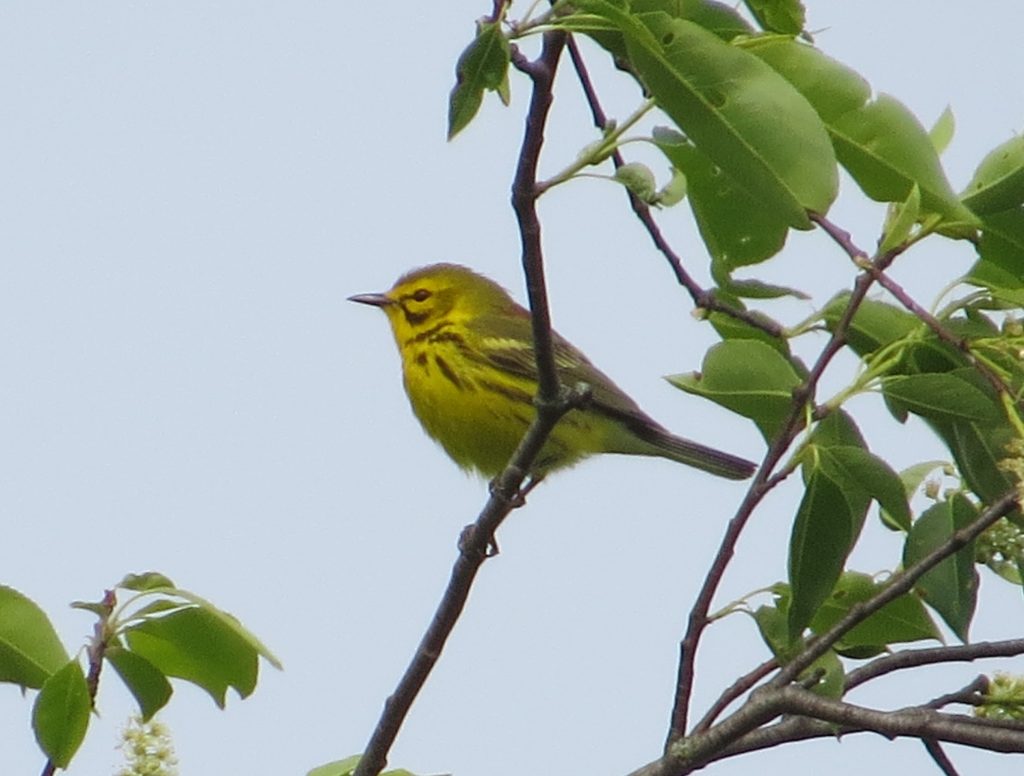 This bird was definitely the prize, but we also enjoyed numerous Henslow’s Sparrows and a Black-billed Cuckoo in the same area. We also made a stop a mile away for a White-eyed Vireo, also a casual species, found by Josh Watson in true Patagonia Picnic Table fashion. We got terrible looks at this bird before it disappeared. So it still remains as one of those birds I would like to see well since my other observation was a similar experience several years ago at Flandreau State Park in New Ulm. For Steve it was a state bird. Speaking of which, this trip to the southeastern part of the state allowed us to look for some overdue life birds for Steve. In Houston County we followed up on a report of an Acadian Flycatcher which we found no problem for Steve’s life list. A Cerulean Warbler singing nearby was a nice bonus.
This bird was definitely the prize, but we also enjoyed numerous Henslow’s Sparrows and a Black-billed Cuckoo in the same area. We also made a stop a mile away for a White-eyed Vireo, also a casual species, found by Josh Watson in true Patagonia Picnic Table fashion. We got terrible looks at this bird before it disappeared. So it still remains as one of those birds I would like to see well since my other observation was a similar experience several years ago at Flandreau State Park in New Ulm. For Steve it was a state bird. Speaking of which, this trip to the southeastern part of the state allowed us to look for some overdue life birds for Steve. In Houston County we followed up on a report of an Acadian Flycatcher which we found no problem for Steve’s life list. A Cerulean Warbler singing nearby was a nice bonus.
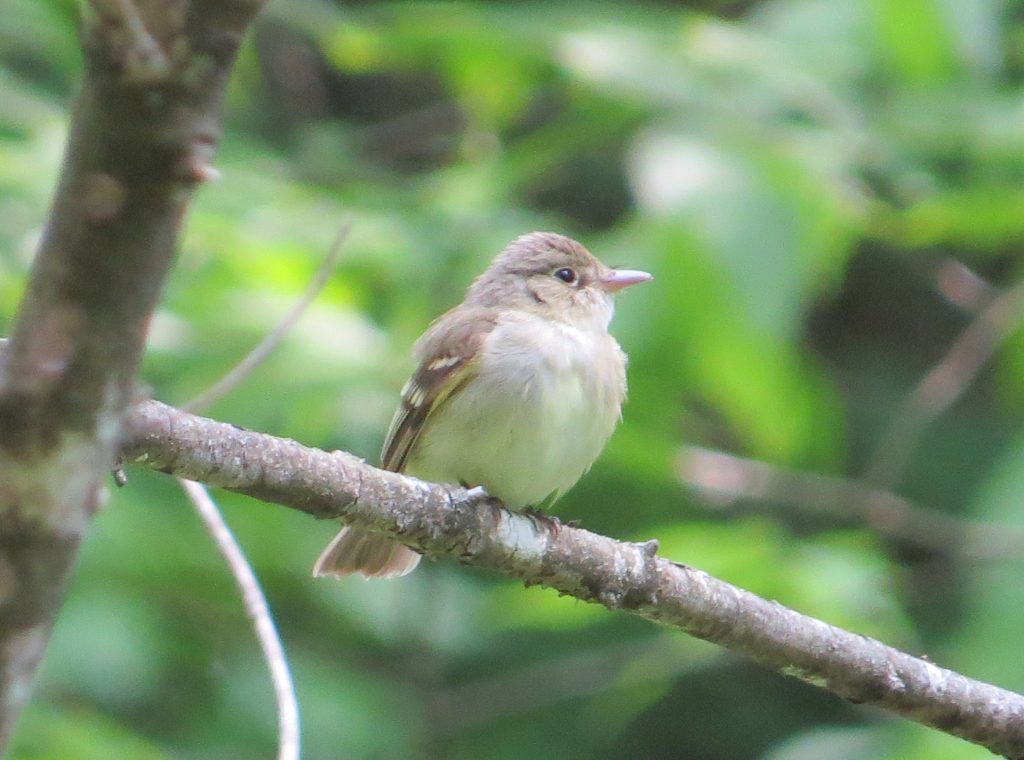 On the way home we stopped at Whitewater State Park and found Steve his lifer Louisiana Waterthrush thanks to some tips from John Hockema and some guiding from Malcolm Gold six years ago.
On the way home we stopped at Whitewater State Park and found Steve his lifer Louisiana Waterthrush thanks to some tips from John Hockema and some guiding from Malcolm Gold six years ago.
It was an incredible year for life birds right here in the home state. With my life list past the 500 mark, getting a life bird here is becoming more rare each year. Hopefully I can pull out another one or two in the coming school year.

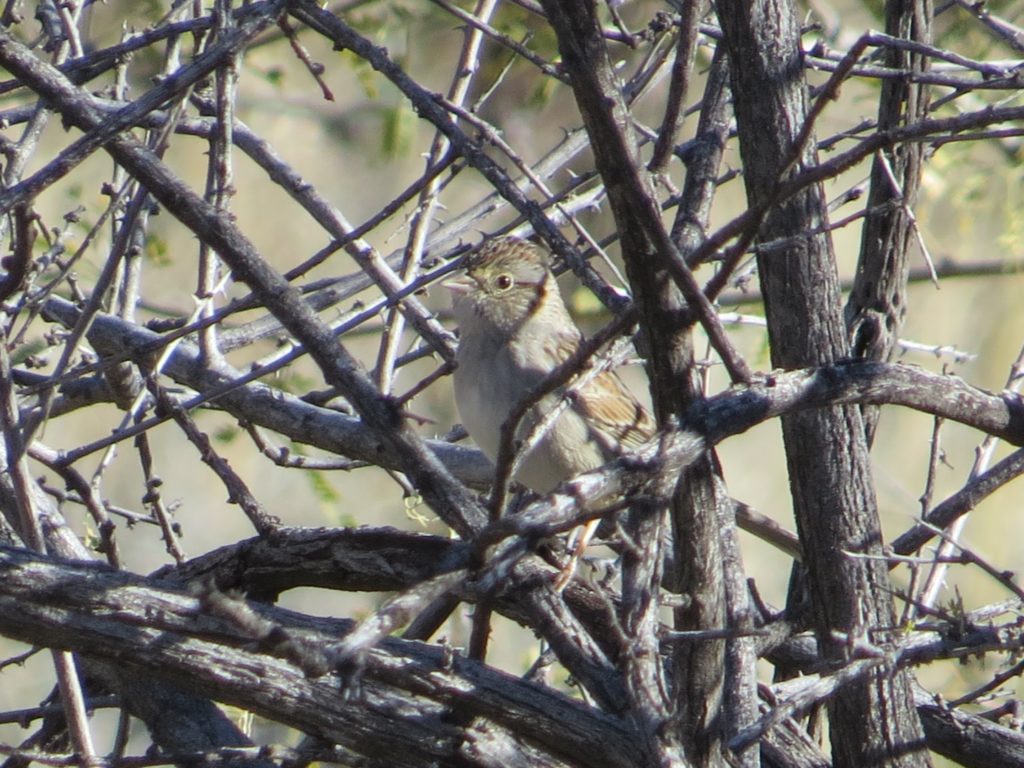
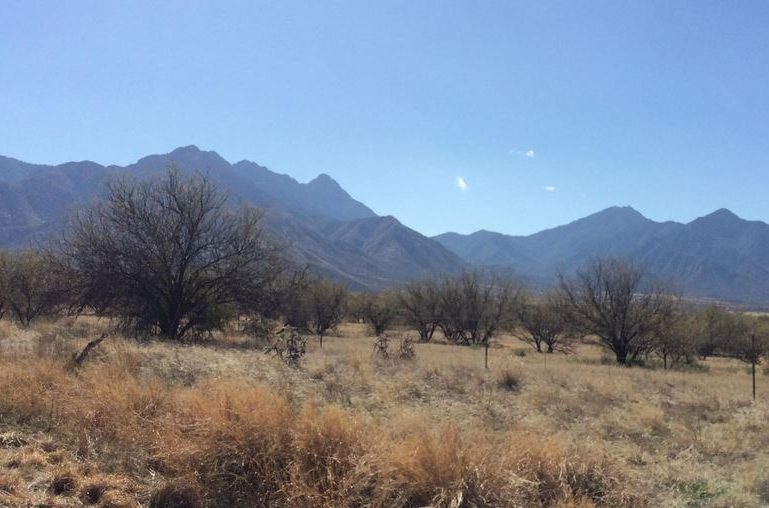
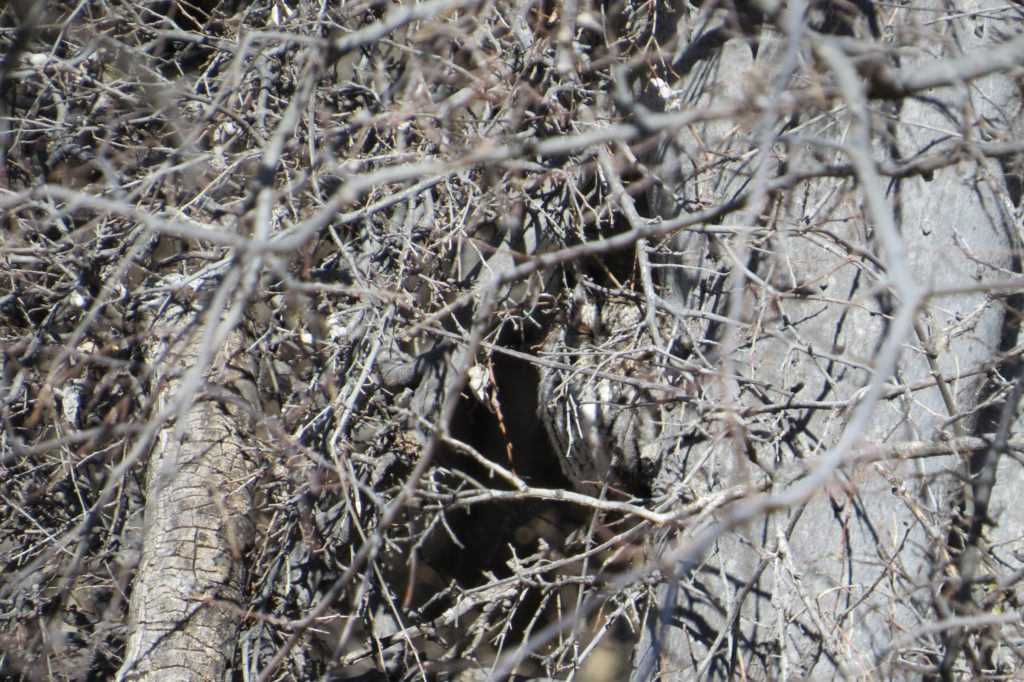 How someone spotted this thing I’ll never know. I could barely find it with multiple people pointing to it.
How someone spotted this thing I’ll never know. I could barely find it with multiple people pointing to it.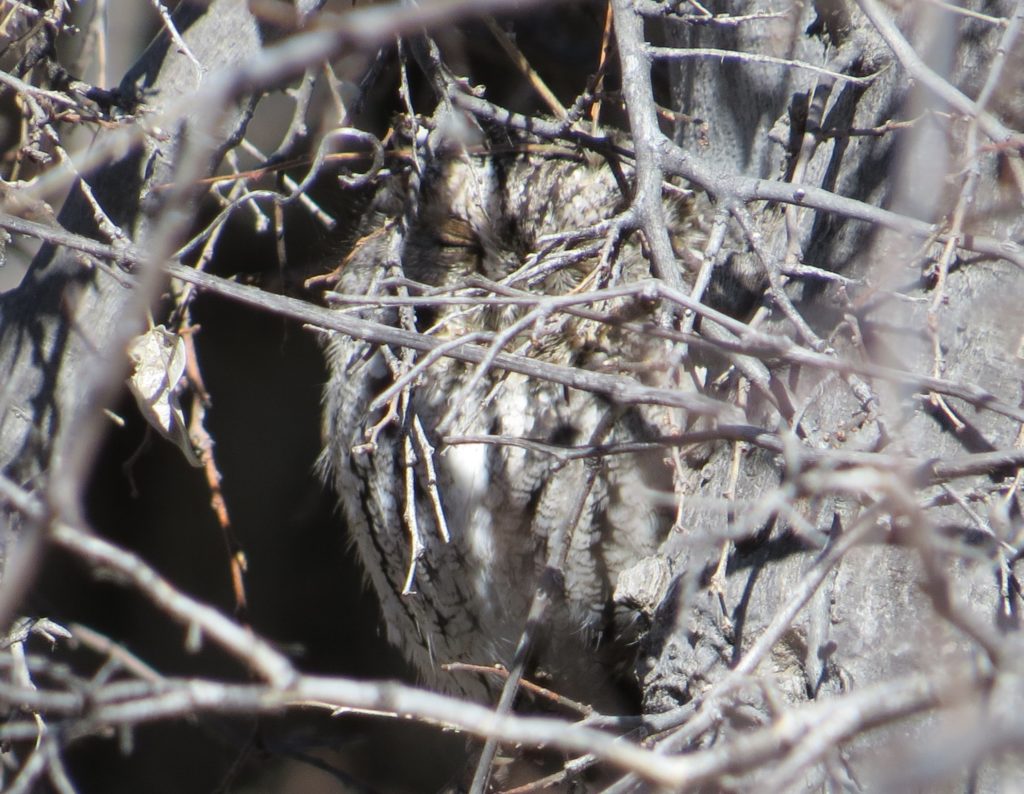 Tommy and I had barely resumed our Thrush sorting when I asked Tommy whatever happened to Caleb. I no sooner said those words, and the Boy came sprinting down the path toward us hollering (without breaking stride) that the Thrush had been spotted further up the trail. Caleb continued running and proclaiming the good news to everyone and their cousin, birders or not, that the White-throated Thrush was present.
Tommy and I had barely resumed our Thrush sorting when I asked Tommy whatever happened to Caleb. I no sooner said those words, and the Boy came sprinting down the path toward us hollering (without breaking stride) that the Thrush had been spotted further up the trail. Caleb continued running and proclaiming the good news to everyone and their cousin, birders or not, that the White-throated Thrush was present.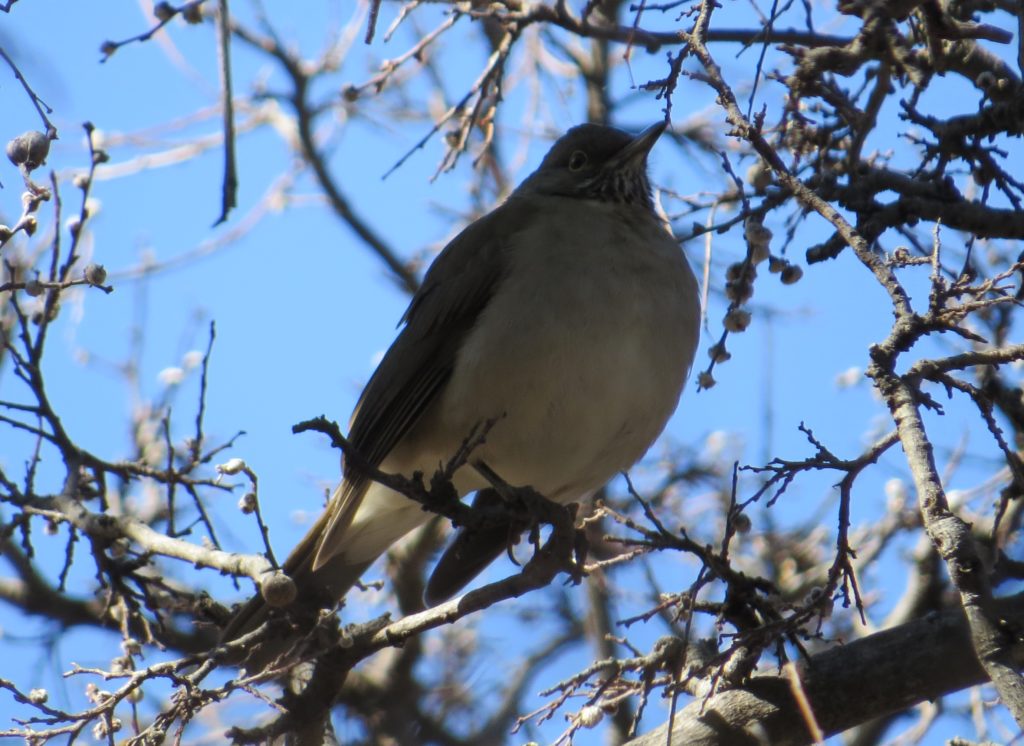
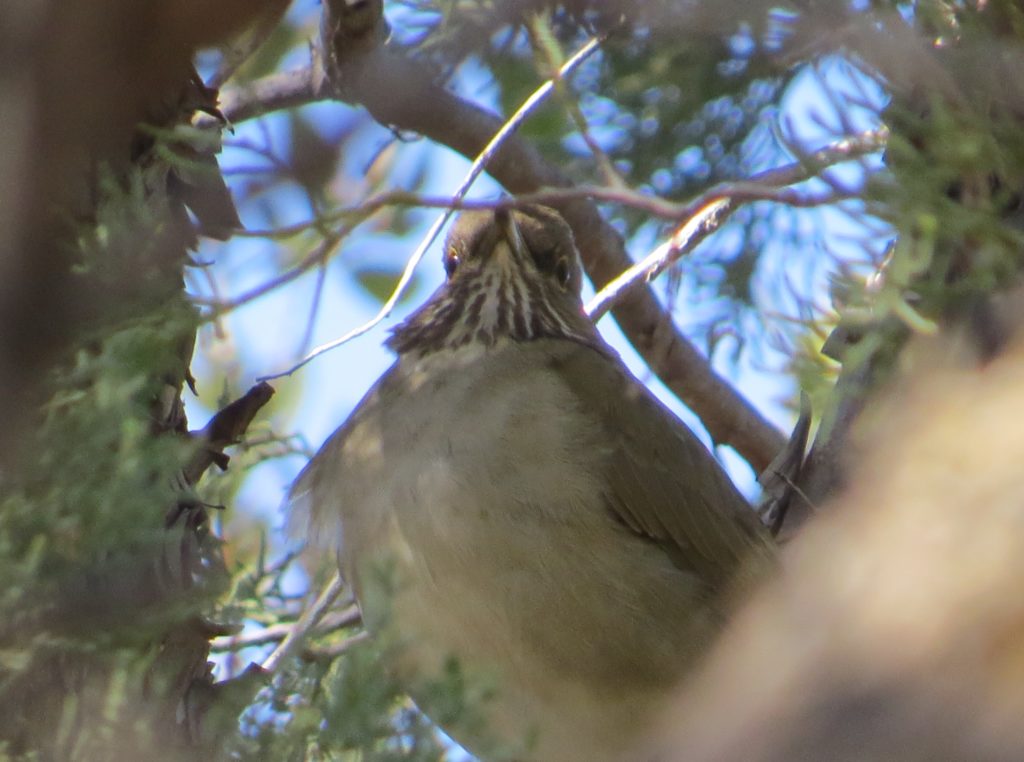
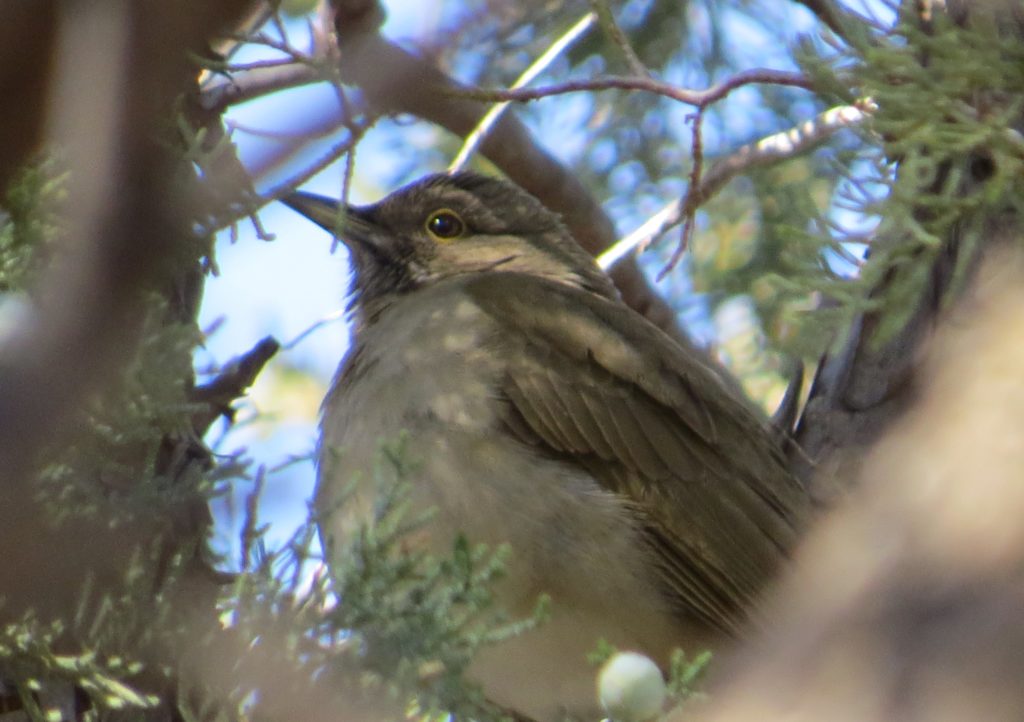 A bit of serendipity happened at the parking lot on the way out when a birder recognized Tommy. Turns out that birder was Linda Grant, the original finder of the famous Thrush. Linda had come back for better photos after her first ones were harried as bird photos can be when you realize you have a Mega and need to get the word out immediately. Tommy had written a great blog post on Linda’s discovery of the White-throated Thrush and on over two dozen birders’ reactions to the find. Linda and her husband were able to tell Tommy how much they enjoyed the post, and Tommy clearly enjoyed meeting this hero to hundreds of birders. A cool moment.
A bit of serendipity happened at the parking lot on the way out when a birder recognized Tommy. Turns out that birder was Linda Grant, the original finder of the famous Thrush. Linda had come back for better photos after her first ones were harried as bird photos can be when you realize you have a Mega and need to get the word out immediately. Tommy had written a great blog post on Linda’s discovery of the White-throated Thrush and on over two dozen birders’ reactions to the find. Linda and her husband were able to tell Tommy how much they enjoyed the post, and Tommy clearly enjoyed meeting this hero to hundreds of birders. A cool moment.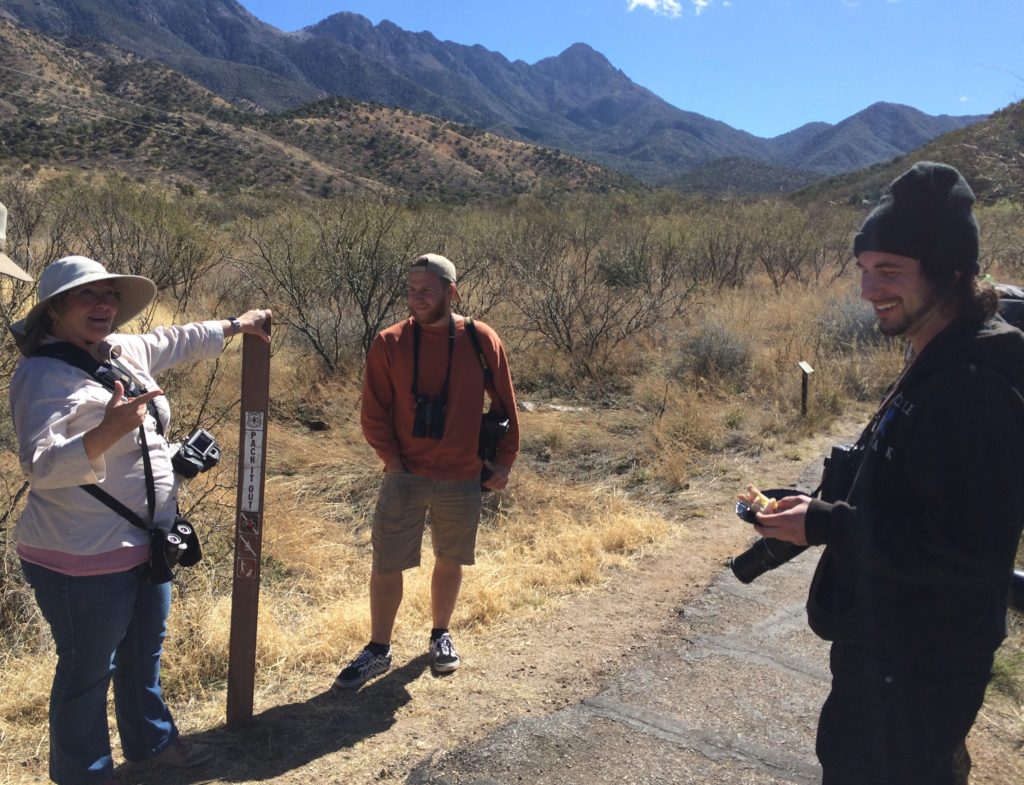
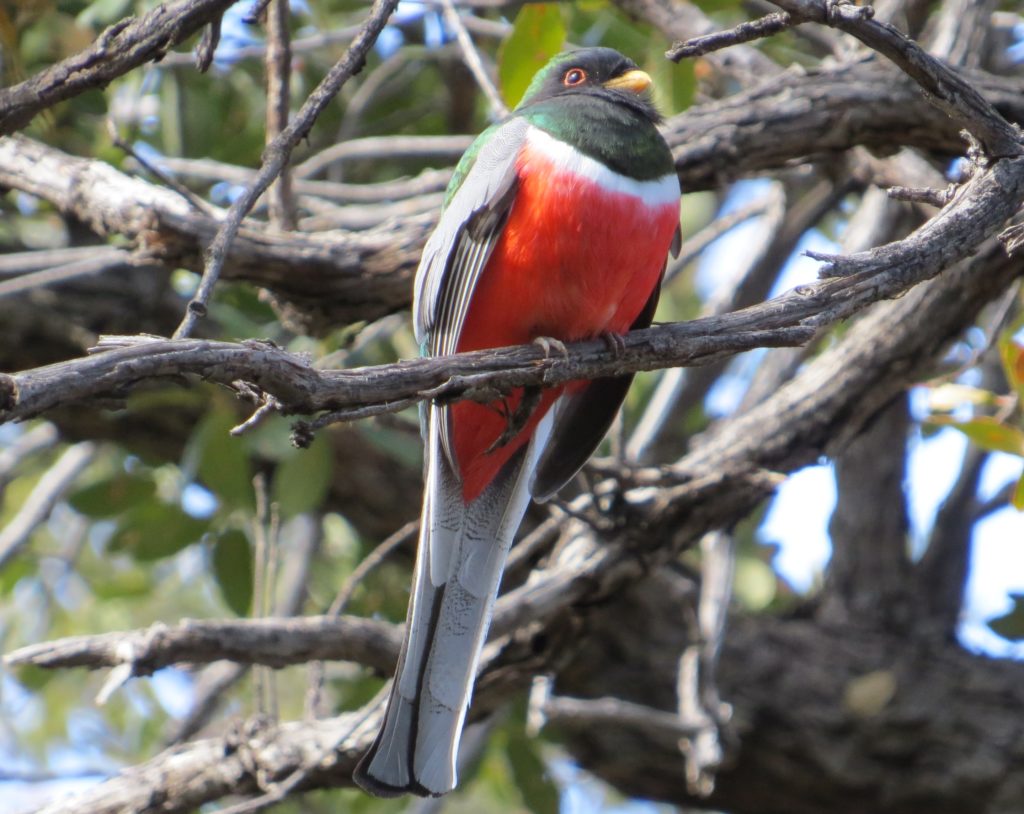 The Trogon was incredibly tame and would sit for long periods of time on a perch before moving a short distance, easy to find and easy to approach. SE AZ never ceases to amaze me. This was a stunning moment. And, AZ birders will have to forgive me, but this was just as big a thrill or bigger than the Thrush.
The Trogon was incredibly tame and would sit for long periods of time on a perch before moving a short distance, easy to find and easy to approach. SE AZ never ceases to amaze me. This was a stunning moment. And, AZ birders will have to forgive me, but this was just as big a thrill or bigger than the Thrush.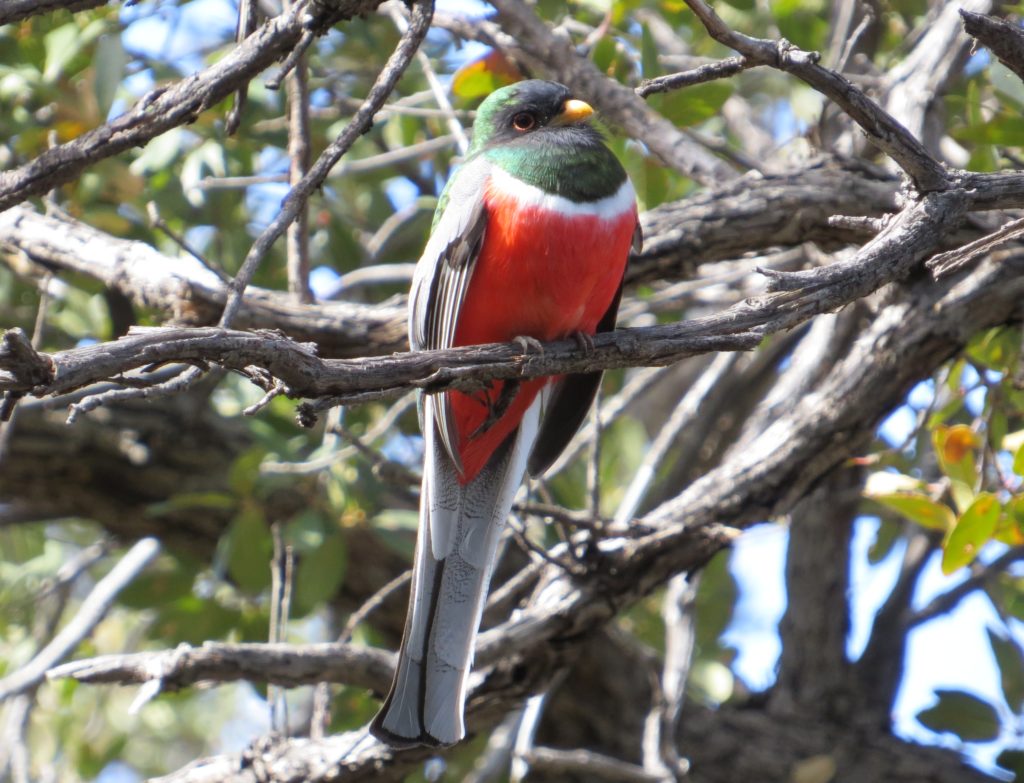 In 2015 my only real photo of the Elegant Trogon was from the back. This was a refreshing and a much yearned for change. I, of course, got to see the back this time too and once again admire that coppery tail that it was once named for.
In 2015 my only real photo of the Elegant Trogon was from the back. This was a refreshing and a much yearned for change. I, of course, got to see the back this time too and once again admire that coppery tail that it was once named for.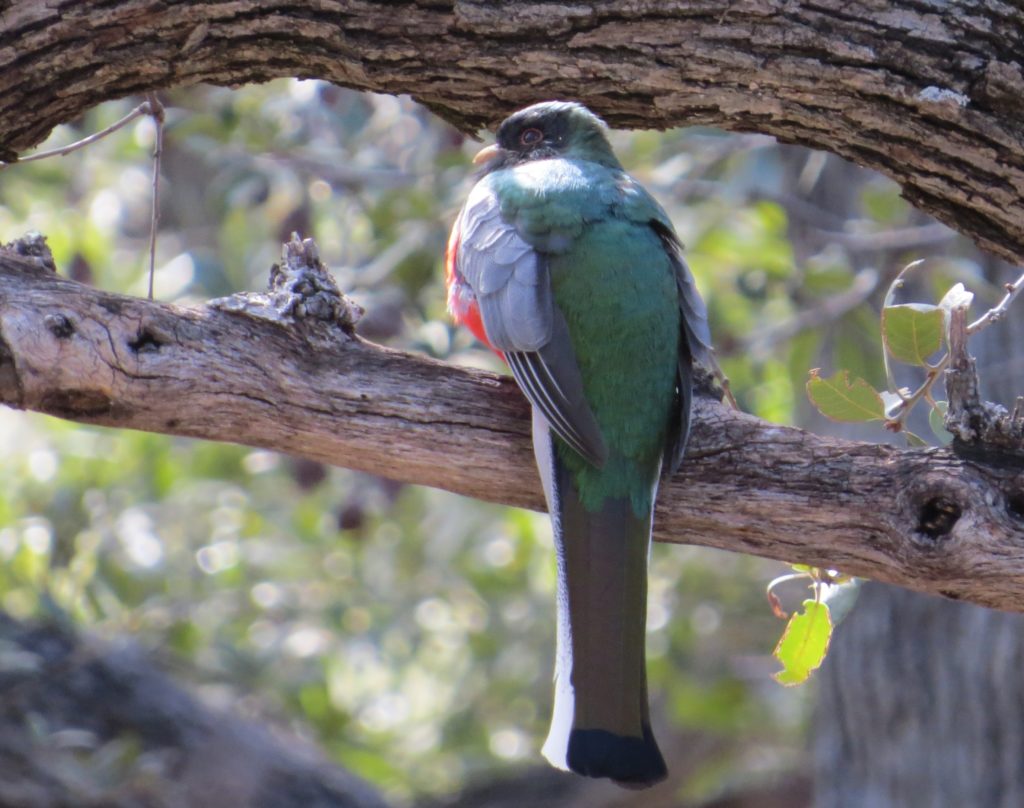
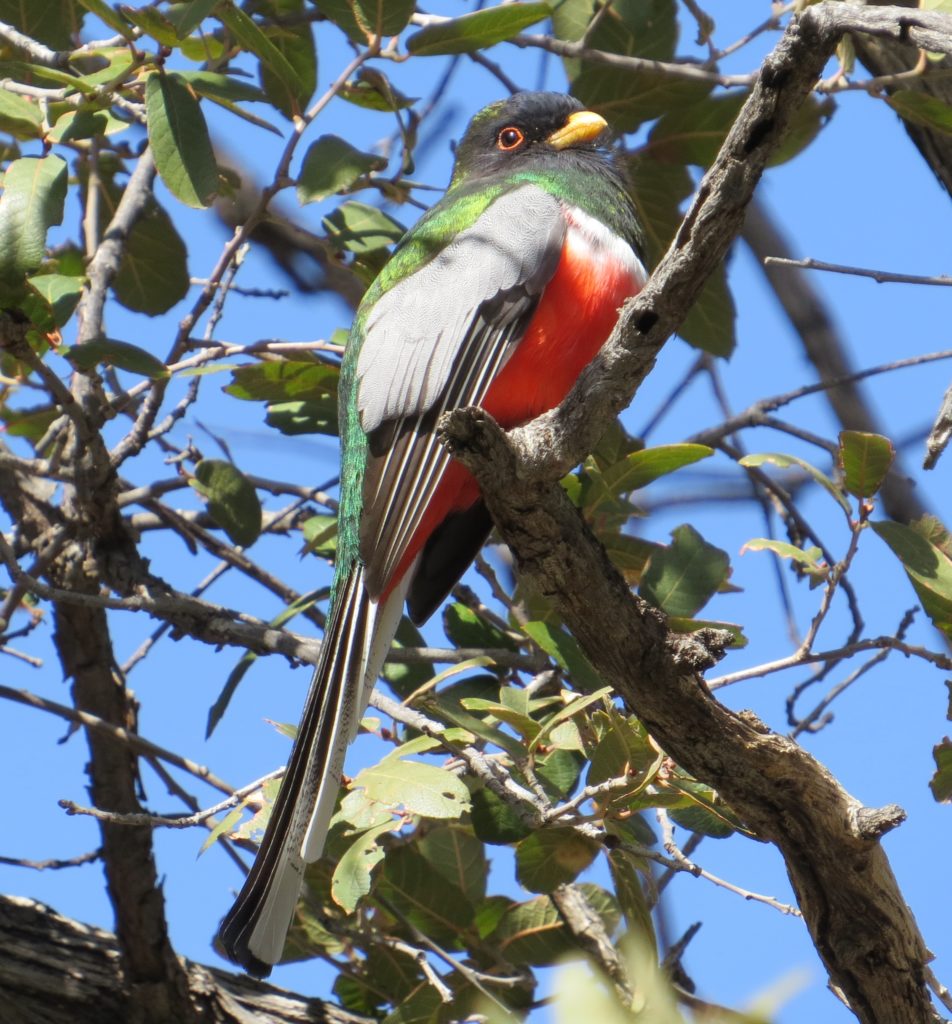
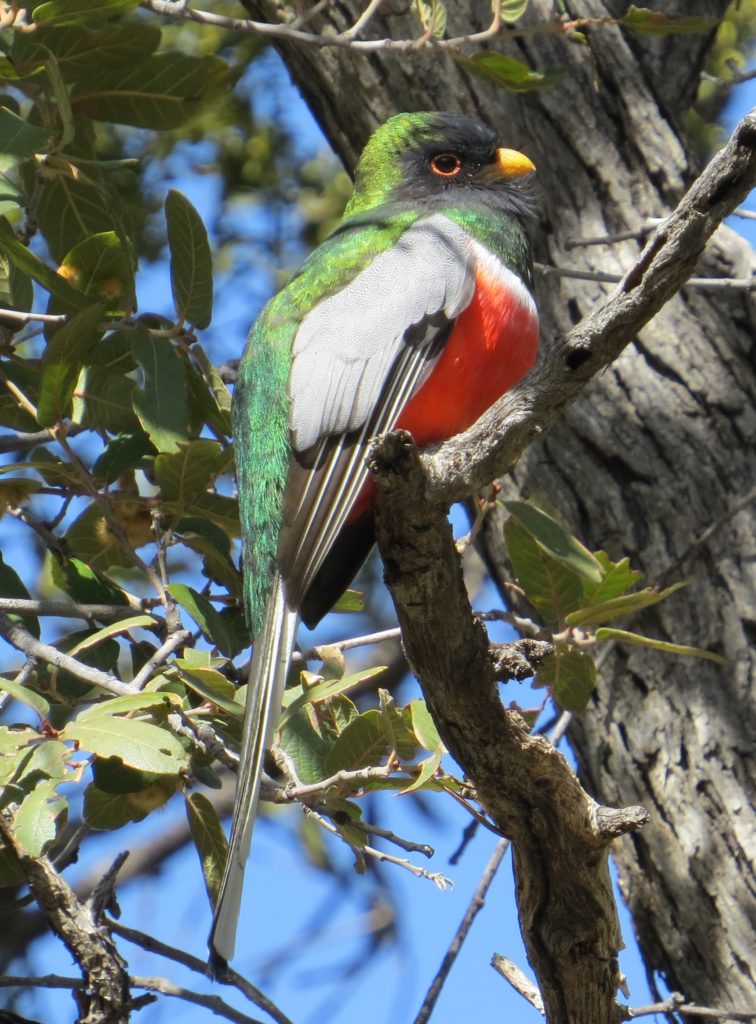 This was a Trogon-crushfest, enjoyed by even the most experienced of locals…
This was a Trogon-crushfest, enjoyed by even the most experienced of locals…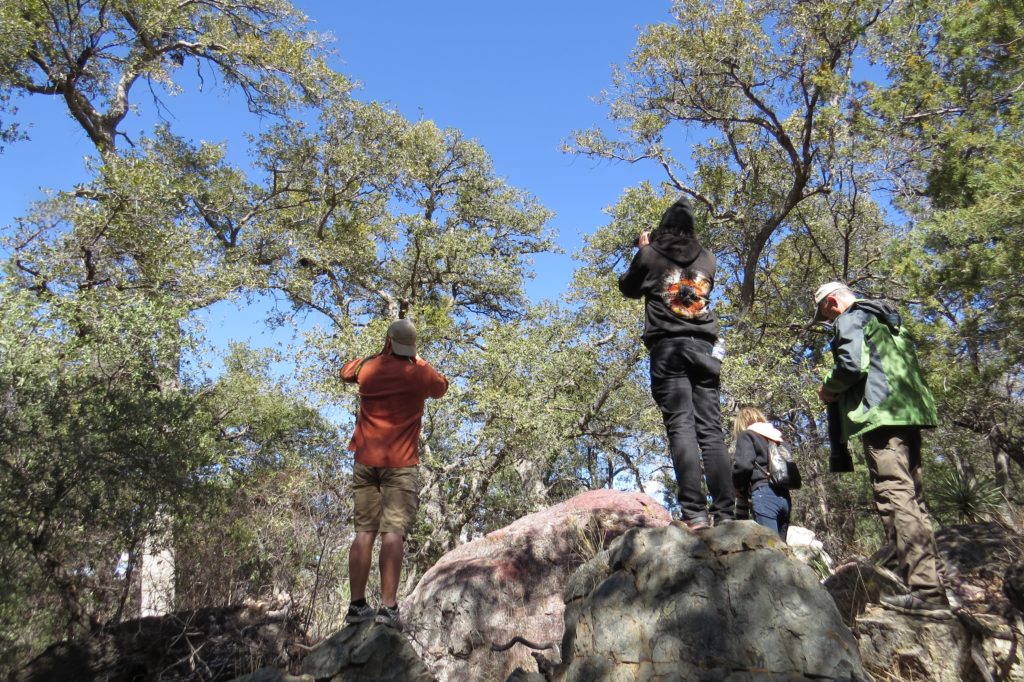
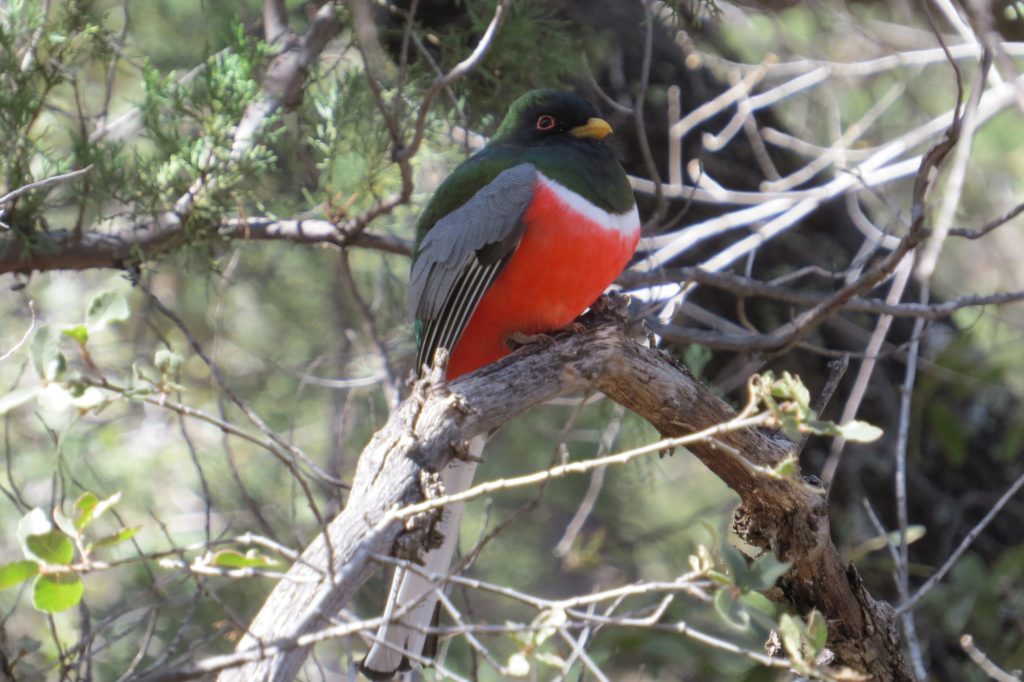
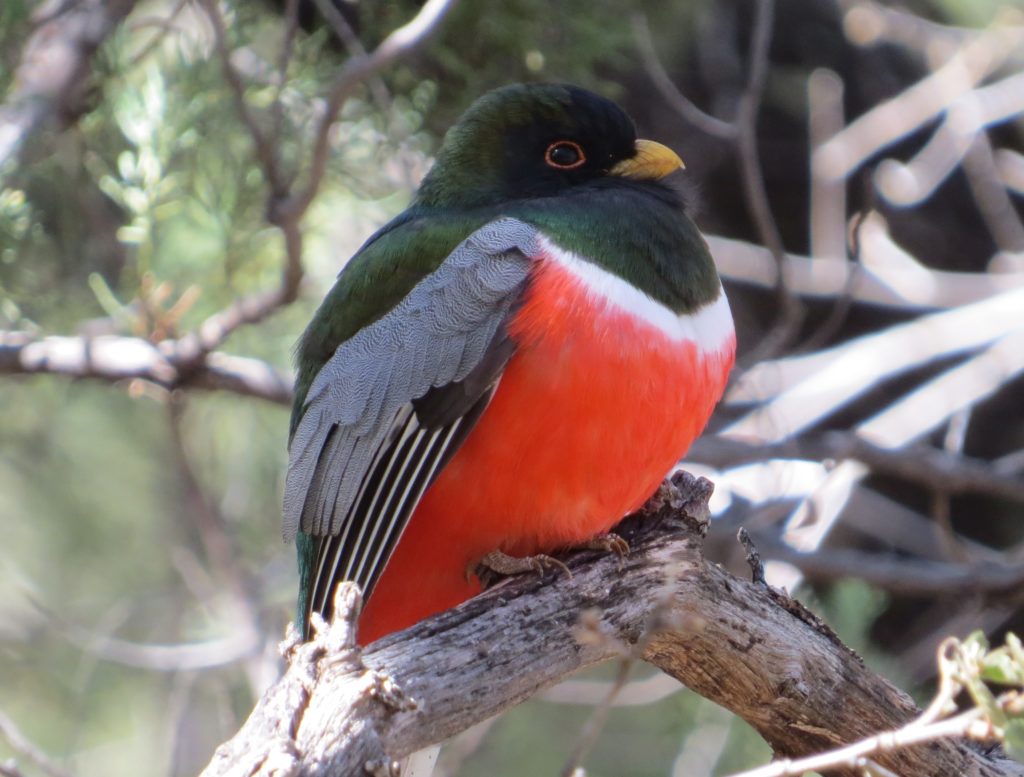 Obviously I had a hard time prying myself away from that bird, but the clock was ticking and the birding queue had a new line leader. Would I have liked to go to the Santa Rita Lodge and try to get a better look at a Blue-throated Hummingbird? Yes. Would I have liked to pick up some fresh Trogon gear at the gift shop? Also yes. But did I? Sadly, no. Time was slipping by, and the one bird I needed was in nearby Green Valley. Lawrence’s Goldfinches have irrupted this winter all over the place, and the Canoa Ranch was a stronghold for them. I needed to grab this bird while I could since this was the year for that bird. I have never seen reports of them in other years on my visits. But first we made a quick stop down by Proctor Road to look for a Black-capped Gnatcatcher. No dice, again.
Obviously I had a hard time prying myself away from that bird, but the clock was ticking and the birding queue had a new line leader. Would I have liked to go to the Santa Rita Lodge and try to get a better look at a Blue-throated Hummingbird? Yes. Would I have liked to pick up some fresh Trogon gear at the gift shop? Also yes. But did I? Sadly, no. Time was slipping by, and the one bird I needed was in nearby Green Valley. Lawrence’s Goldfinches have irrupted this winter all over the place, and the Canoa Ranch was a stronghold for them. I needed to grab this bird while I could since this was the year for that bird. I have never seen reports of them in other years on my visits. But first we made a quick stop down by Proctor Road to look for a Black-capped Gnatcatcher. No dice, again.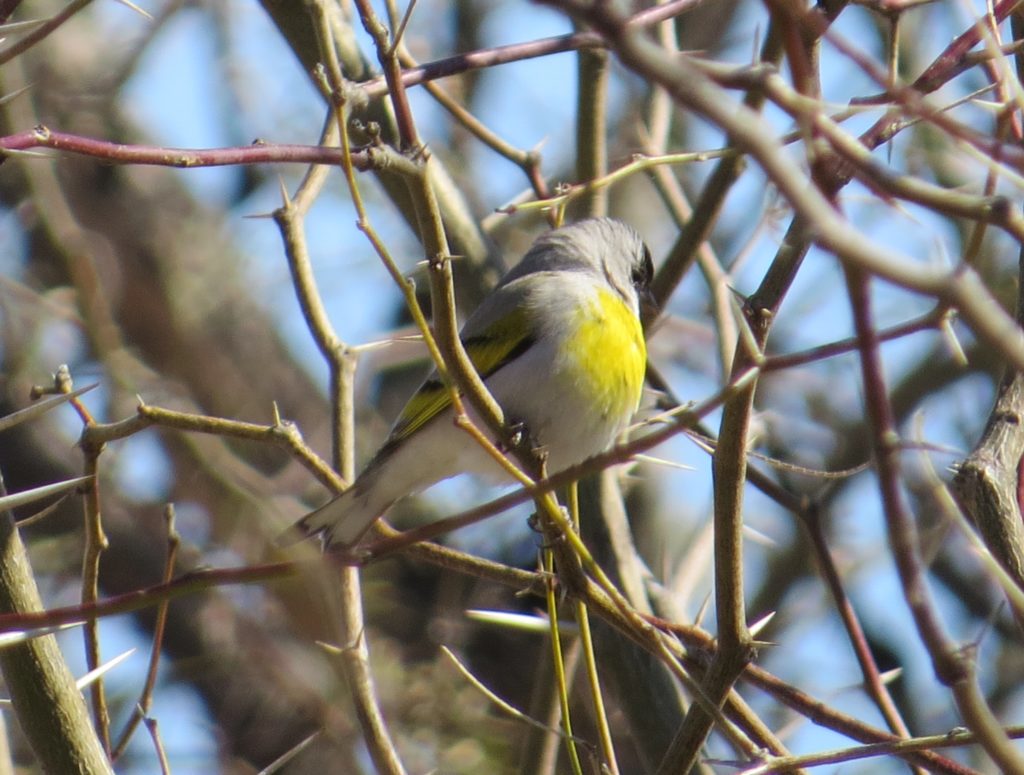 It was now time to bust back to Mom and Dad’s. Mom was putting on a spread for the birders and non-birders. By the end of the day we were all stuffed–with good food and good birds.
It was now time to bust back to Mom and Dad’s. Mom was putting on a spread for the birders and non-birders. By the end of the day we were all stuffed–with good food and good birds.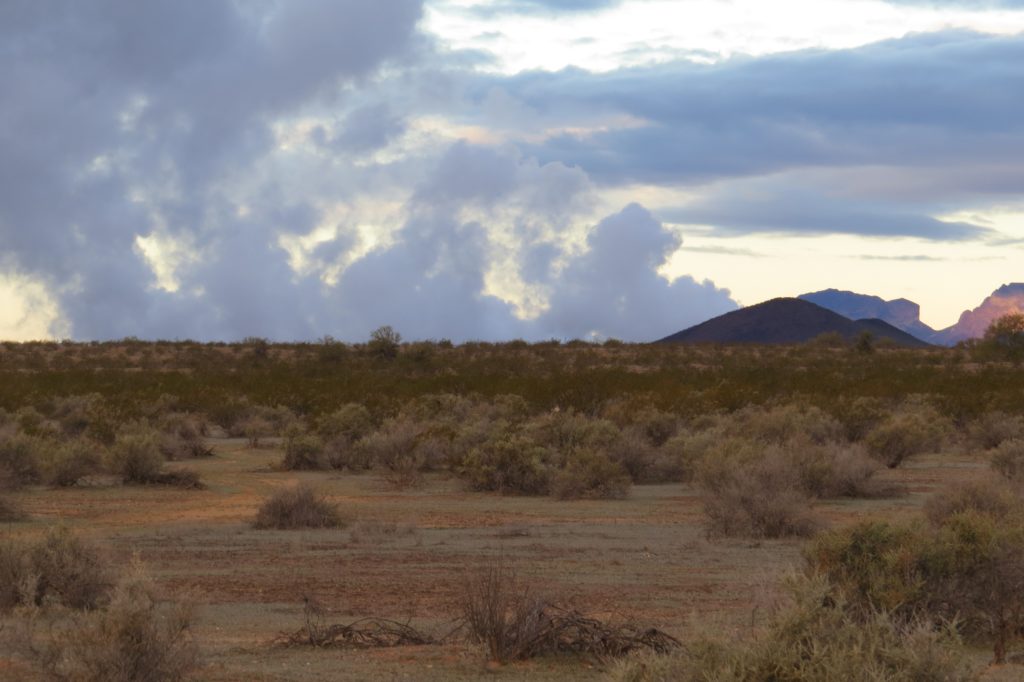
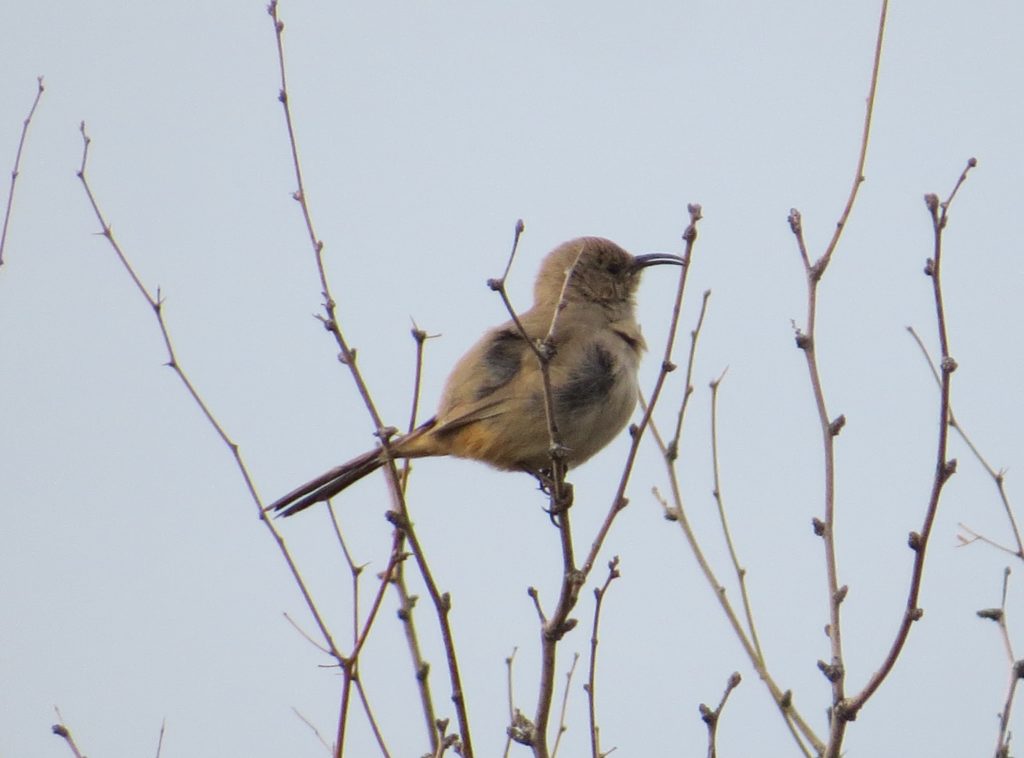 It was one lifer down with four to go. Two thoughts struck me on my first visit to the Thrasher Spot. One was that I couldn’t believe how flat the ground was.
It was one lifer down with four to go. Two thoughts struck me on my first visit to the Thrasher Spot. One was that I couldn’t believe how flat the ground was.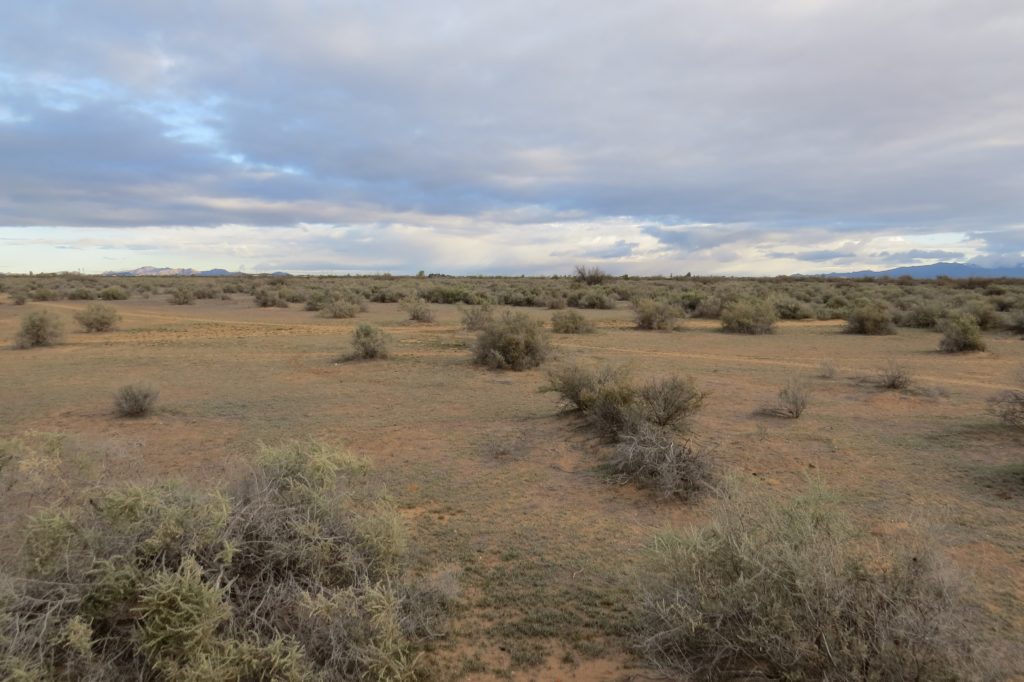
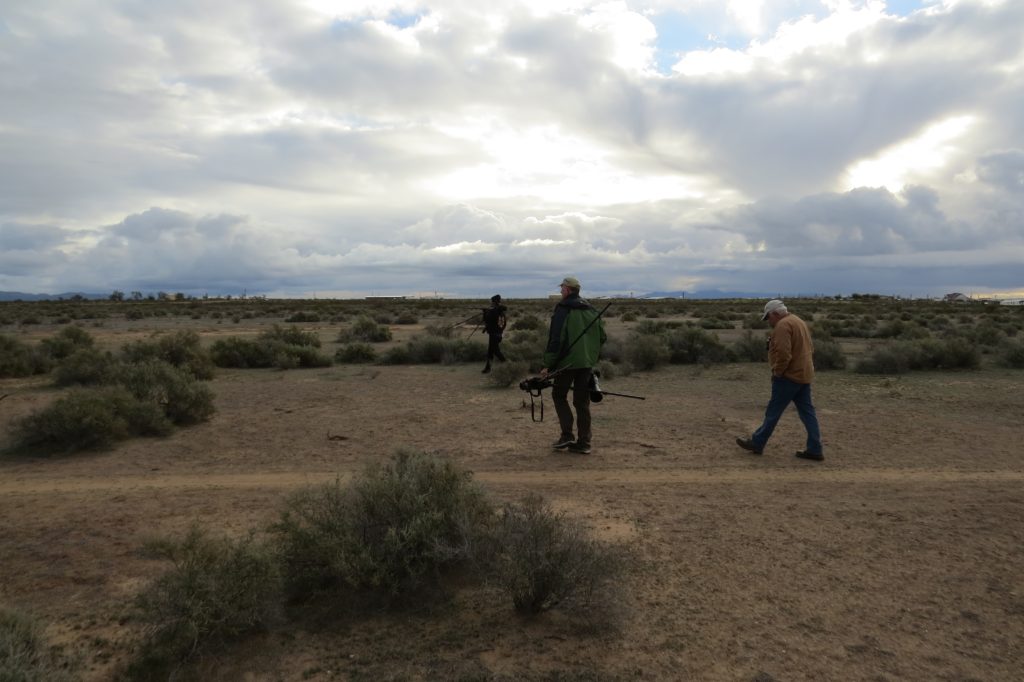 Though not completely unexpected, there were sightings of a couple different old men wandering alone and somewhat aimlessly trying to tally some Thrasher lifers for themselves. At least I wasn’t as late to the party as these guys. The sparse saltbush- studded landscape was not only good habitat for the occasional septagenerian but also for numerous Sagebrush Sparrows (lifer) that would run with tails held high from bush to bush. I was shocked to learn they didn’t respond to pishing. What kind of Sparrows are these anyway? Good looks at these birds and the others were tough to come by. Pressing on and going wider in our search efforts, we eventually locked up a Bendire’s Thrasher lifer.
Though not completely unexpected, there were sightings of a couple different old men wandering alone and somewhat aimlessly trying to tally some Thrasher lifers for themselves. At least I wasn’t as late to the party as these guys. The sparse saltbush- studded landscape was not only good habitat for the occasional septagenerian but also for numerous Sagebrush Sparrows (lifer) that would run with tails held high from bush to bush. I was shocked to learn they didn’t respond to pishing. What kind of Sparrows are these anyway? Good looks at these birds and the others were tough to come by. Pressing on and going wider in our search efforts, we eventually locked up a Bendire’s Thrasher lifer.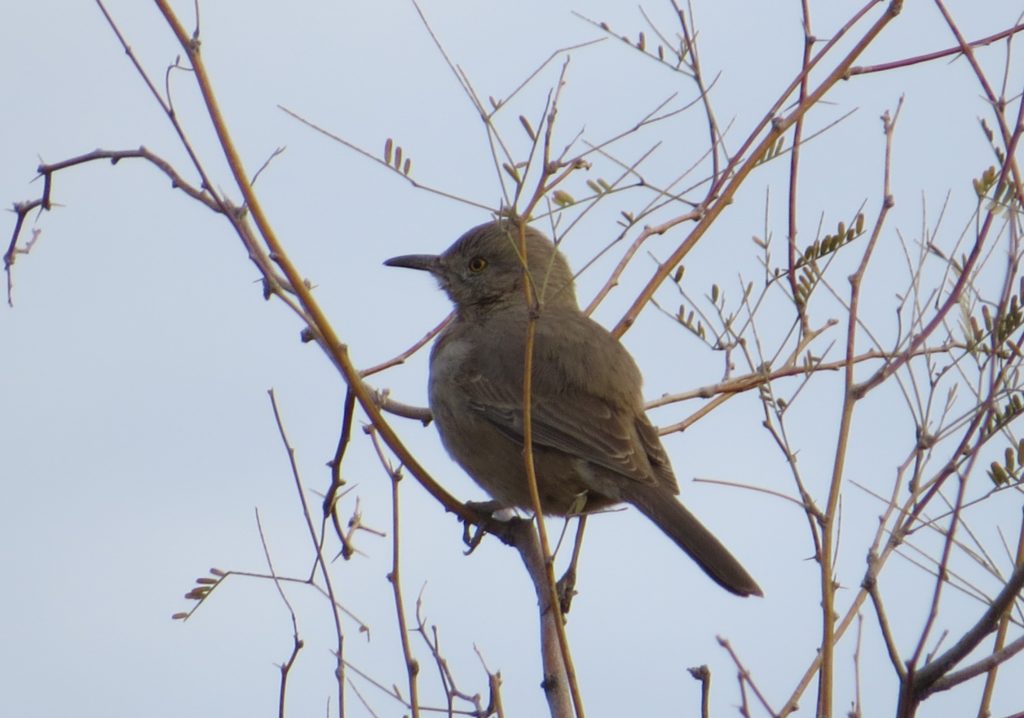 By this time, the sun was finally showing itself and warming up our frozen bodies. The birds seemed to enjoy it too as we finally started to get some good looks of perching Sagebrush Sparrows.
By this time, the sun was finally showing itself and warming up our frozen bodies. The birds seemed to enjoy it too as we finally started to get some good looks of perching Sagebrush Sparrows.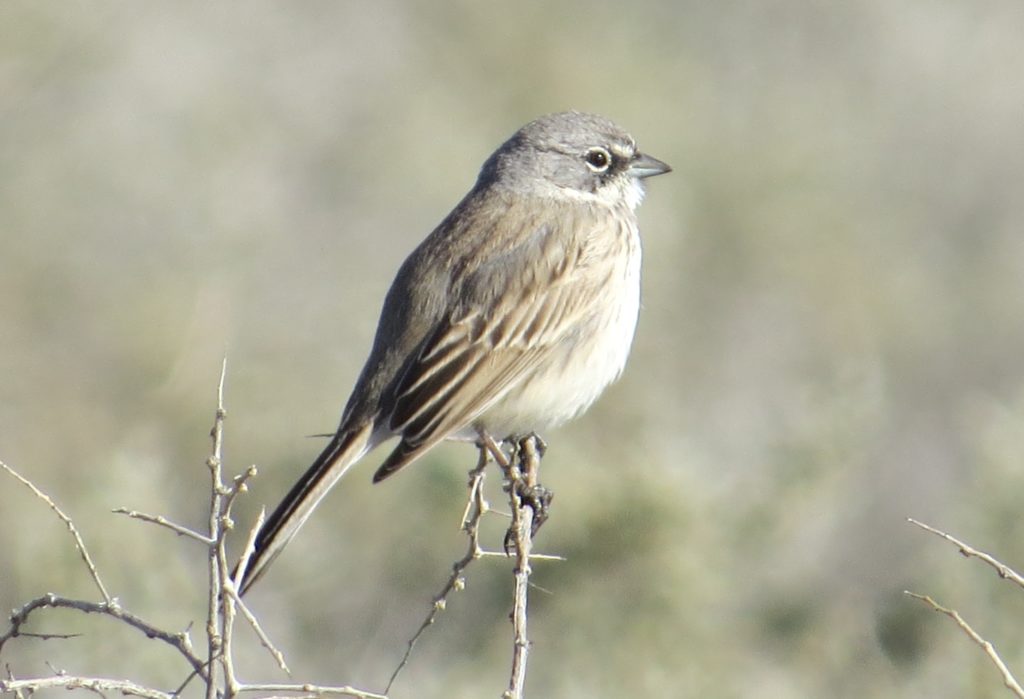 Tommy was able to spy the more rare doppelganger Bell’s Sparrow to make my fourth lifer of five for the morning. The Bell’s is told apart from the Sagebrush Sparrow by its bolder, thicker malar stripe and its unstreaked back.
Tommy was able to spy the more rare doppelganger Bell’s Sparrow to make my fourth lifer of five for the morning. The Bell’s is told apart from the Sagebrush Sparrow by its bolder, thicker malar stripe and its unstreaked back.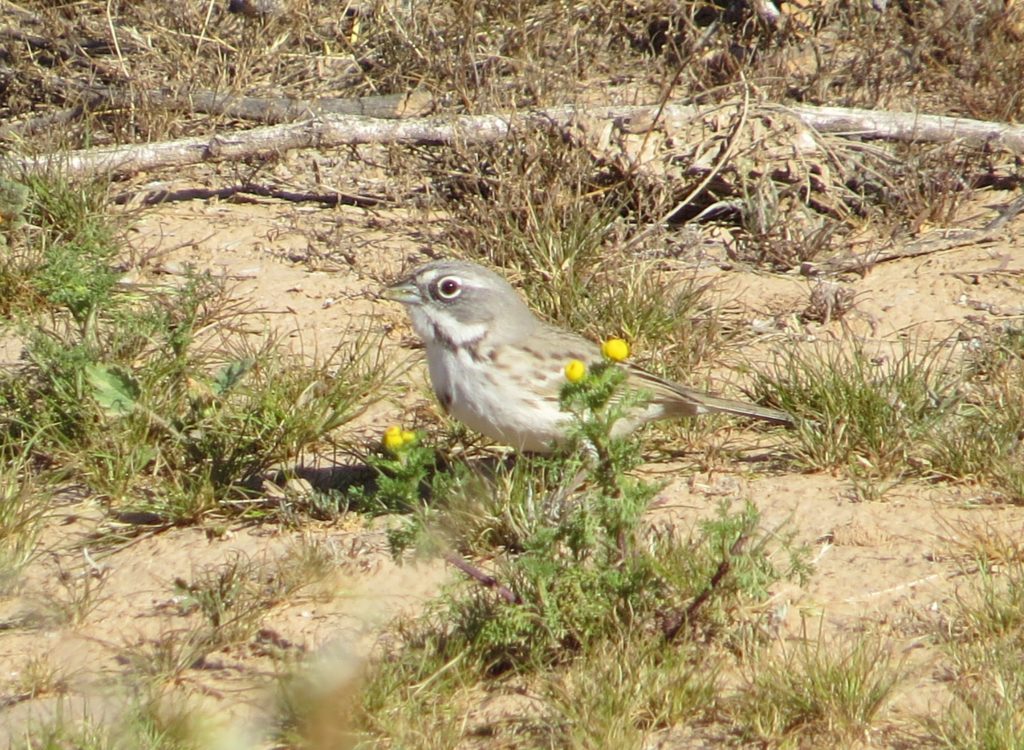
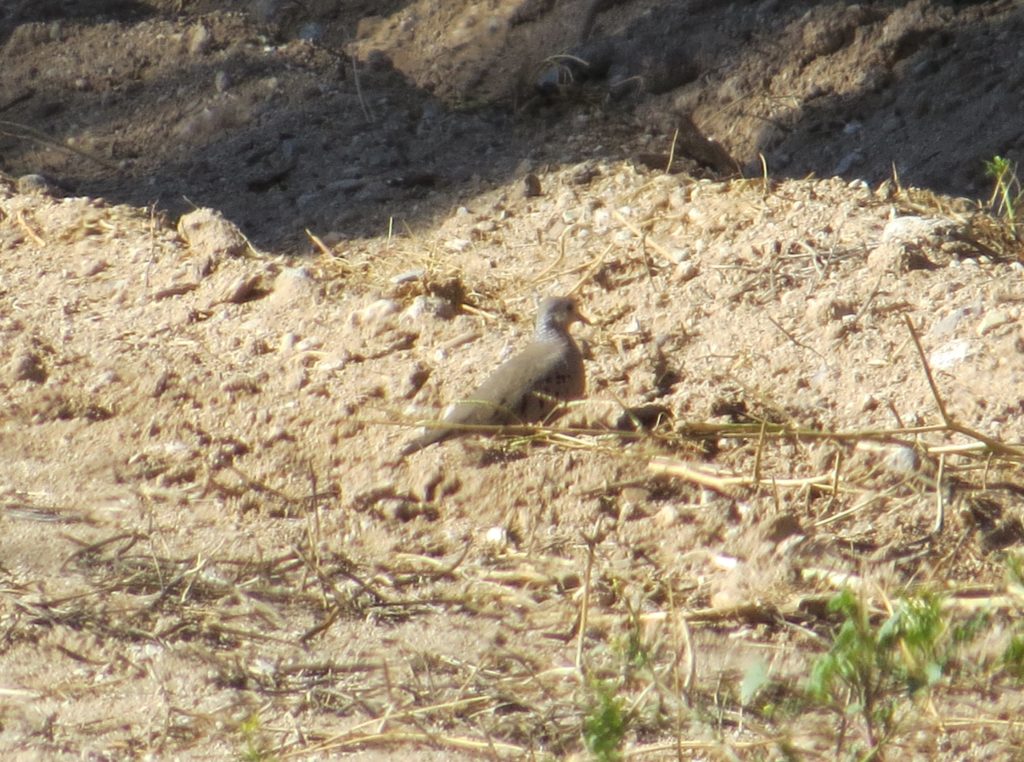 I repaid Gordon by spotting a raptor flying over us. I casually asked the guys what it was since they were making an eBird checklist. Turns out it was a Crested Caracara, a county bird for Gordon and only the second one Tommy has seen in Maricopa County.
I repaid Gordon by spotting a raptor flying over us. I casually asked the guys what it was since they were making an eBird checklist. Turns out it was a Crested Caracara, a county bird for Gordon and only the second one Tommy has seen in Maricopa County.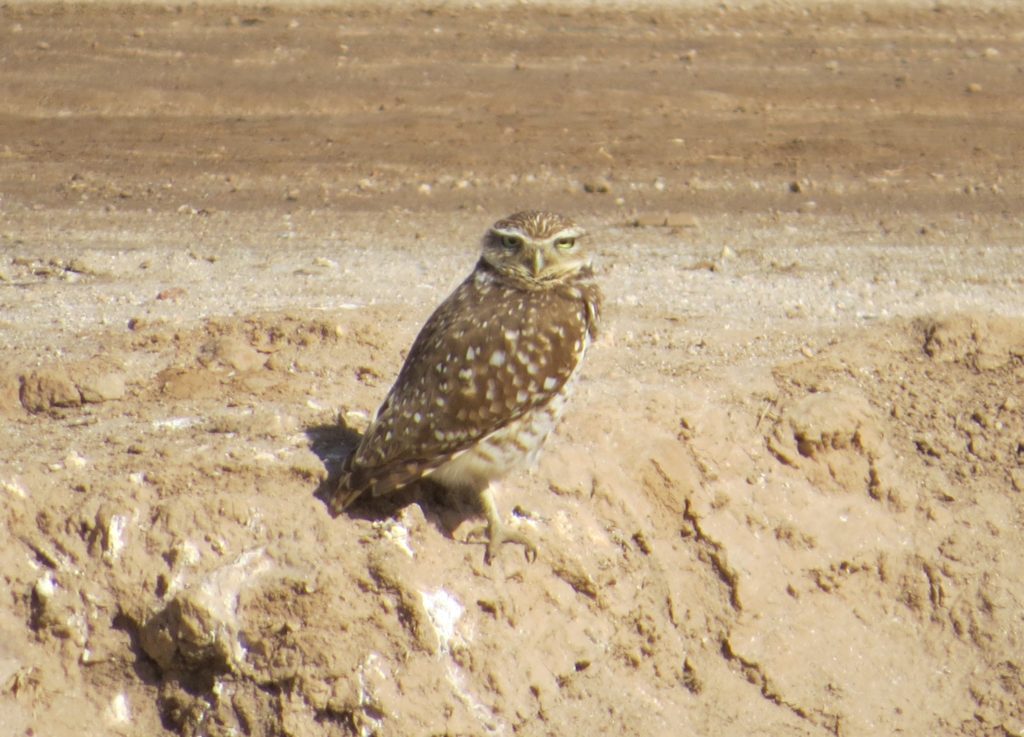 At the end of the dead end road, Tomy finally heard it–a Crissal Thrasher. Unfortunately no views were had of the true curve-billed Thrasher. So it goes. It’s hard to have any misgivings or least find anyone sympathetic whining about not seeing a CRTH when the birding had been sooo good. What’s next, Arizona? After 123 life birds in eight trips, I seriously have no idea and no plans.
At the end of the dead end road, Tomy finally heard it–a Crissal Thrasher. Unfortunately no views were had of the true curve-billed Thrasher. So it goes. It’s hard to have any misgivings or least find anyone sympathetic whining about not seeing a CRTH when the birding had been sooo good. What’s next, Arizona? After 123 life birds in eight trips, I seriously have no idea and no plans.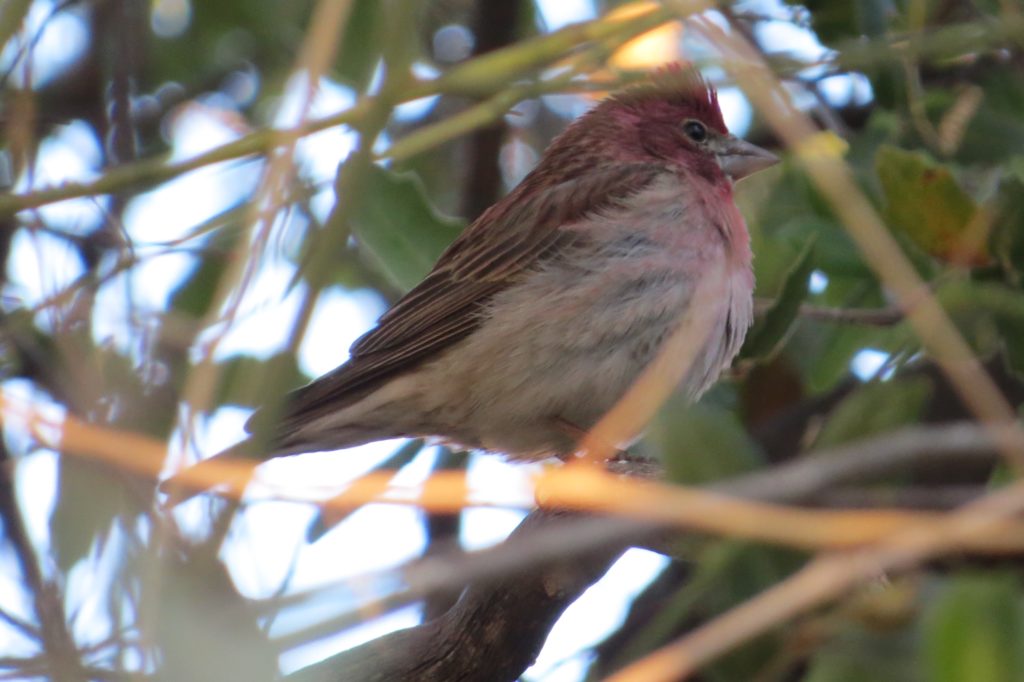
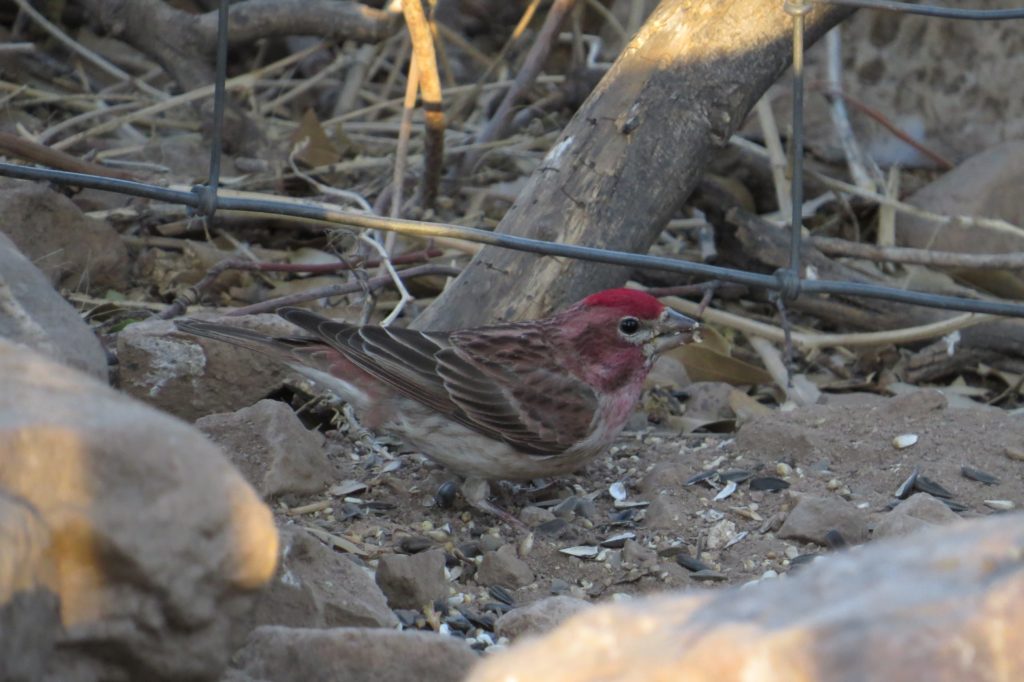 We barely had any time to enjoy the Cassin’s Finch warm-up band before the real head-banging act materialized suddenly, shocking and awing a crowd too afraid to move or breathe, lest the show be over for good.
We barely had any time to enjoy the Cassin’s Finch warm-up band before the real head-banging act materialized suddenly, shocking and awing a crowd too afraid to move or breathe, lest the show be over for good.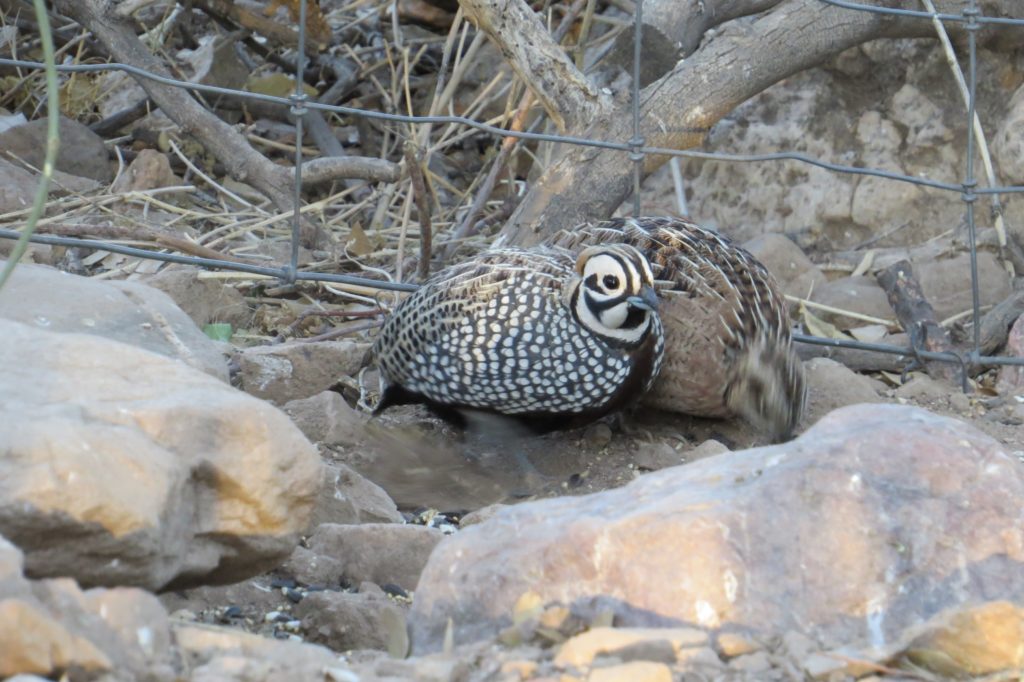
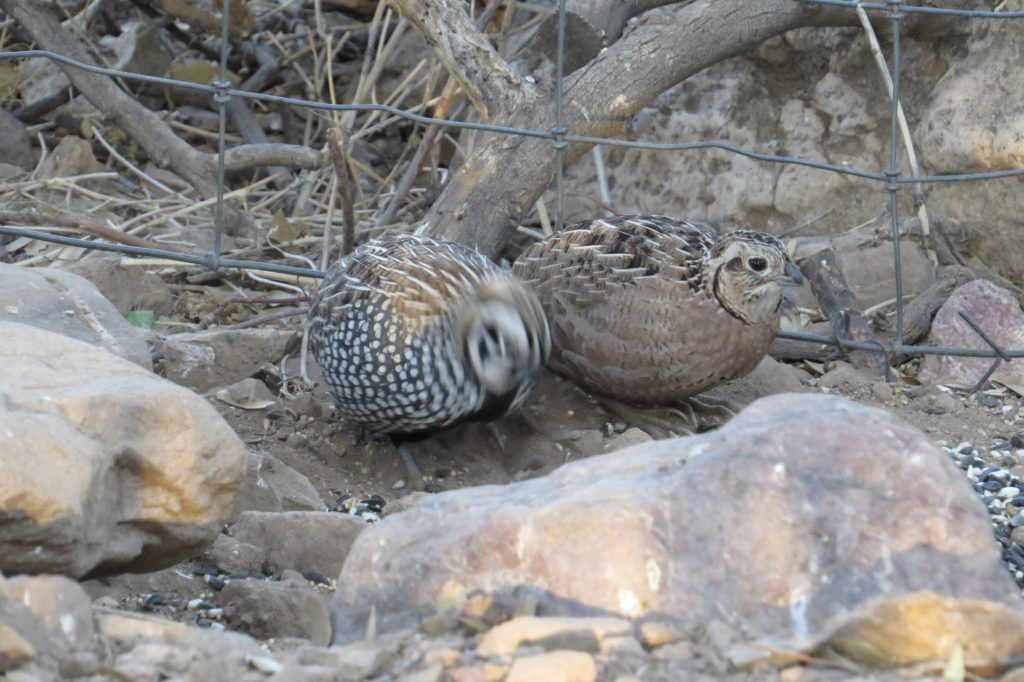
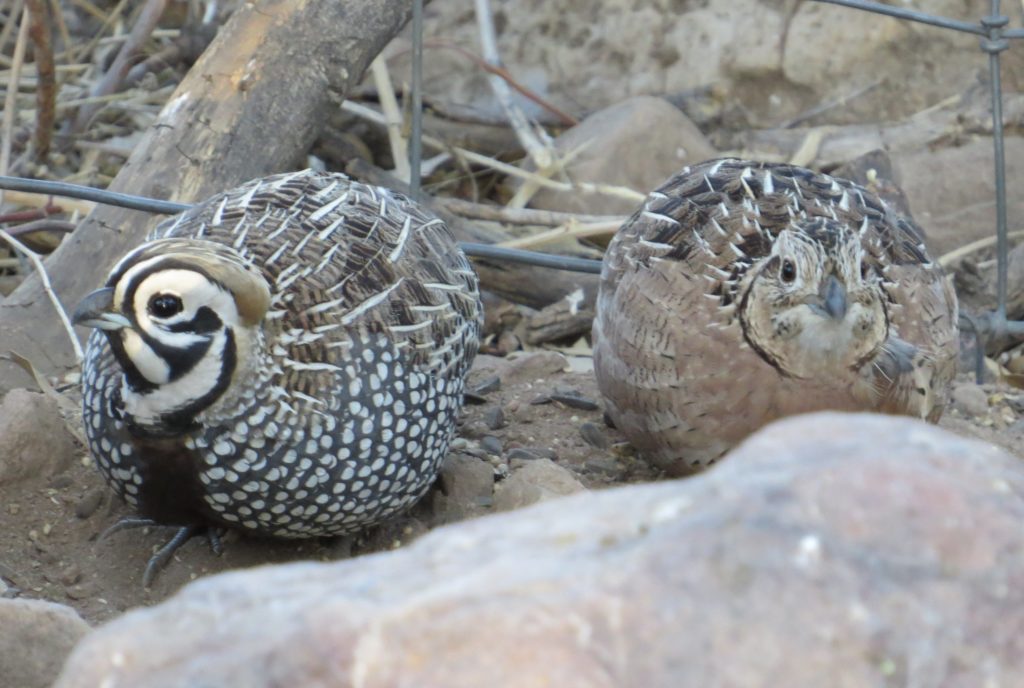
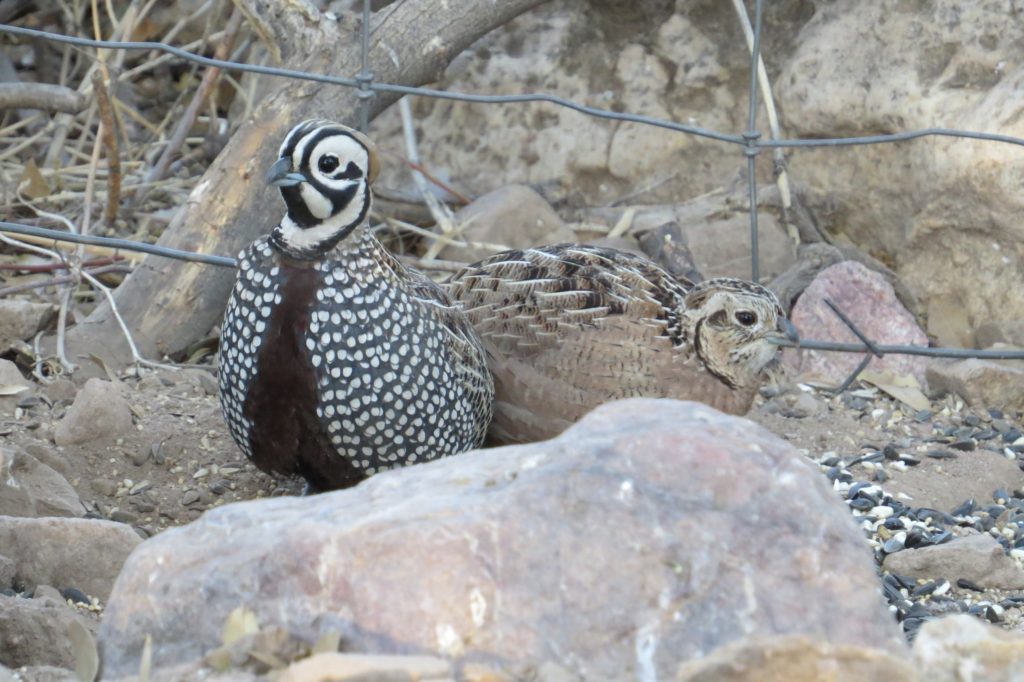
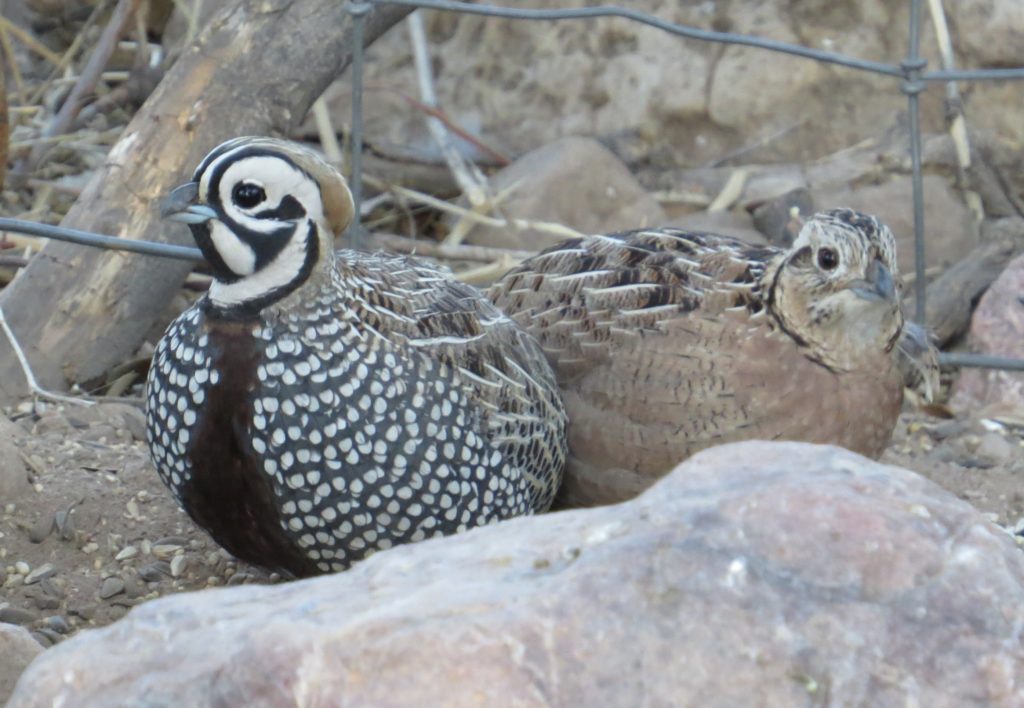 It was not the Ferruginous Pygmy-Owl I craved, but the Montezuma Quail was one of those birds that can make an entire trip. Not only was it a key lifer for Steve and me, but this was Tommy’s first time photographing this species. It was a high for the entire group.
It was not the Ferruginous Pygmy-Owl I craved, but the Montezuma Quail was one of those birds that can make an entire trip. Not only was it a key lifer for Steve and me, but this was Tommy’s first time photographing this species. It was a high for the entire group.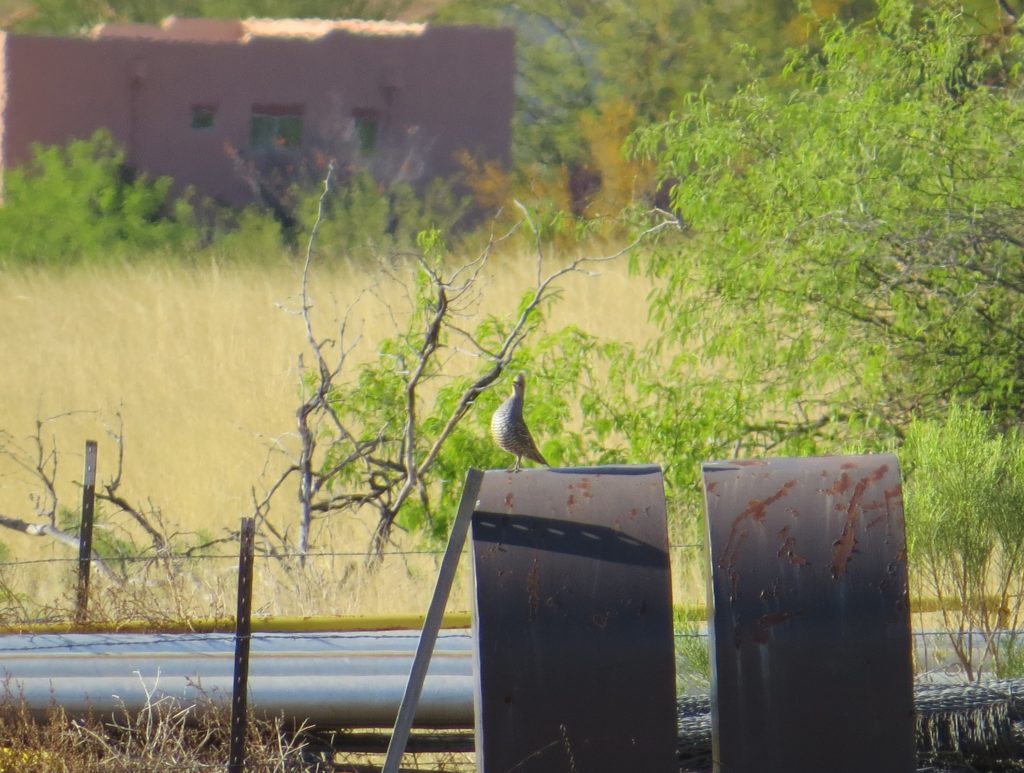 On our to-do list was to hit up Miller Canyon next to try to get Steve a Spotted Owl lifer, among others. This whole time that Fan-tailed Warbler report was still on all of our minds. Strangely, there had been no word the previous day or this morning. It was odd considering it was such a mega rarity. I finally heard from Chris Rohrer that the Warbler had been seen Saturday by numerous people AND that it was still there this morning. We decided to do Miller Canyon as planned since we were so close. What hadn’t been decided yet was if we were going after the Warbler. A chase to the Chiricahuas in far southeastern AZ would mean the FEPO plans would have to be nixed–we had originally planned to try for FEPO again Sunday night and Monday morning before we flew out. Though the Warbler would have been a lifer for Tommy, he graciously said the decision was mine to continue with the FEPO plans or abandon them. Steve also said it didn’t matter to him as he was enjoying a plethora of new birds wherever we went. As we hiked up Miller Canyon, I didn’t know what to do. It made it tough for me to enjoy some of the canyon’s residents, many of which were lifers for Steve.
On our to-do list was to hit up Miller Canyon next to try to get Steve a Spotted Owl lifer, among others. This whole time that Fan-tailed Warbler report was still on all of our minds. Strangely, there had been no word the previous day or this morning. It was odd considering it was such a mega rarity. I finally heard from Chris Rohrer that the Warbler had been seen Saturday by numerous people AND that it was still there this morning. We decided to do Miller Canyon as planned since we were so close. What hadn’t been decided yet was if we were going after the Warbler. A chase to the Chiricahuas in far southeastern AZ would mean the FEPO plans would have to be nixed–we had originally planned to try for FEPO again Sunday night and Monday morning before we flew out. Though the Warbler would have been a lifer for Tommy, he graciously said the decision was mine to continue with the FEPO plans or abandon them. Steve also said it didn’t matter to him as he was enjoying a plethora of new birds wherever we went. As we hiked up Miller Canyon, I didn’t know what to do. It made it tough for me to enjoy some of the canyon’s residents, many of which were lifers for Steve.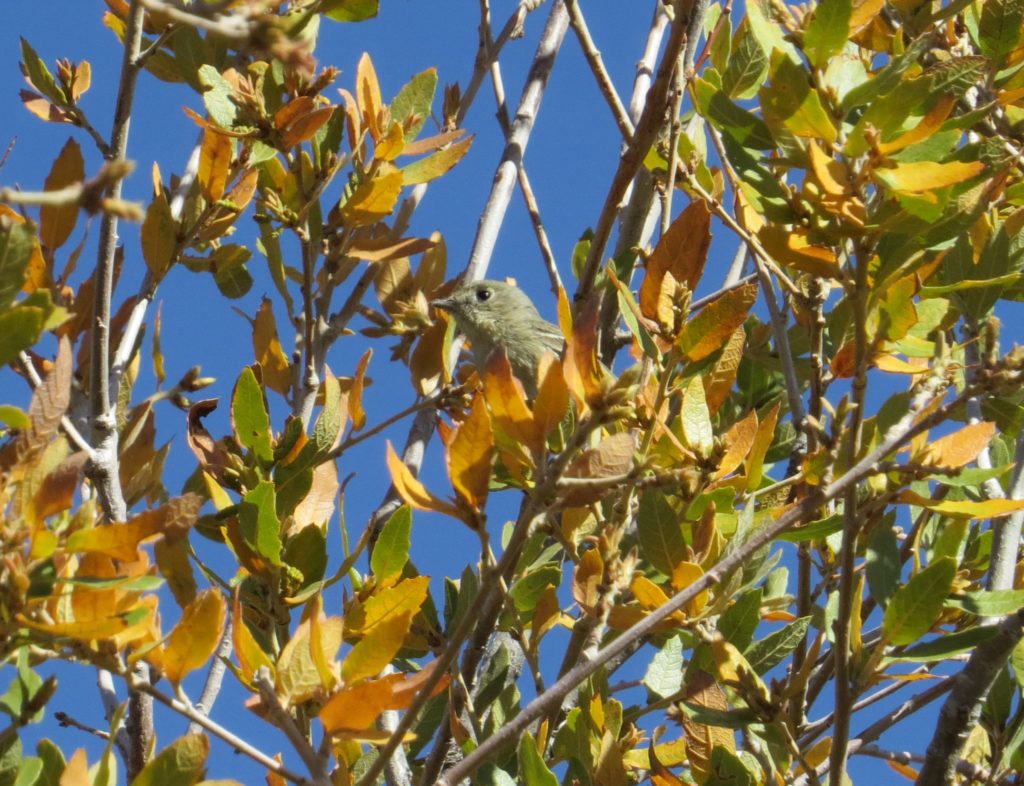
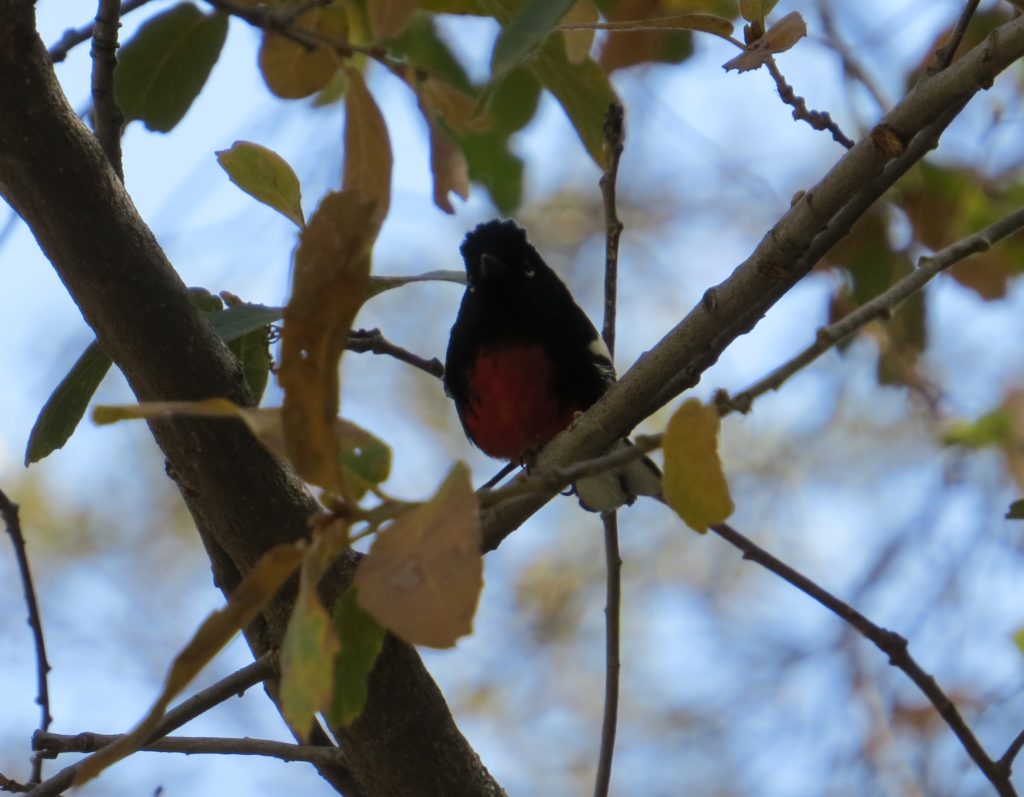
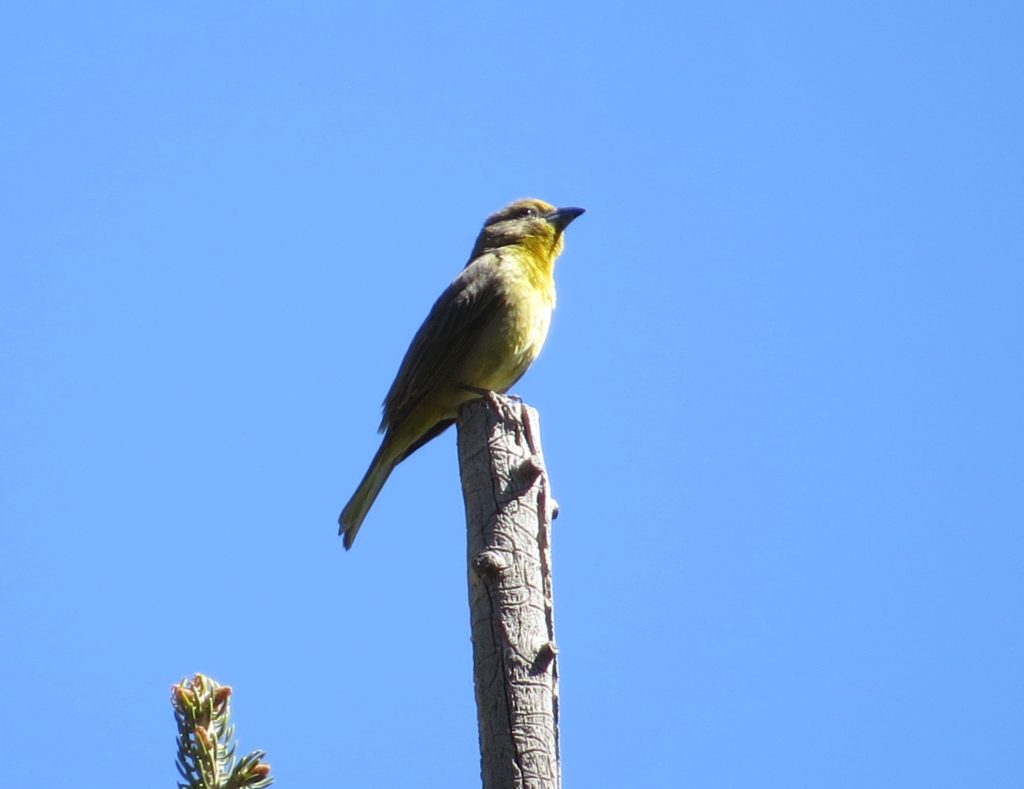
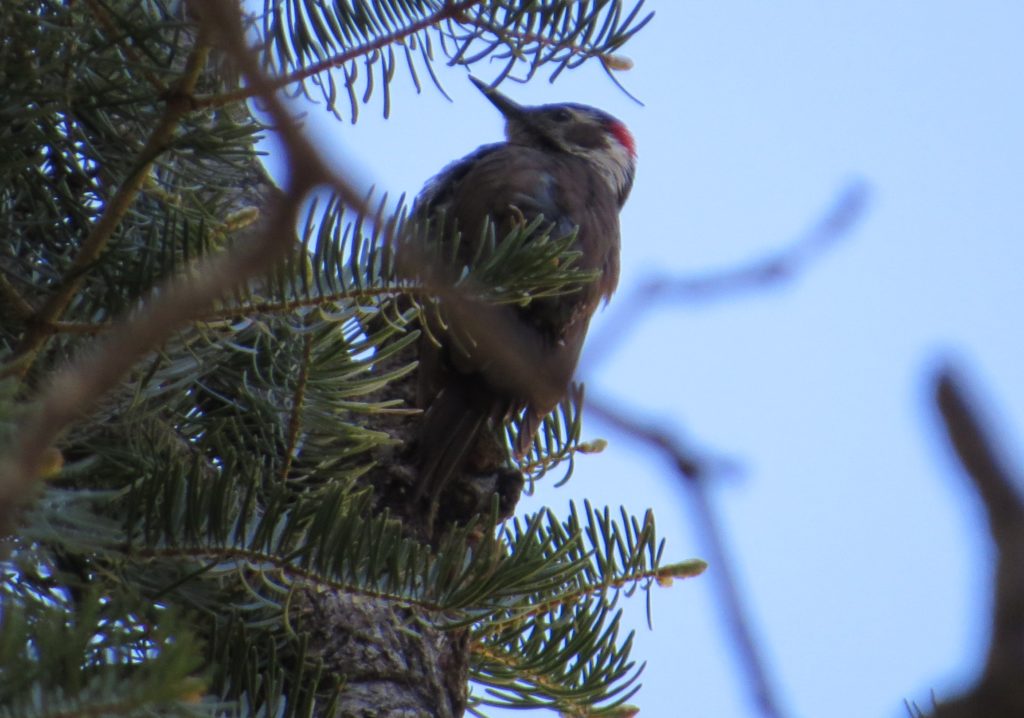
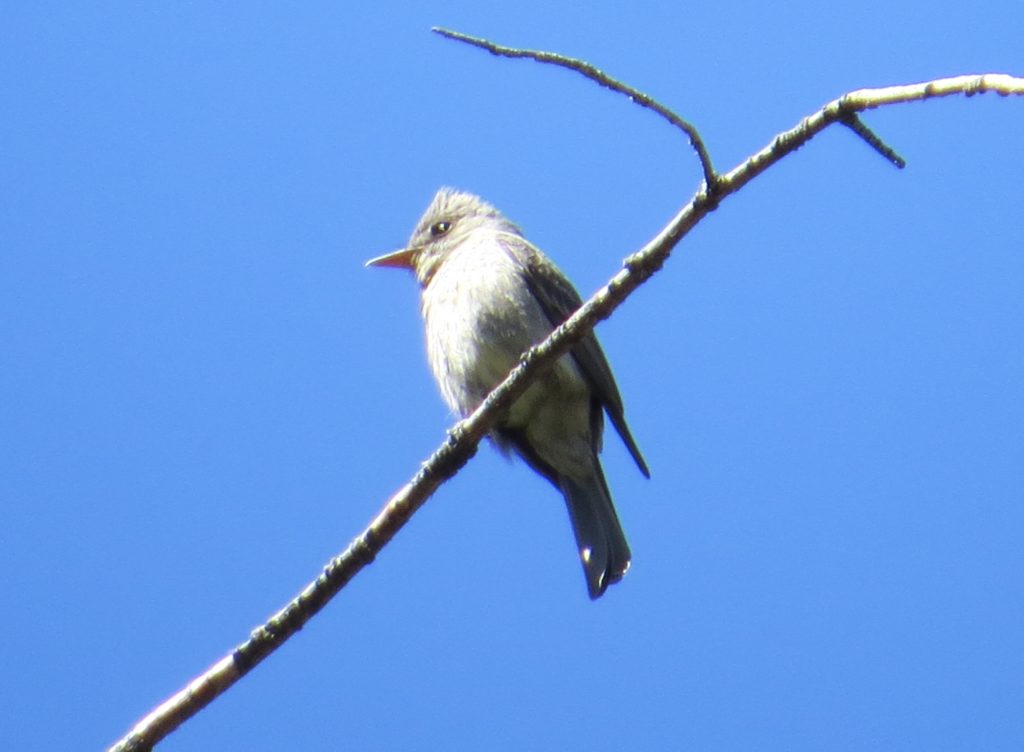
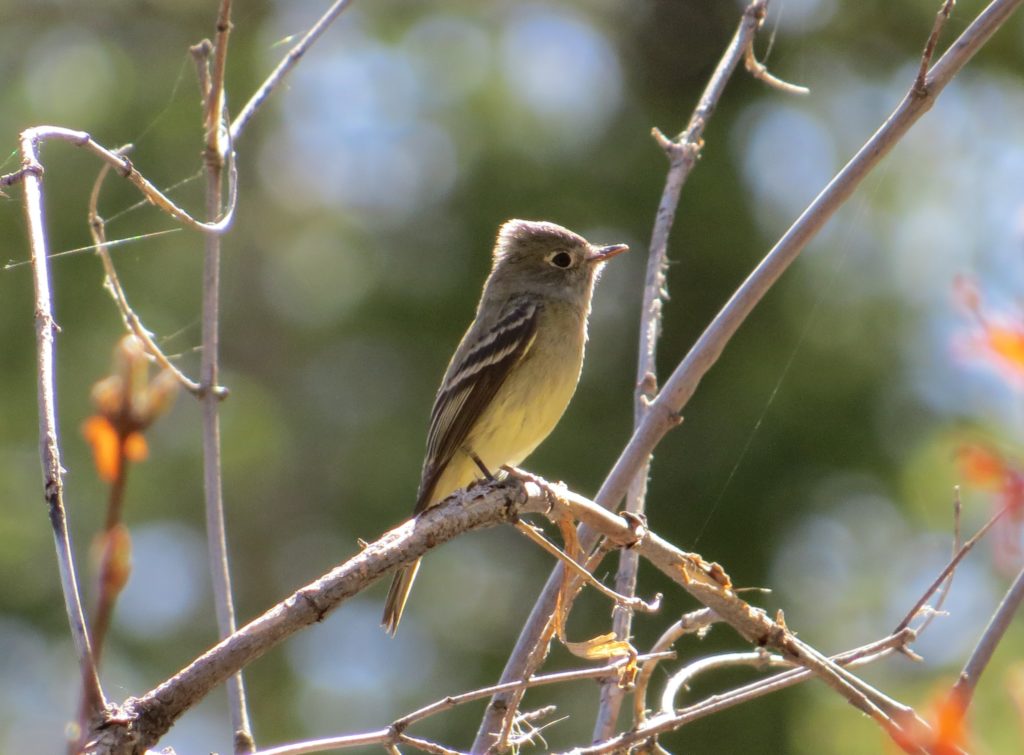 Another ID question prolonged the decision. Anybody know what species this lizard is?
Another ID question prolonged the decision. Anybody know what species this lizard is?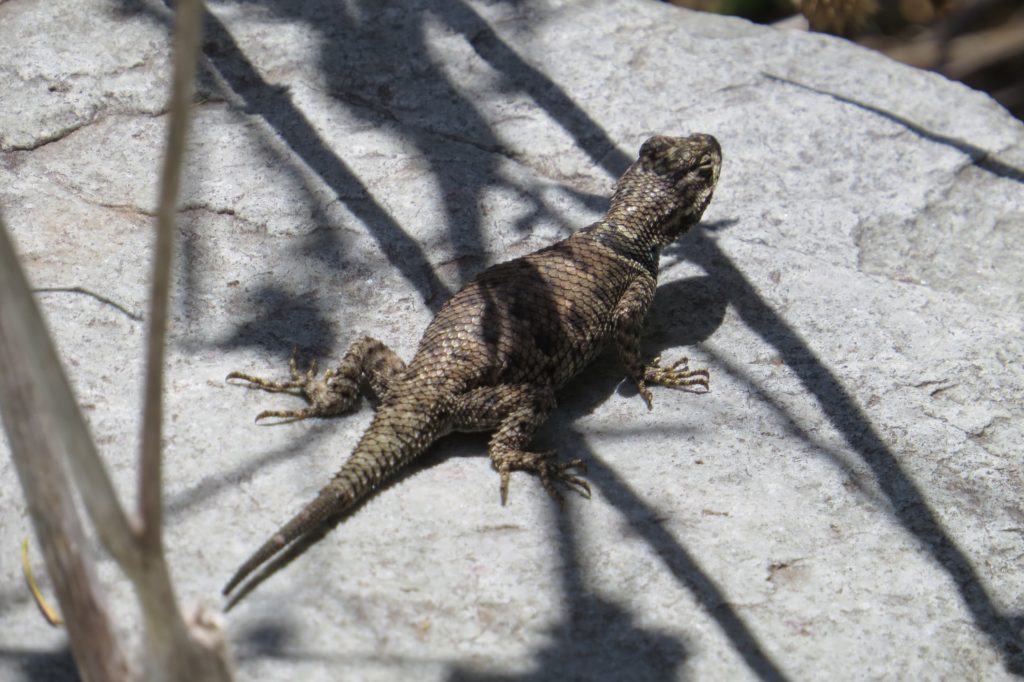
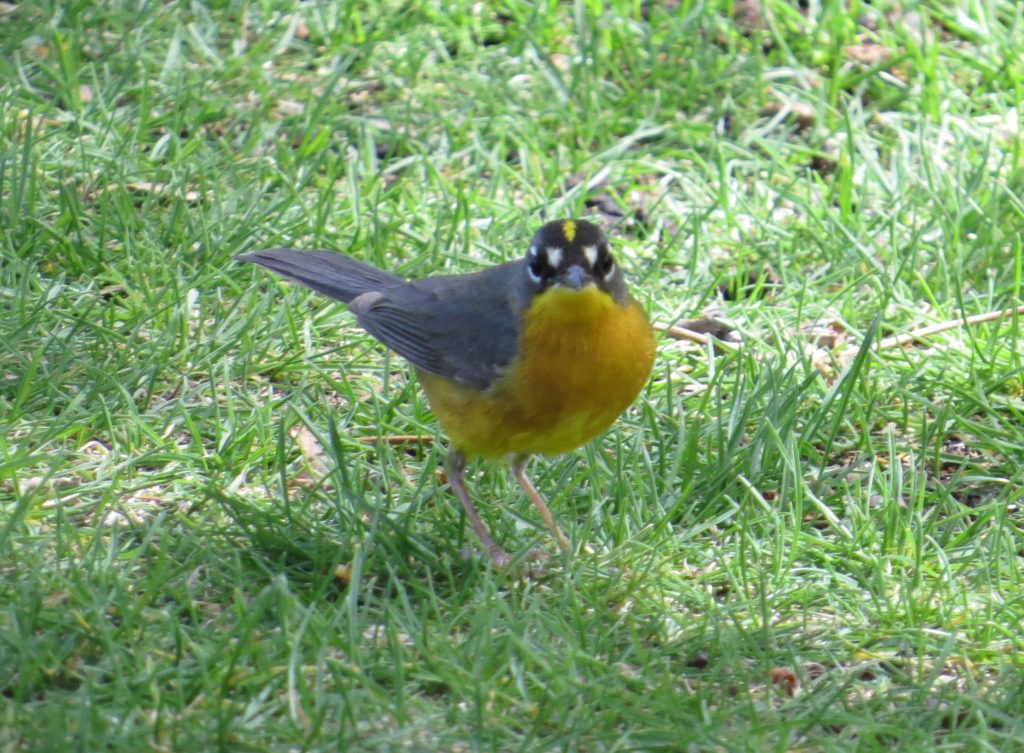
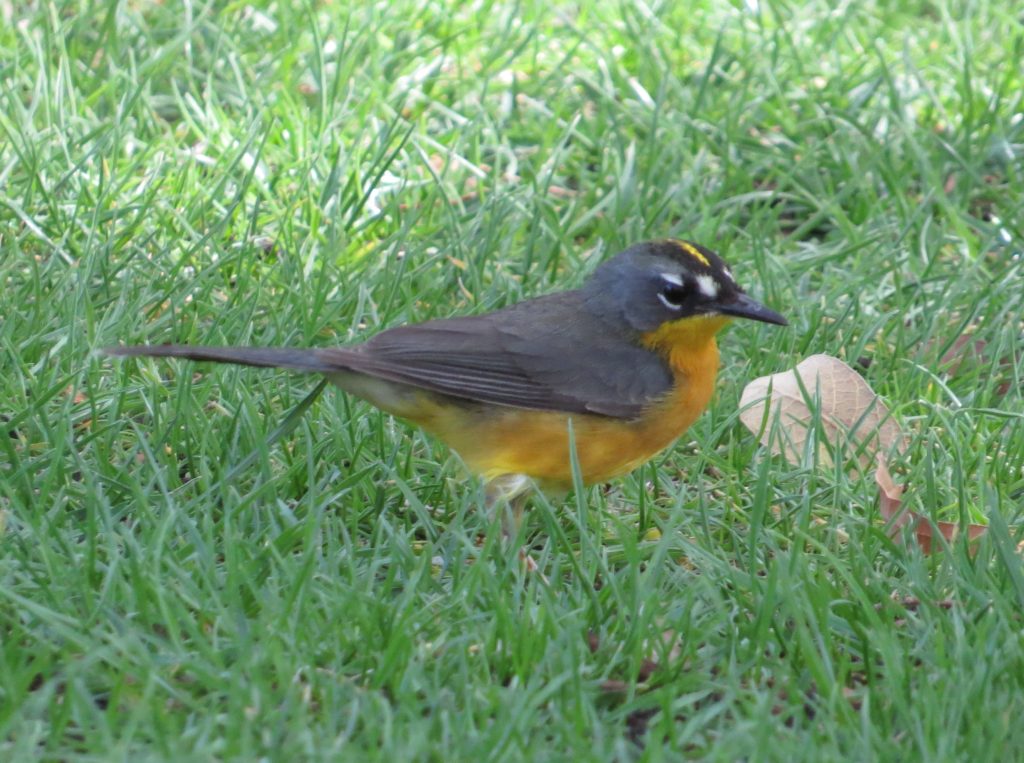 If the Fan-tailed Warbler weren’t enough, the regulars of Rick’s yard were worthy of their own awe. The place was positively buzzing with bird activity. Among the many species of birds were a couple more lifers for me, the bulky Blue-throated Hummingbird and a Calliope Hummingbird. Both were quick sightings that didn’t allow for photos. This gorgeous male Scott’s Oriole was cooperative, though. It was a nice redemptive photo from my lifer butt-shot in Hunter Canyon a few years ago.
If the Fan-tailed Warbler weren’t enough, the regulars of Rick’s yard were worthy of their own awe. The place was positively buzzing with bird activity. Among the many species of birds were a couple more lifers for me, the bulky Blue-throated Hummingbird and a Calliope Hummingbird. Both were quick sightings that didn’t allow for photos. This gorgeous male Scott’s Oriole was cooperative, though. It was a nice redemptive photo from my lifer butt-shot in Hunter Canyon a few years ago.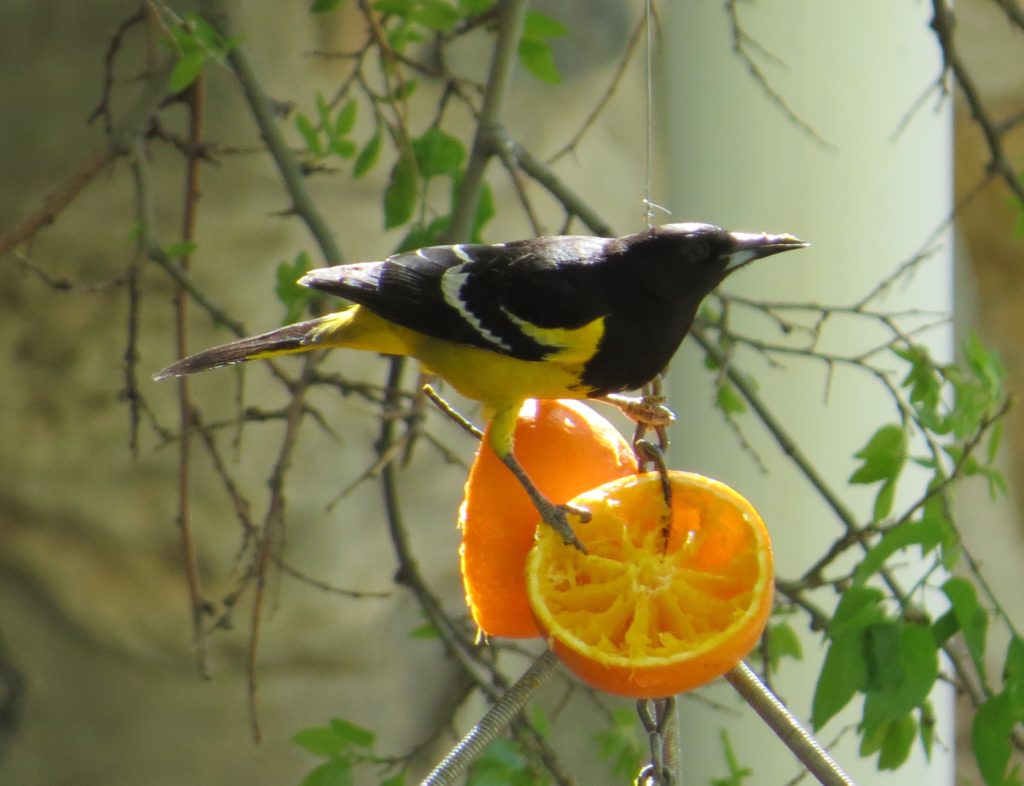 While we were at Rick’s yard visiting with Rick and his wife, there was another young birder there from New Mexico. I forget his name, but it was this kid’s 14th birthday, and his parents had driven him several hundred miles for his birthday to see this mega rarity. Cool parents, huh? The kid was no slouch birder either as he was identifying birds left and right. In fact, as we were leaving, he spotted two raptors overhead and announced they were Zone-tailed Hawks! That was a lifer for Steve and me and one that we were hoping for.
While we were at Rick’s yard visiting with Rick and his wife, there was another young birder there from New Mexico. I forget his name, but it was this kid’s 14th birthday, and his parents had driven him several hundred miles for his birthday to see this mega rarity. Cool parents, huh? The kid was no slouch birder either as he was identifying birds left and right. In fact, as we were leaving, he spotted two raptors overhead and announced they were Zone-tailed Hawks! That was a lifer for Steve and me and one that we were hoping for.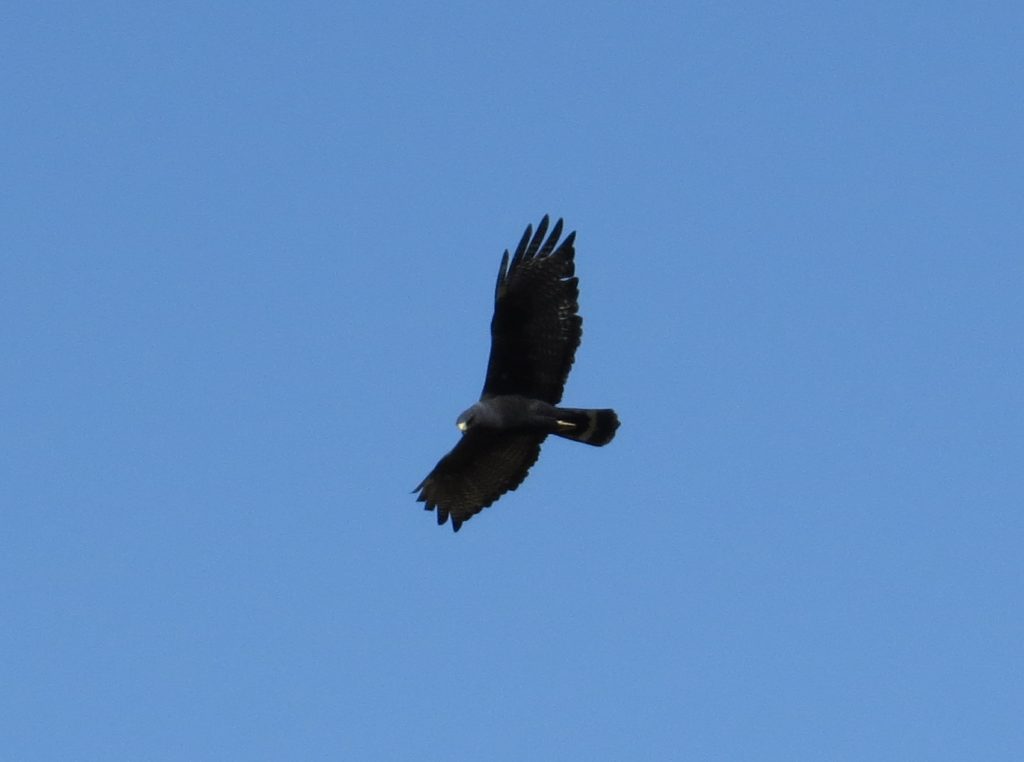 With one Mexican Warbler under our belts, it was time to go after another that had been showing in the Chiricahuas, the Slate-throated Redstart. I had tried for this ABA Code-3 a few years ago in Hunter Canyon. We barely had enough daylight to get all the way up and over the Chiris to Pinery Canyon where it had been seen. The views along the way were spectacular even if the road was a bit stressful with its curves and steep drop-offs. I’m glad Steve was driving.
With one Mexican Warbler under our belts, it was time to go after another that had been showing in the Chiricahuas, the Slate-throated Redstart. I had tried for this ABA Code-3 a few years ago in Hunter Canyon. We barely had enough daylight to get all the way up and over the Chiris to Pinery Canyon where it had been seen. The views along the way were spectacular even if the road was a bit stressful with its curves and steep drop-offs. I’m glad Steve was driving.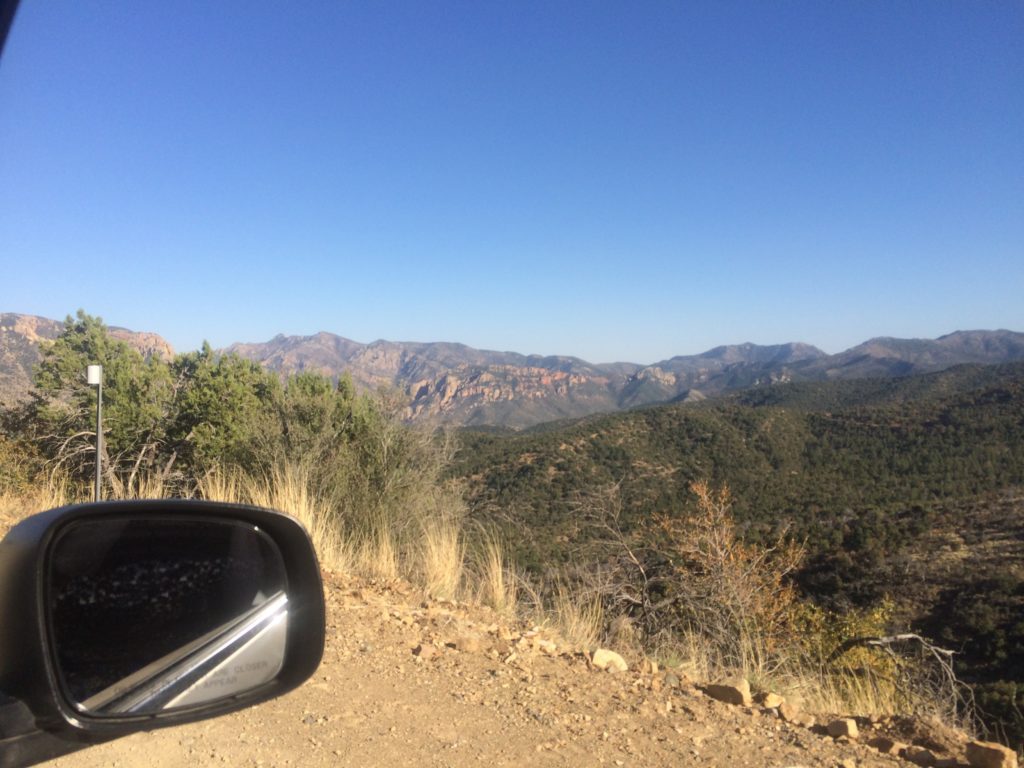
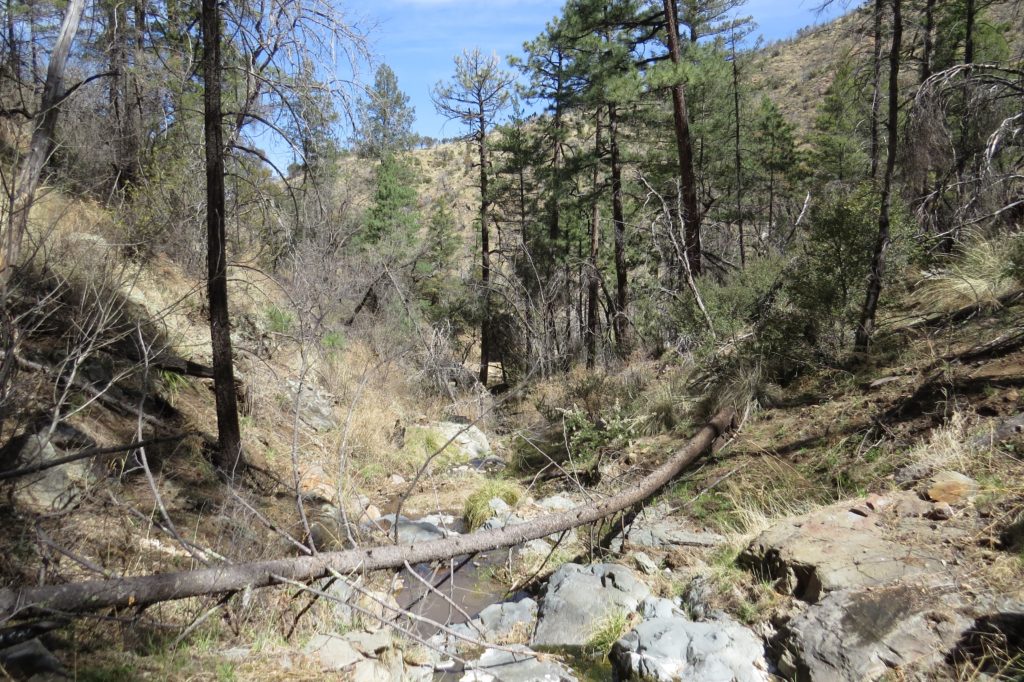
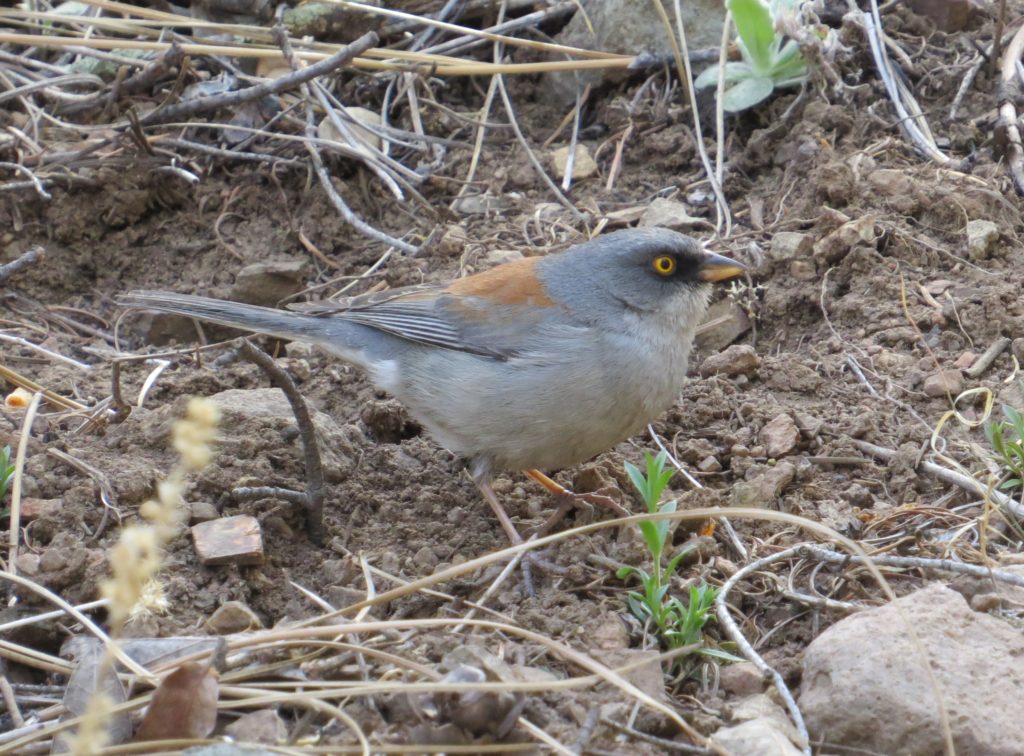
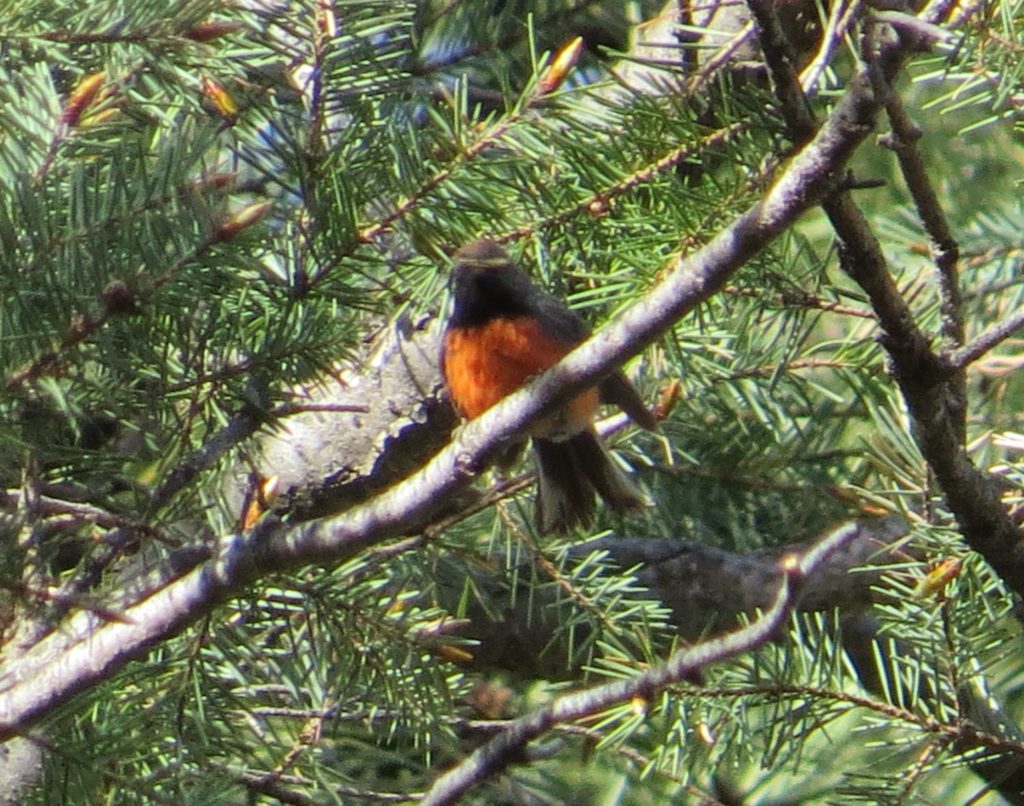
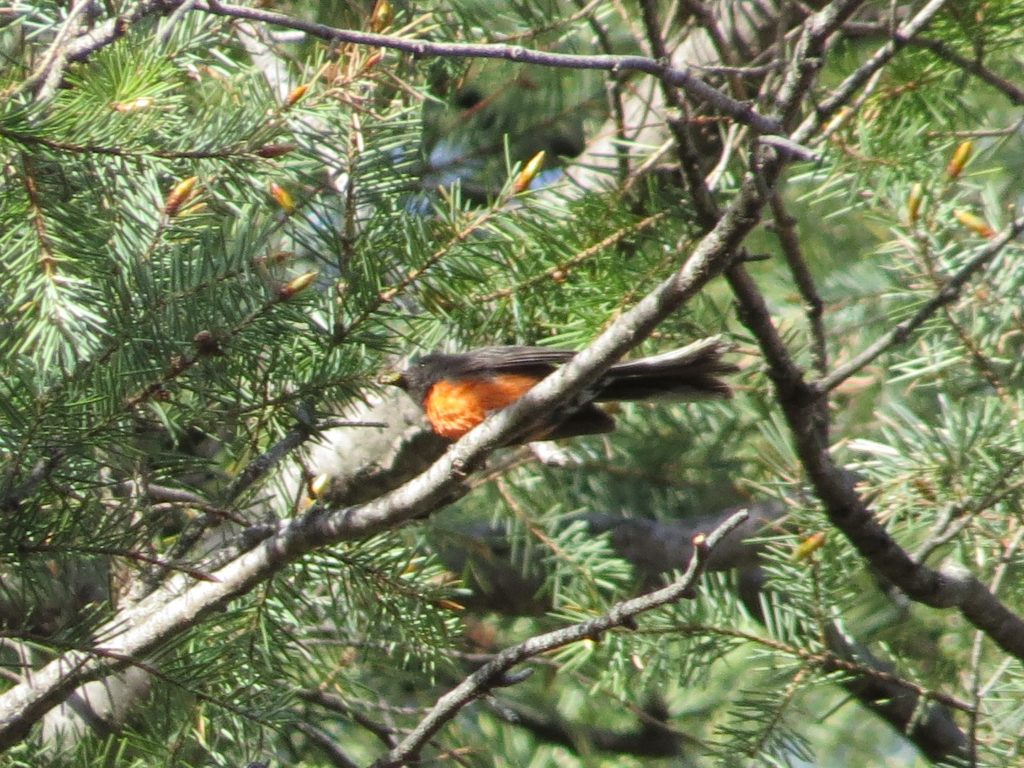
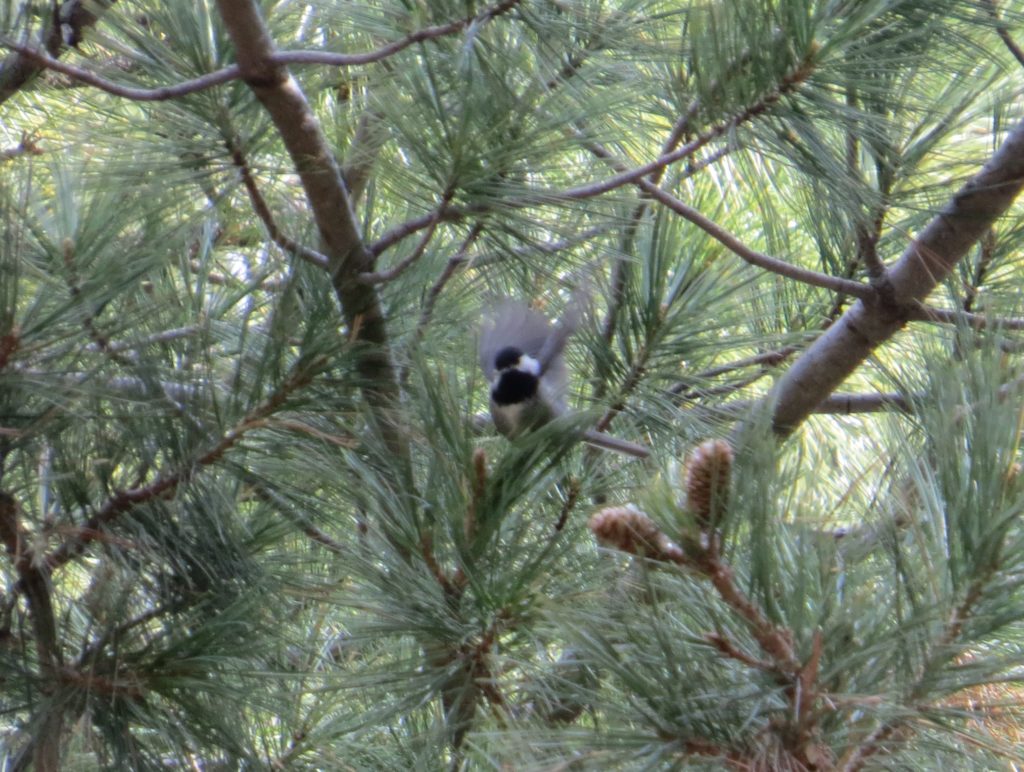 When you are literally on top of the world and have seen the Mexican Chickadee (and all kinds of other crazy good birds), a celebratory selfie is in order.
When you are literally on top of the world and have seen the Mexican Chickadee (and all kinds of other crazy good birds), a celebratory selfie is in order.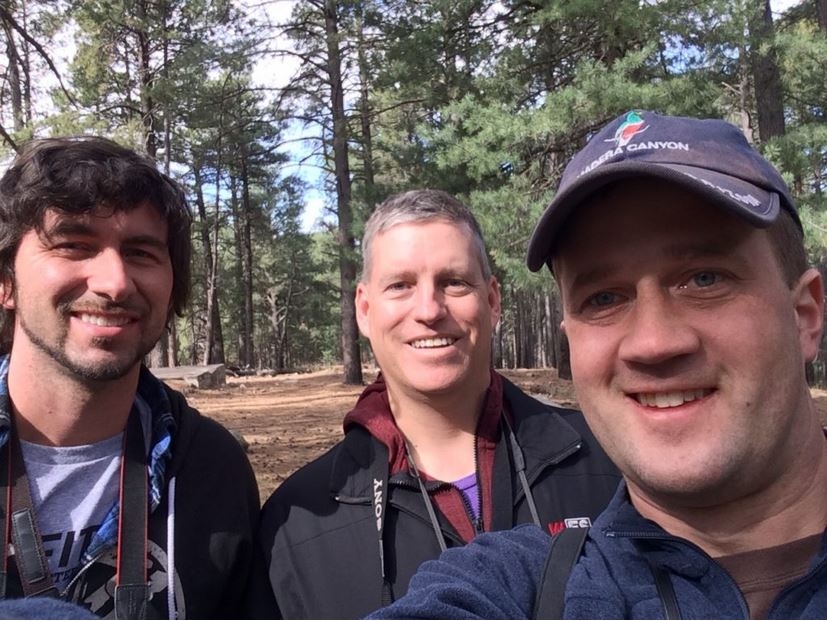
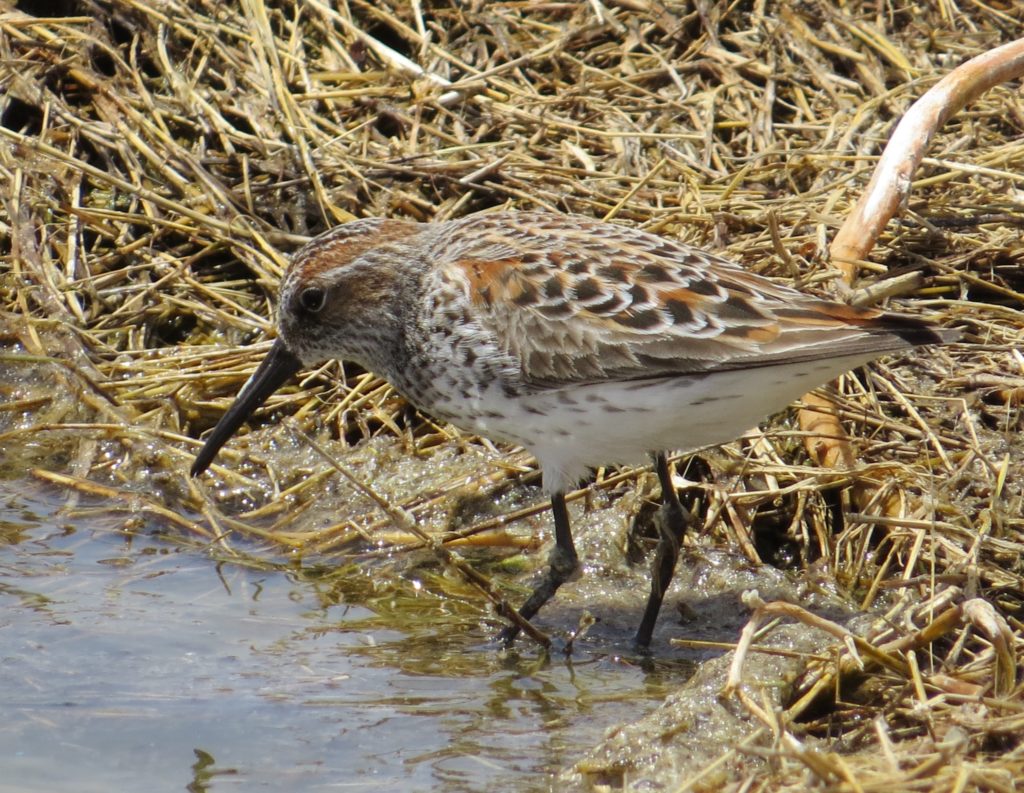 Cinnamon Teal never get old to this birder, and they were quite cooperative in Willcox as well.
Cinnamon Teal never get old to this birder, and they were quite cooperative in Willcox as well.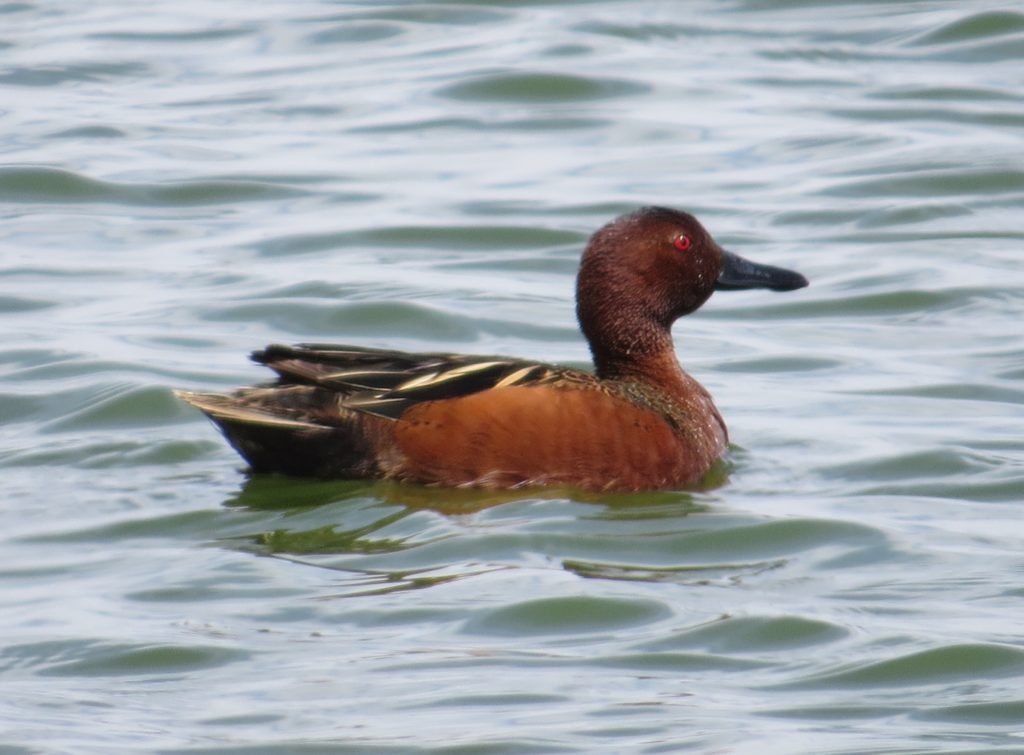 The trip was really over at this point. Steve and I had a flight to catch. That didn’t mean there wasn’t time to make one quick stop when we got close to my parents’ house in Maricopa. Tommy spotted this Burrowing Owl.
The trip was really over at this point. Steve and I had a flight to catch. That didn’t mean there wasn’t time to make one quick stop when we got close to my parents’ house in Maricopa. Tommy spotted this Burrowing Owl.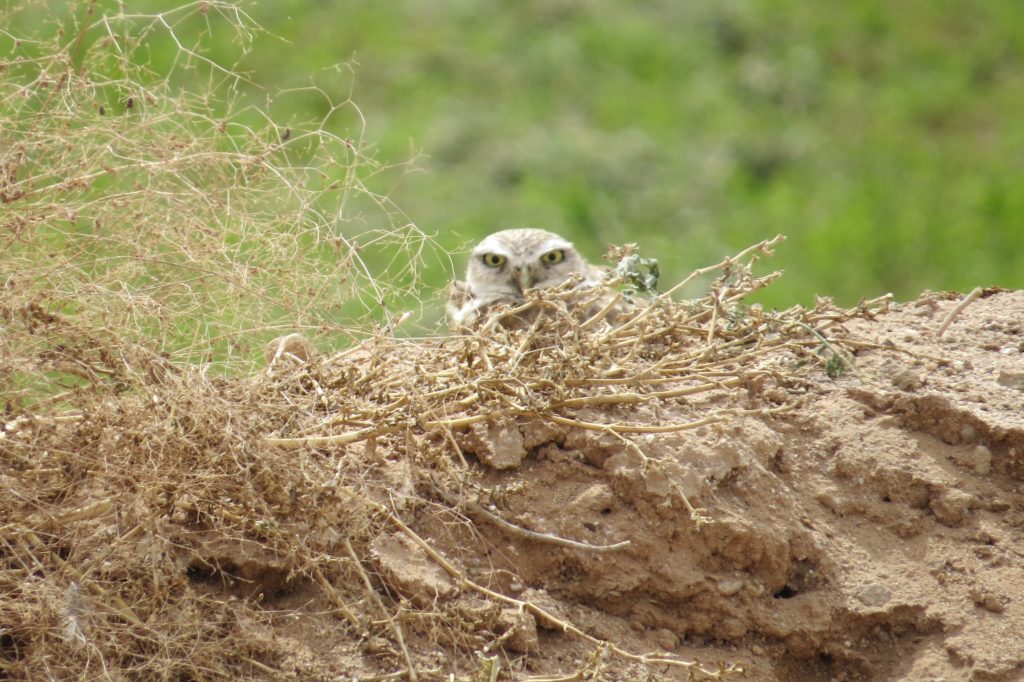
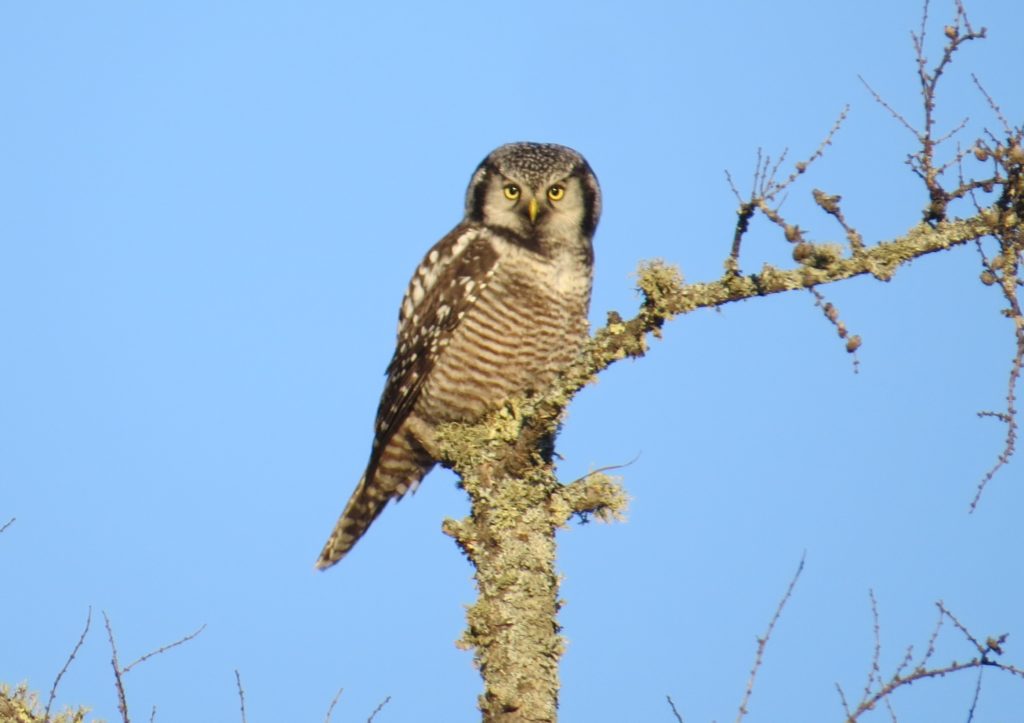
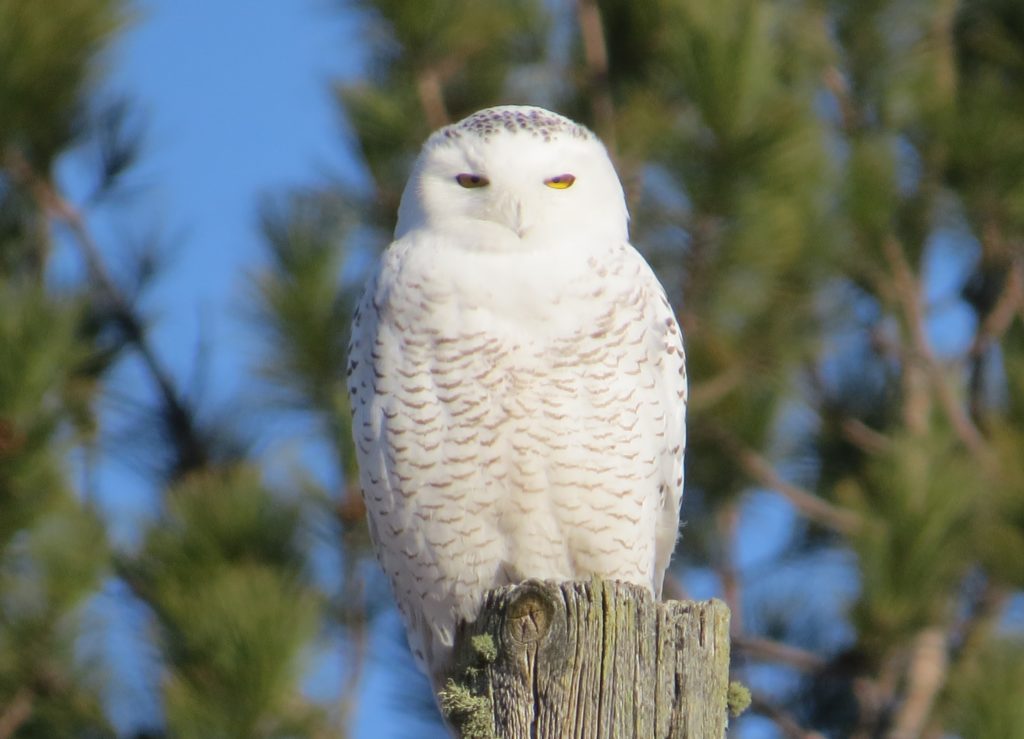
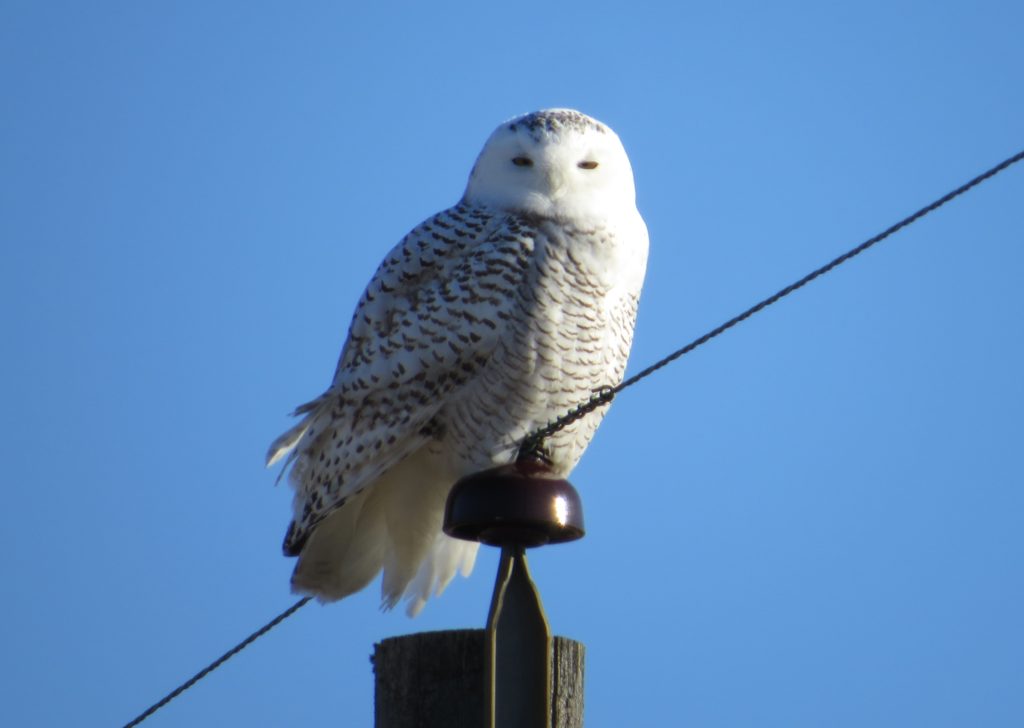 Heartbroken at the time, little did we realize that the Boreal we chased was just the tip of the spear. More sightings kept popping up during December of both live and dead Boreal Owls. By the time news of one would come out, though, it would either be during the work week or late in the day making a chase impossible. Jeff and I were hopeful that our day would finally happen, but we were very antsy about it. I had an upcoming trip to Arizona that I was now dreading. I did not want to miss my chance.
Heartbroken at the time, little did we realize that the Boreal we chased was just the tip of the spear. More sightings kept popping up during December of both live and dead Boreal Owls. By the time news of one would come out, though, it would either be during the work week or late in the day making a chase impossible. Jeff and I were hopeful that our day would finally happen, but we were very antsy about it. I had an upcoming trip to Arizona that I was now dreading. I did not want to miss my chance.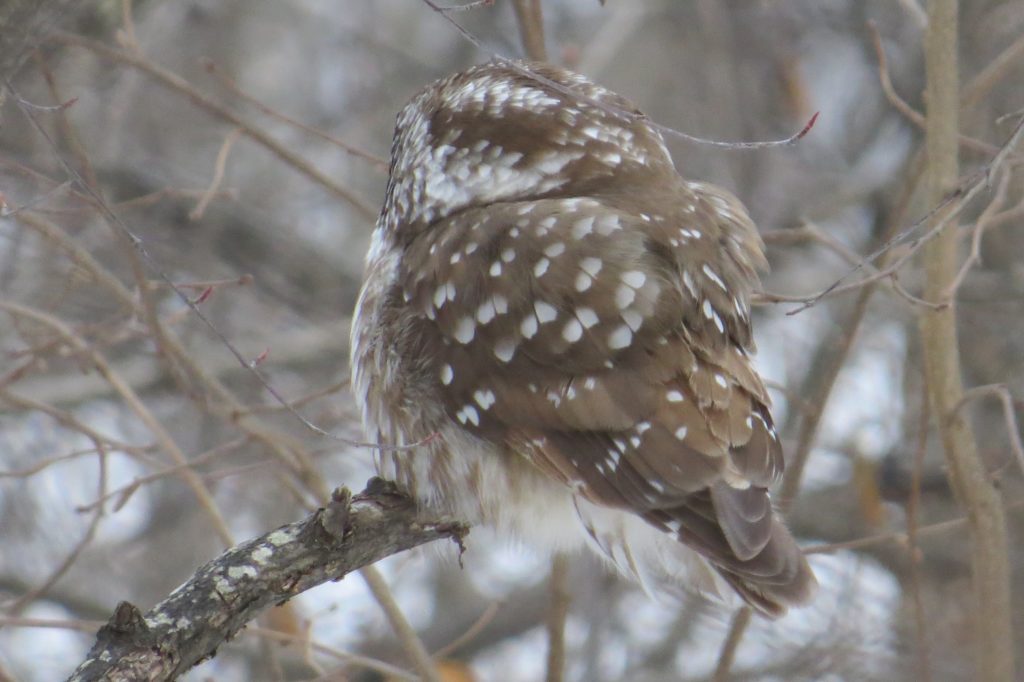 Erik and Kelly made some room for us to see this brush-loving bird through a small window in the branches. It felt good. We had made it. We were looking at a real-live Boreal Owl! Now, we were just waiting to see that face. This was our first glimpse.
Erik and Kelly made some room for us to see this brush-loving bird through a small window in the branches. It felt good. We had made it. We were looking at a real-live Boreal Owl! Now, we were just waiting to see that face. This was our first glimpse.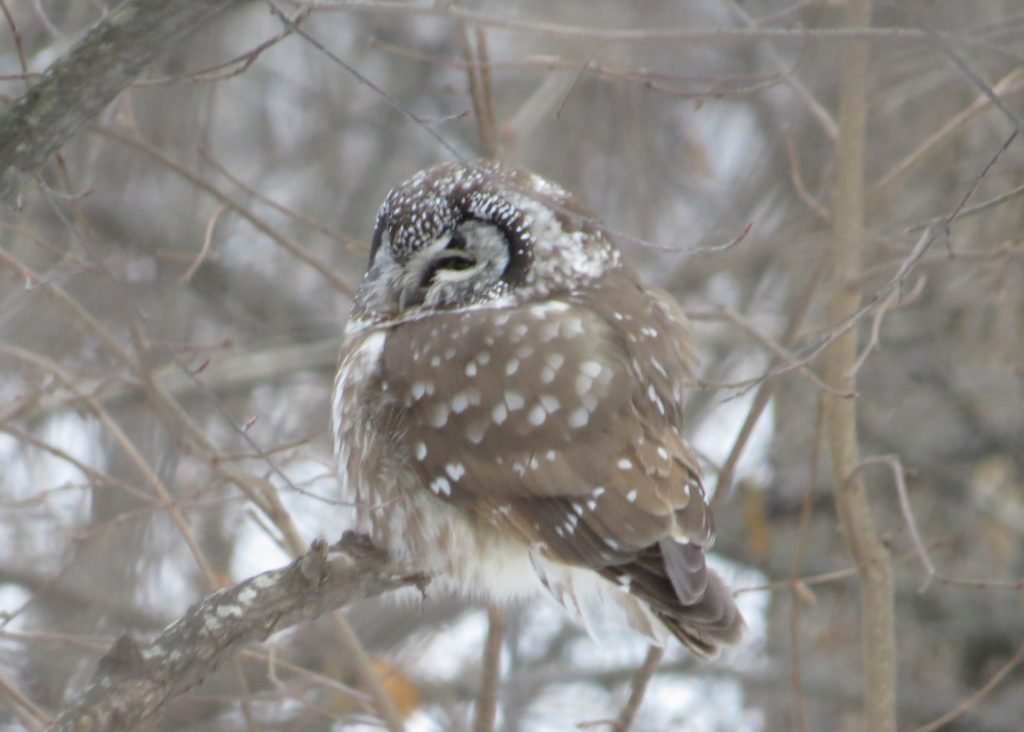 And then:
And then: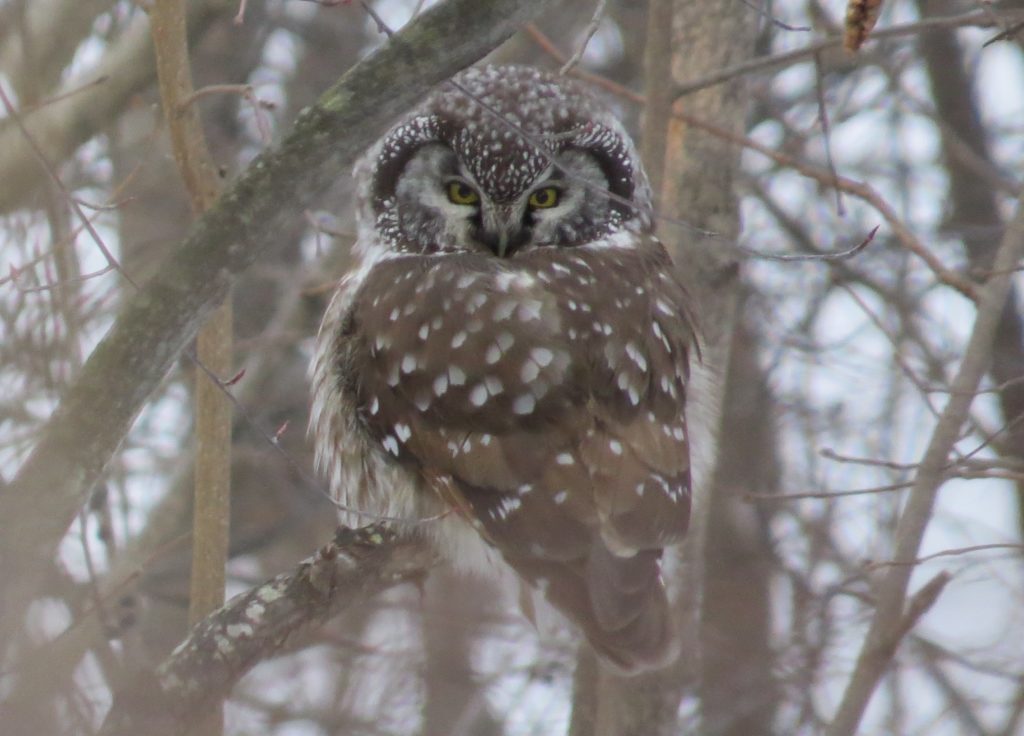
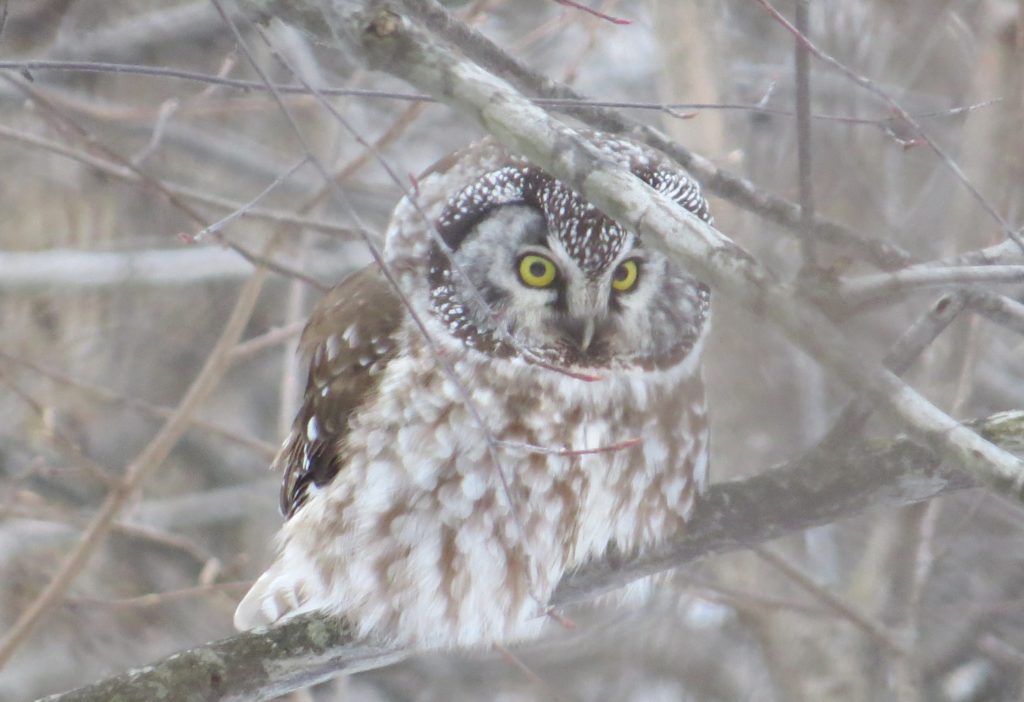
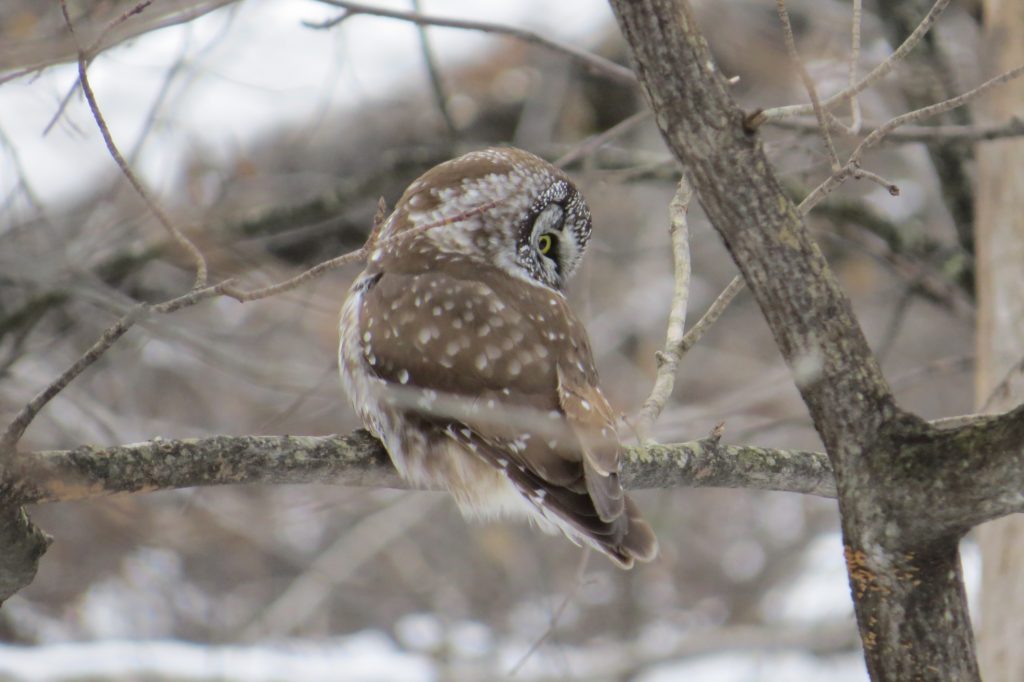
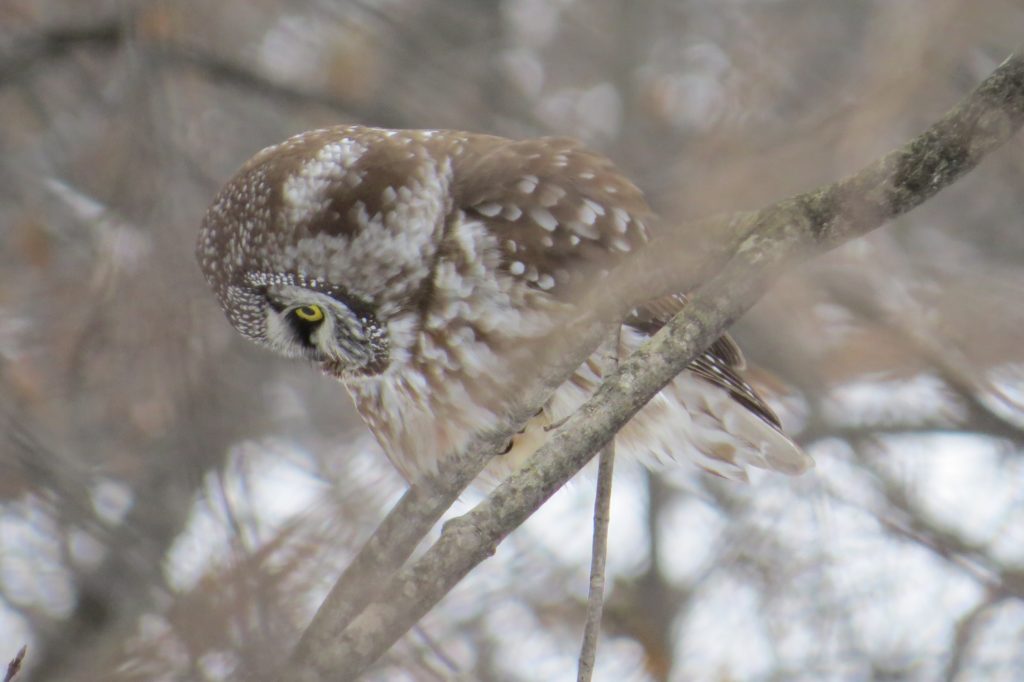
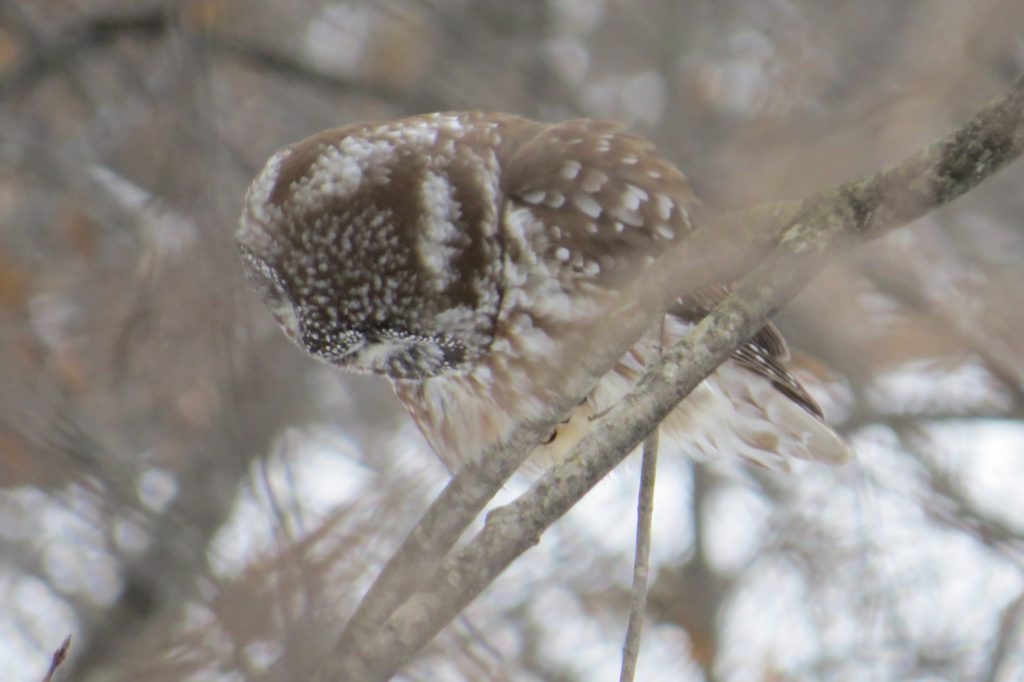 This was, by far, the coolest Owl I had ever seen. This Owl eventually flew away from this spot. I noticed it actually flew close to a different trail. John Richardson and I walked that way and spotted it on top of a brush pile. The views were much better and gave me my best Boreal photo, which Jeff helped me enhance.
This was, by far, the coolest Owl I had ever seen. This Owl eventually flew away from this spot. I noticed it actually flew close to a different trail. John Richardson and I walked that way and spotted it on top of a brush pile. The views were much better and gave me my best Boreal photo, which Jeff helped me enhance.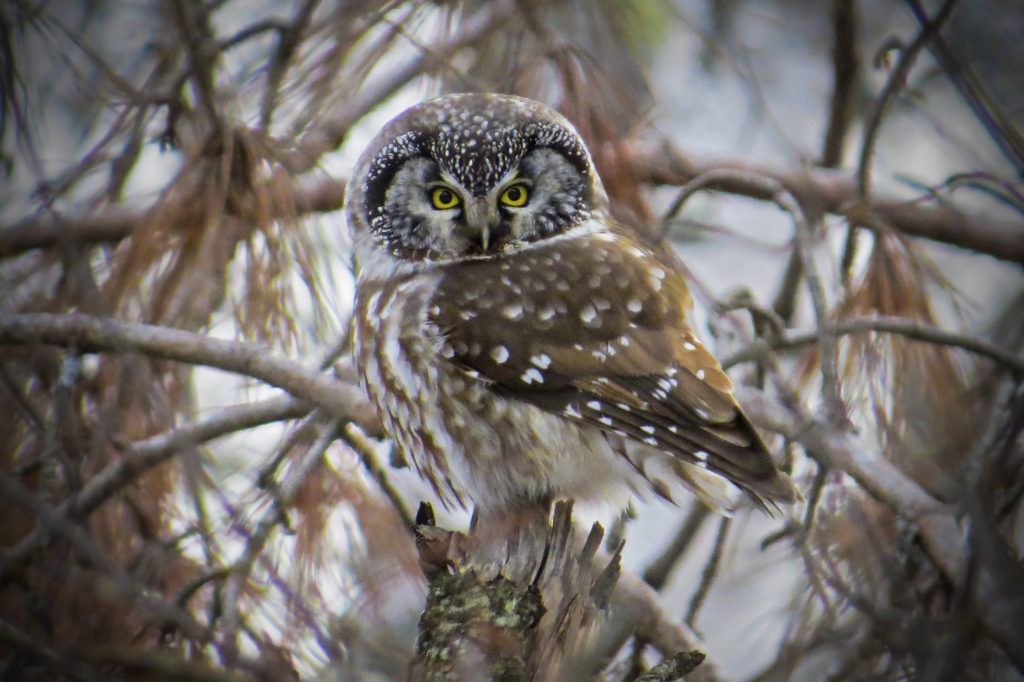
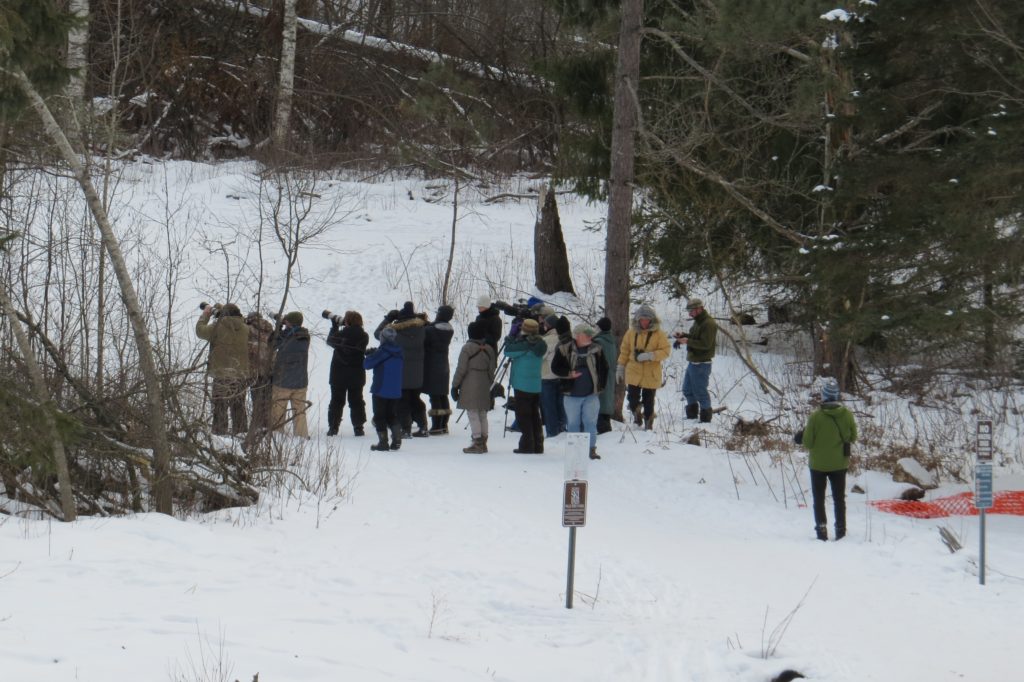 The Owl was now very close to the trails and out in the open. I felt bad that Jeff wasn’t there to experience these photo opportunities; he had not felt well after the Twin Cities Boreal expedition and decided not to come north.
The Owl was now very close to the trails and out in the open. I felt bad that Jeff wasn’t there to experience these photo opportunities; he had not felt well after the Twin Cities Boreal expedition and decided not to come north.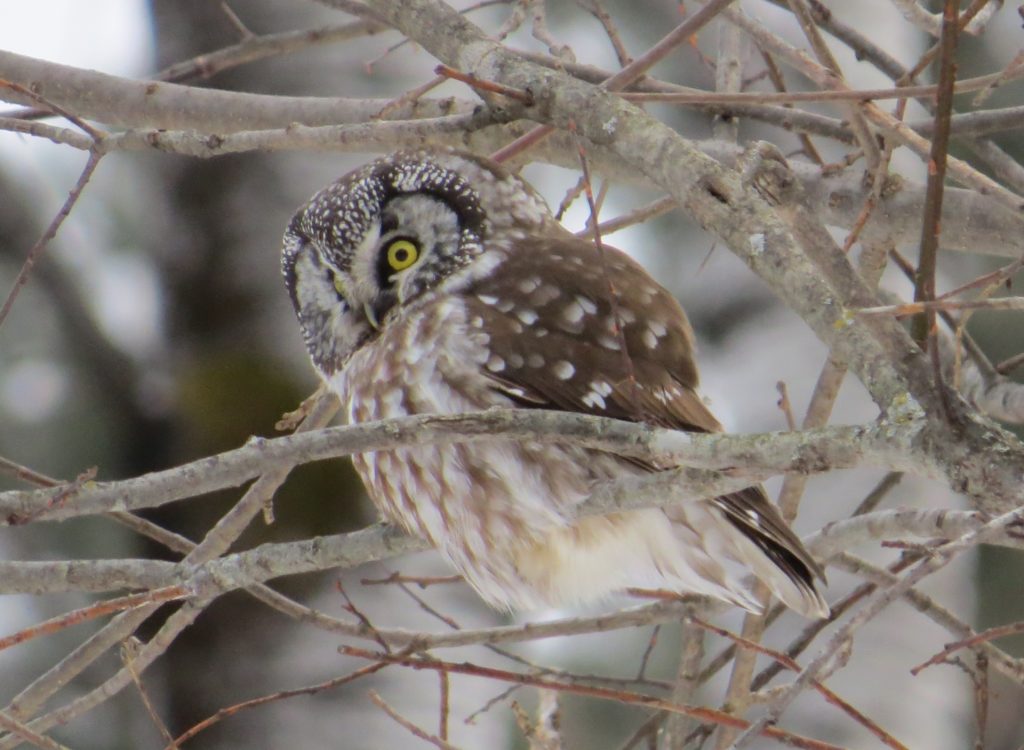 Books describe Boreals as having a surprised look on their face. It is definitely true.
Books describe Boreals as having a surprised look on their face. It is definitely true. 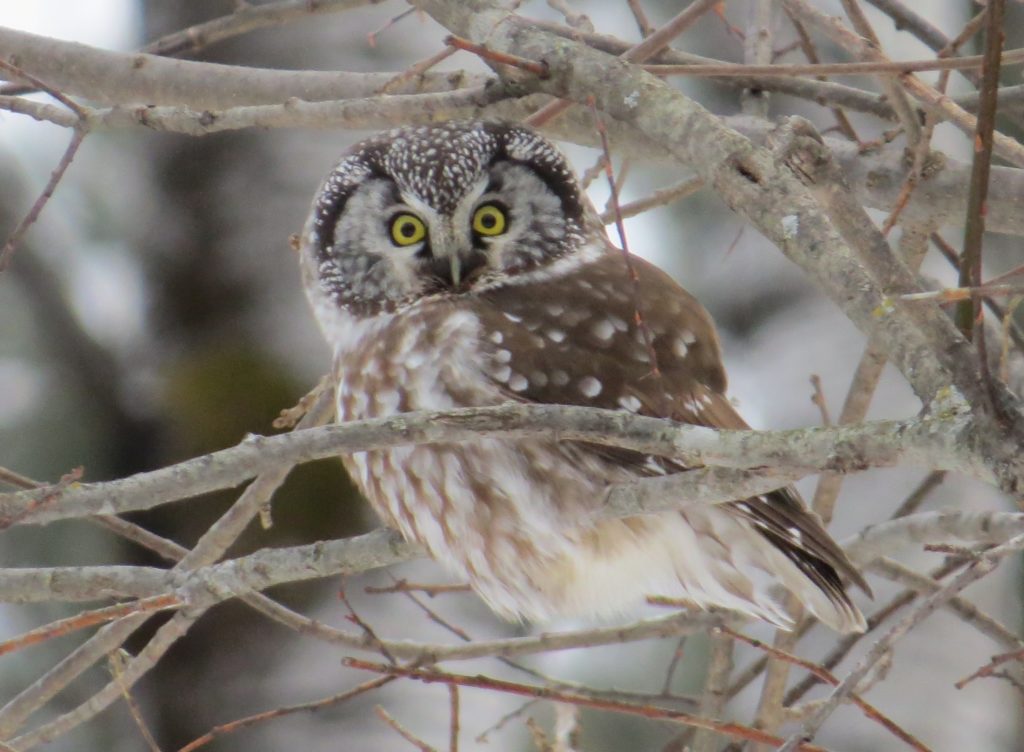

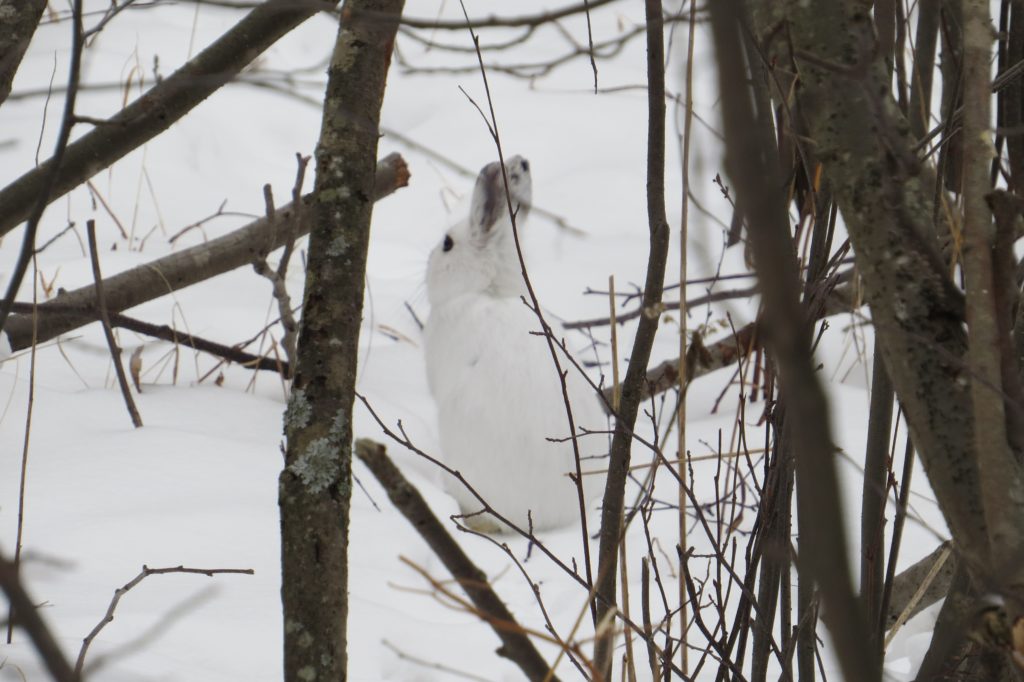 We also took a moment to take a Lake Superior selfie.
We also took a moment to take a Lake Superior selfie.
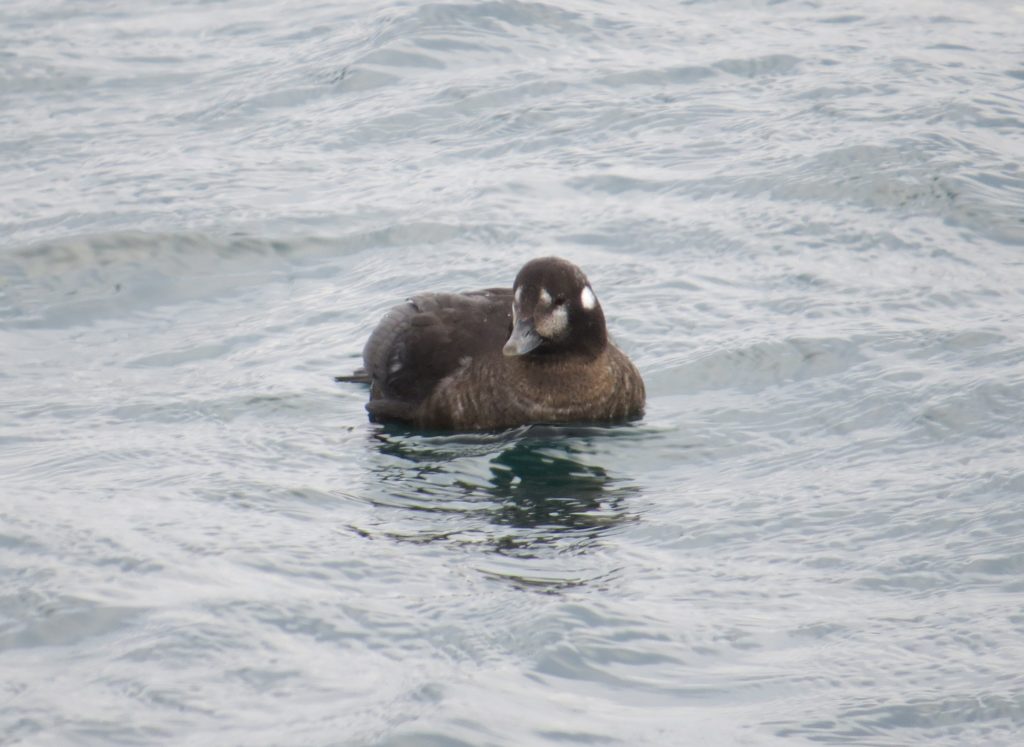
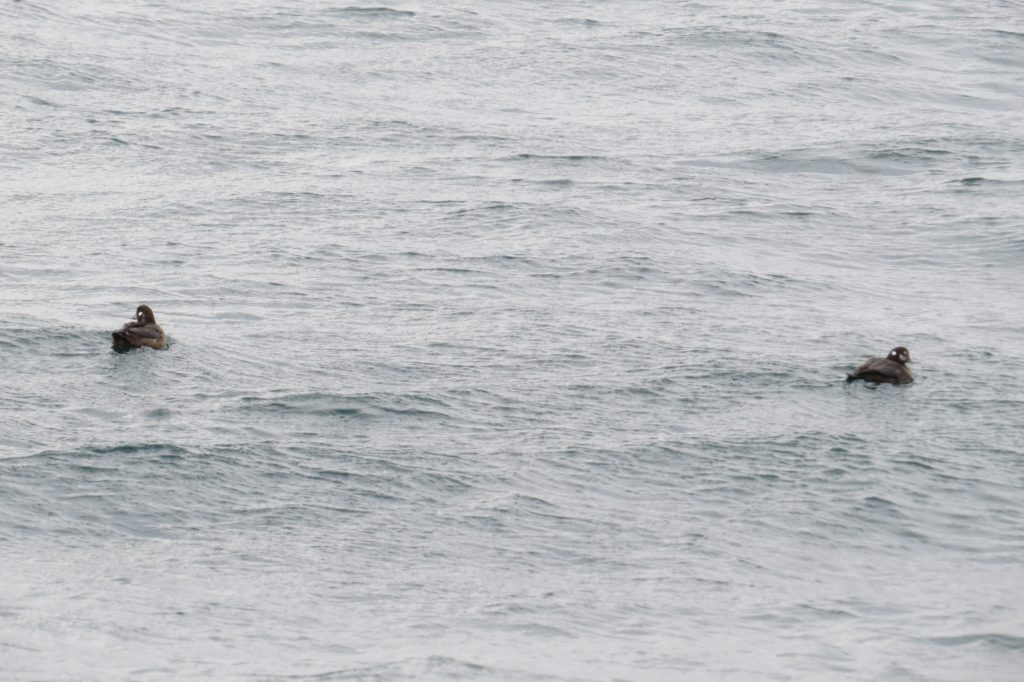 We had barely been in Two Harbors when I got a message from Jeff that he had found his very own Boreal Owl down by Duluth! I was happy he had finally gotten good looks at a bird low and in the open. Knowing there were Great Gray Owls in the area, I asked Evan what we should do. Evan thinks like a true birder because he said we should go after Jeff’s Boreal since we can see Great Grays any year. So once again we were on our way back to Duluth for a Boreal Owl. This one was snoozing in a tree right along Scenic 61. That, combined with the fact that we had gotten our Boreal the day before, meant we did not have to rush this time. Sure enough, this Boreal was right where Jeff had spotted it.
We had barely been in Two Harbors when I got a message from Jeff that he had found his very own Boreal Owl down by Duluth! I was happy he had finally gotten good looks at a bird low and in the open. Knowing there were Great Gray Owls in the area, I asked Evan what we should do. Evan thinks like a true birder because he said we should go after Jeff’s Boreal since we can see Great Grays any year. So once again we were on our way back to Duluth for a Boreal Owl. This one was snoozing in a tree right along Scenic 61. That, combined with the fact that we had gotten our Boreal the day before, meant we did not have to rush this time. Sure enough, this Boreal was right where Jeff had spotted it.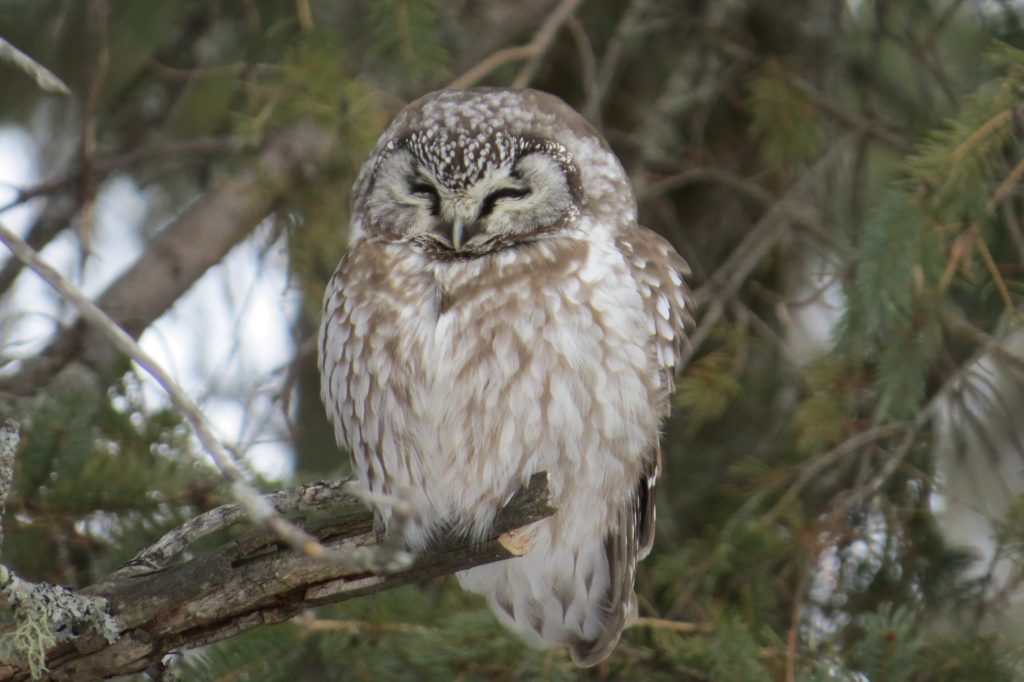 Some people, like myself, have trouble spotting these Owls. Thankfully, people like Evan can point them out.
Some people, like myself, have trouble spotting these Owls. Thankfully, people like Evan can point them out.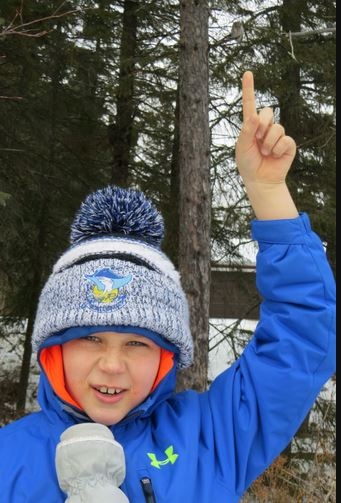
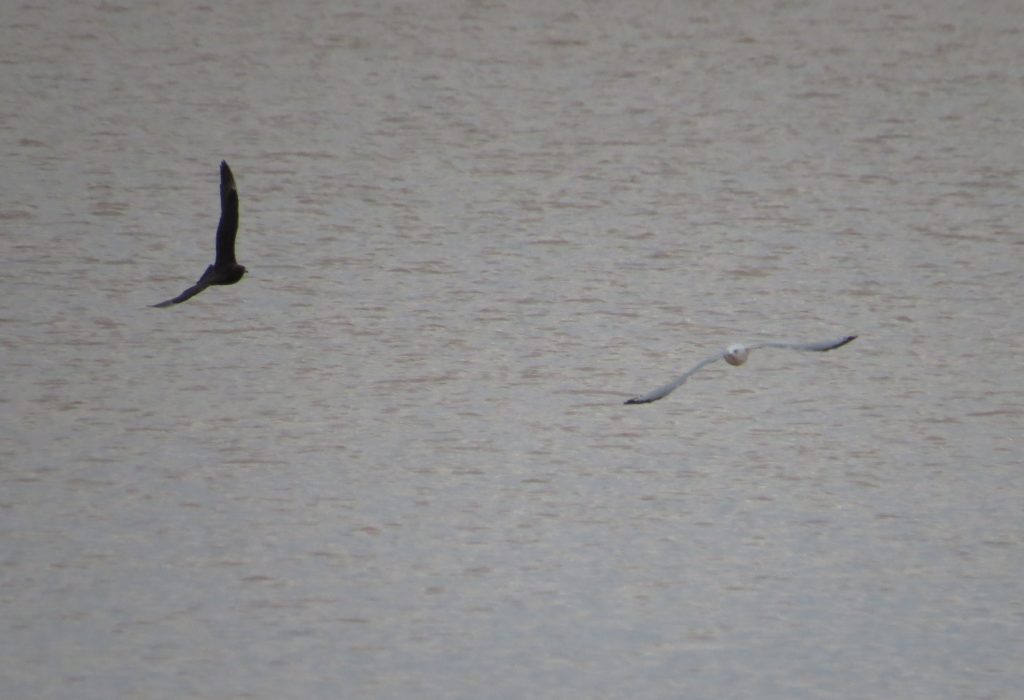
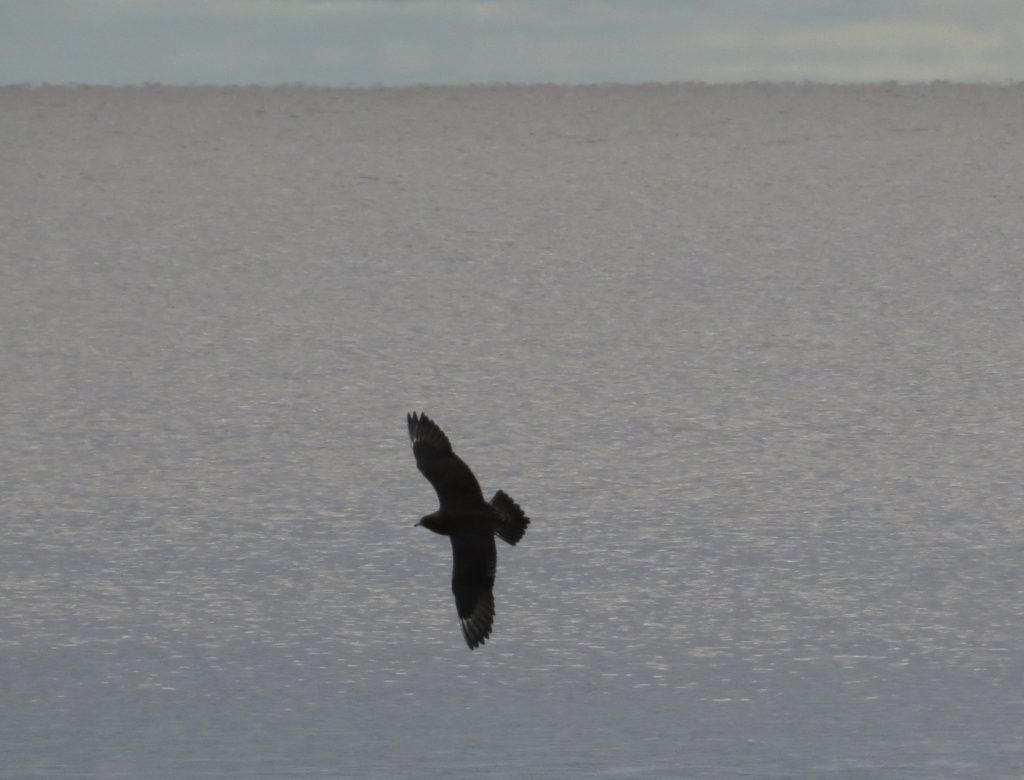
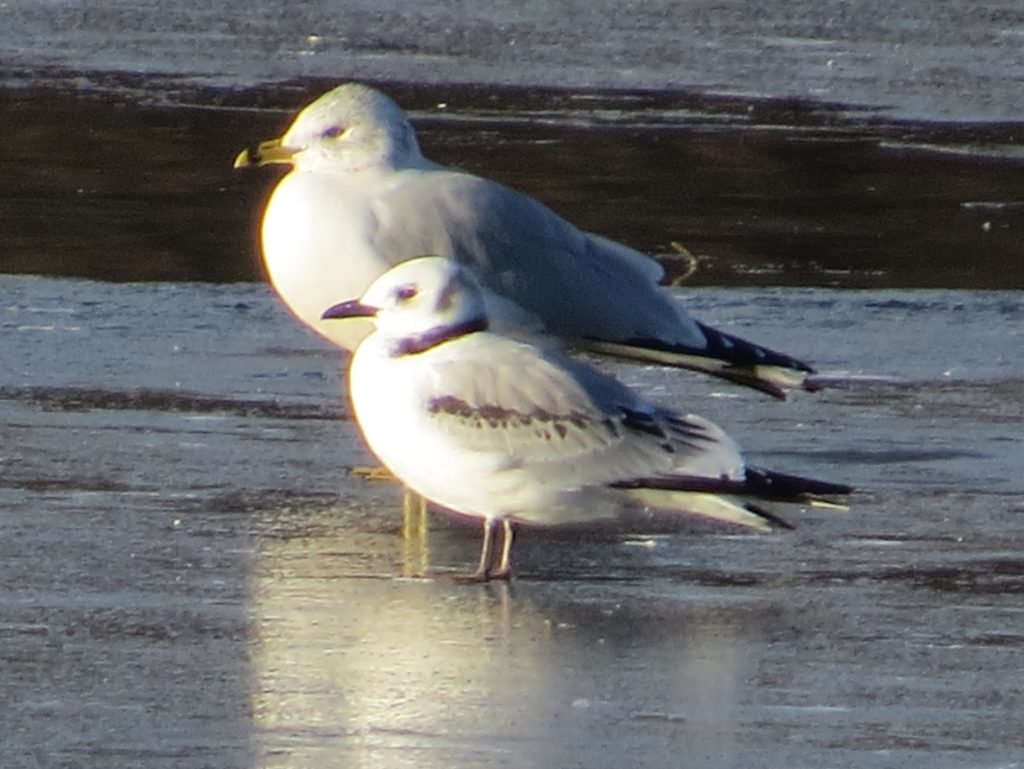
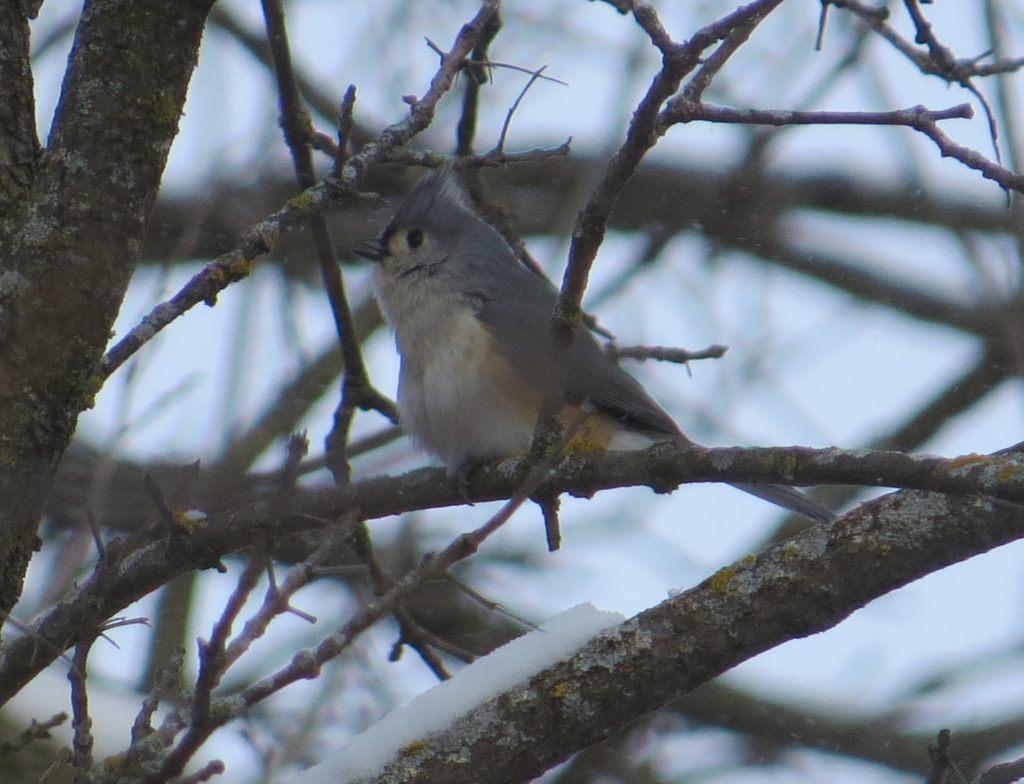
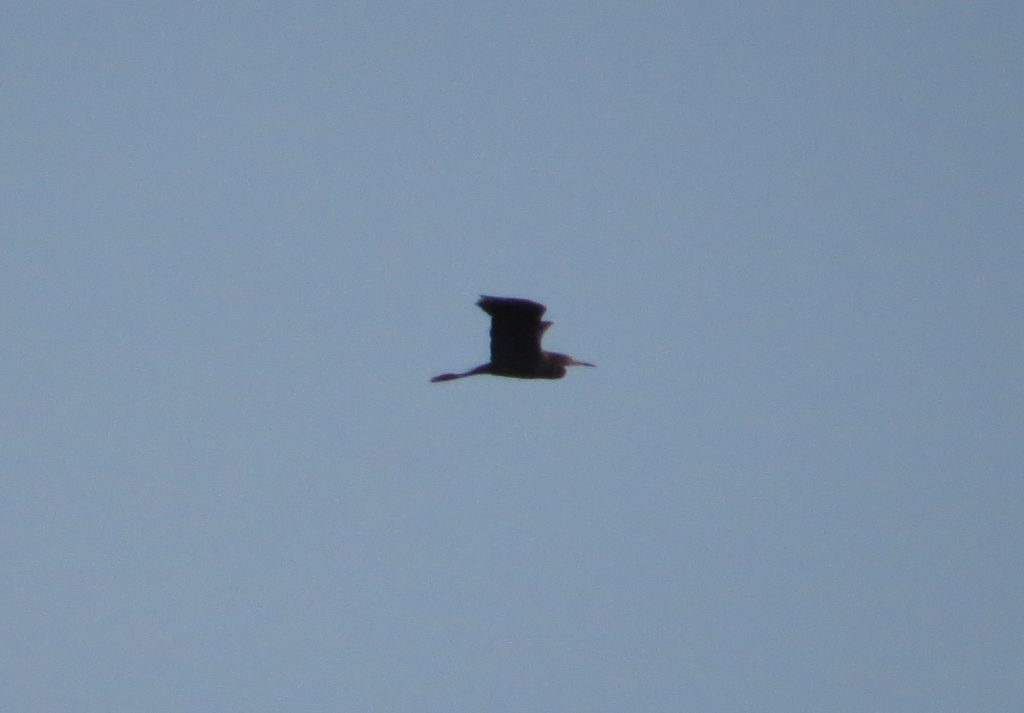
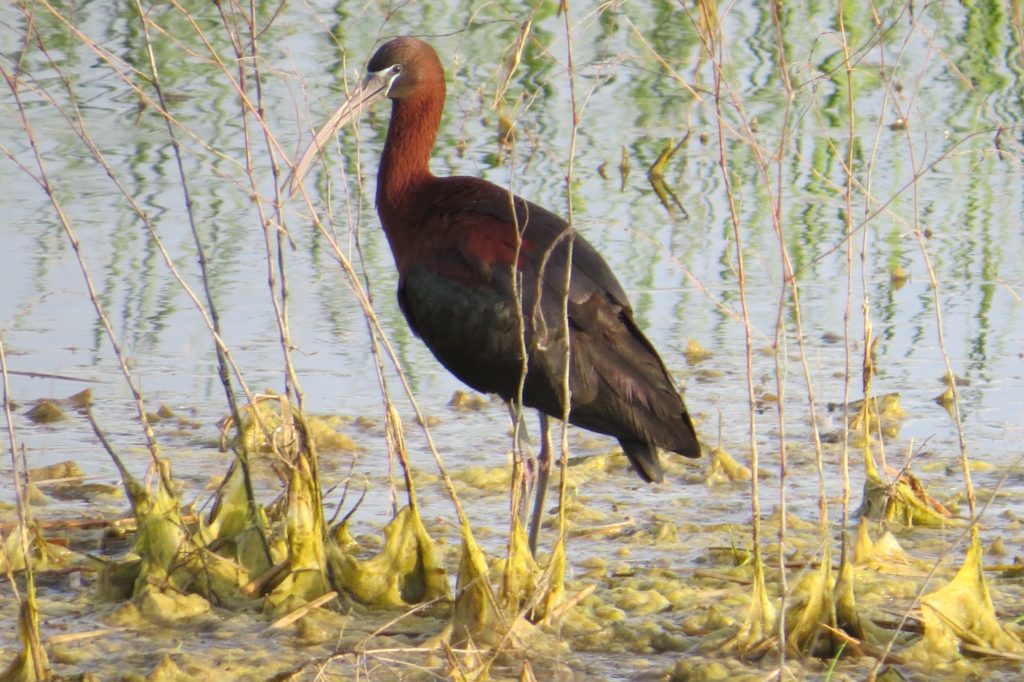
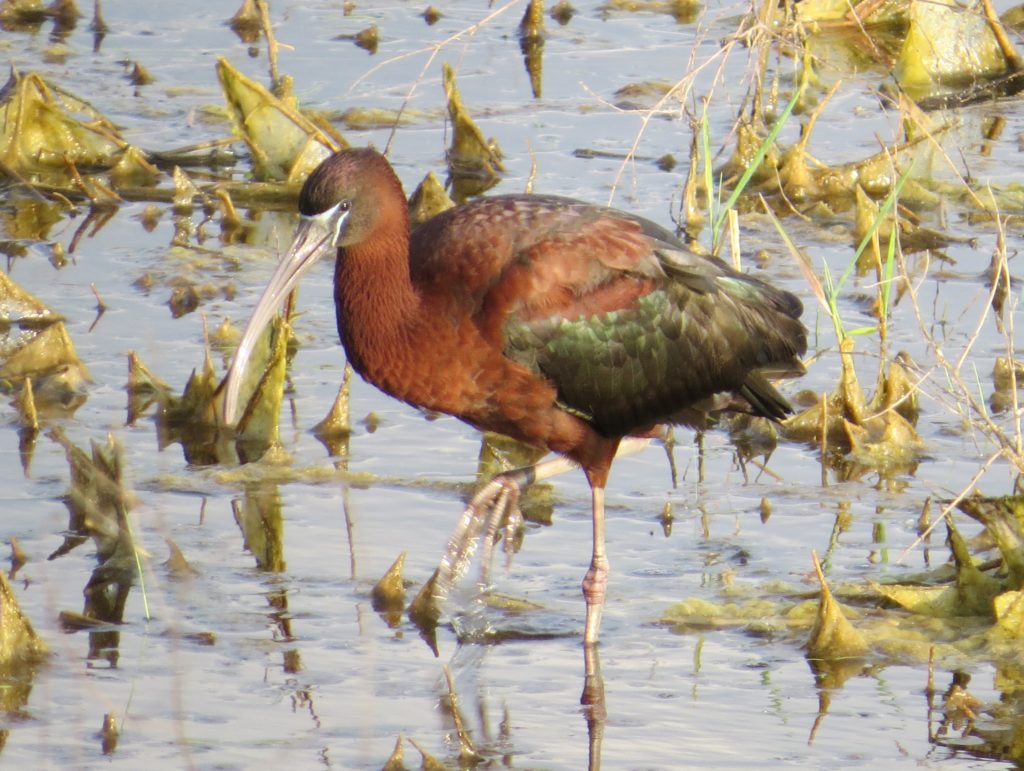 Steve and I were pretty thrilled with going 2/3 on our targets. In addition to these birds, we also nabbed some nice birds that we don’t get to see too often, like this Snowy Egret.
Steve and I were pretty thrilled with going 2/3 on our targets. In addition to these birds, we also nabbed some nice birds that we don’t get to see too often, like this Snowy Egret.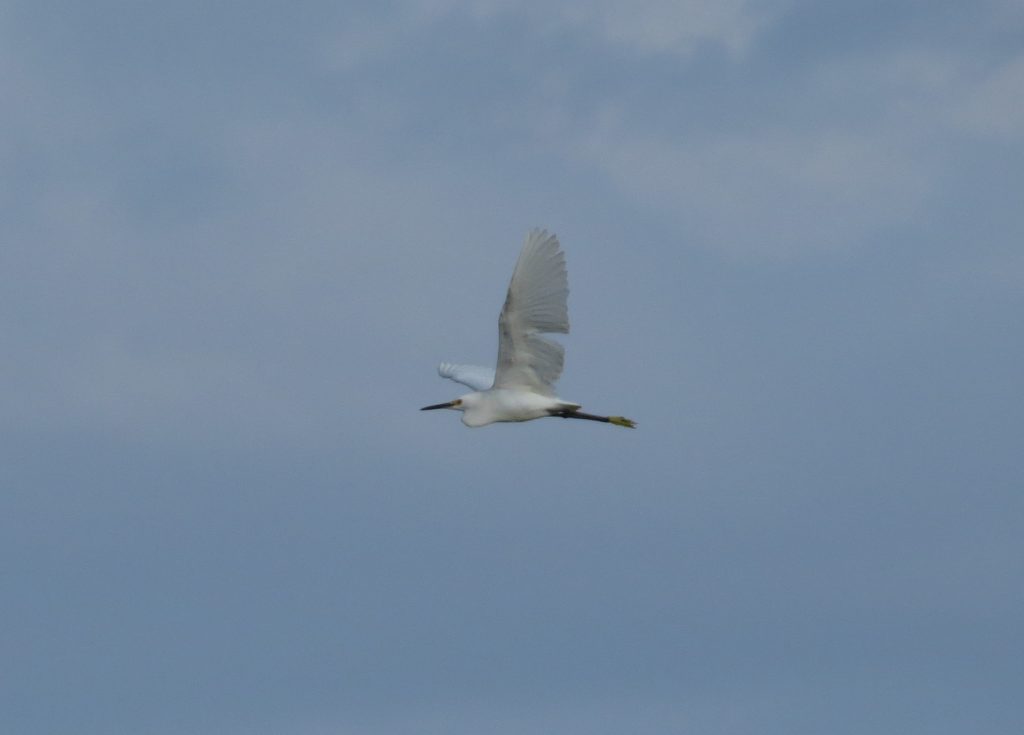
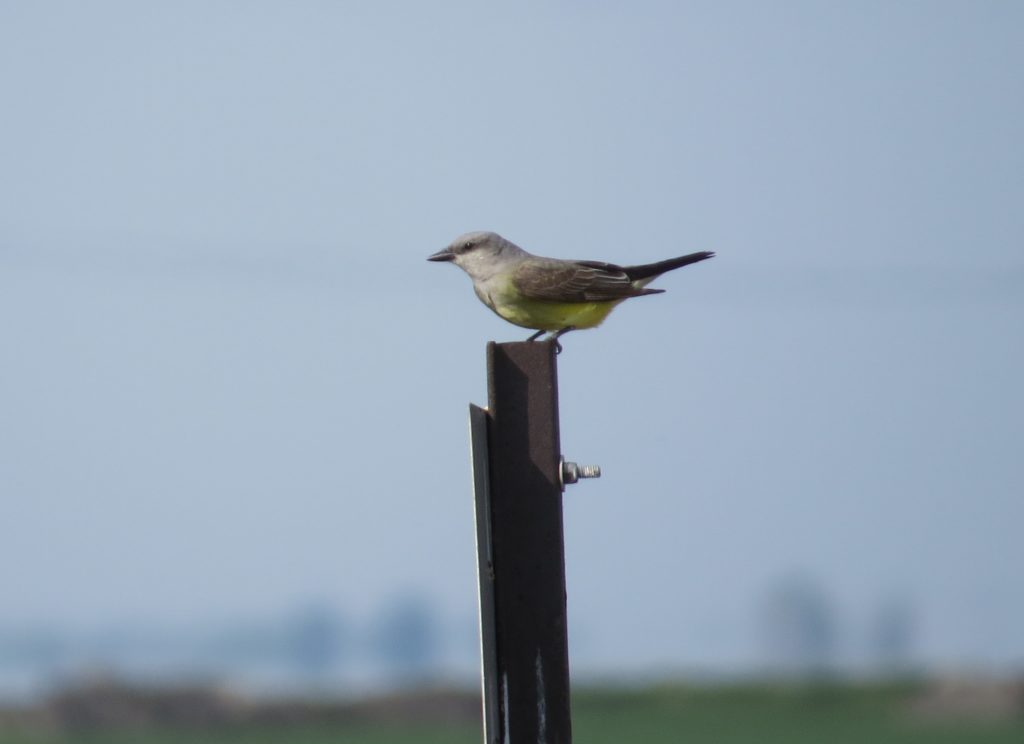 And who does not love seeing an Upland Sandpiper, especially one so crushable?
And who does not love seeing an Upland Sandpiper, especially one so crushable?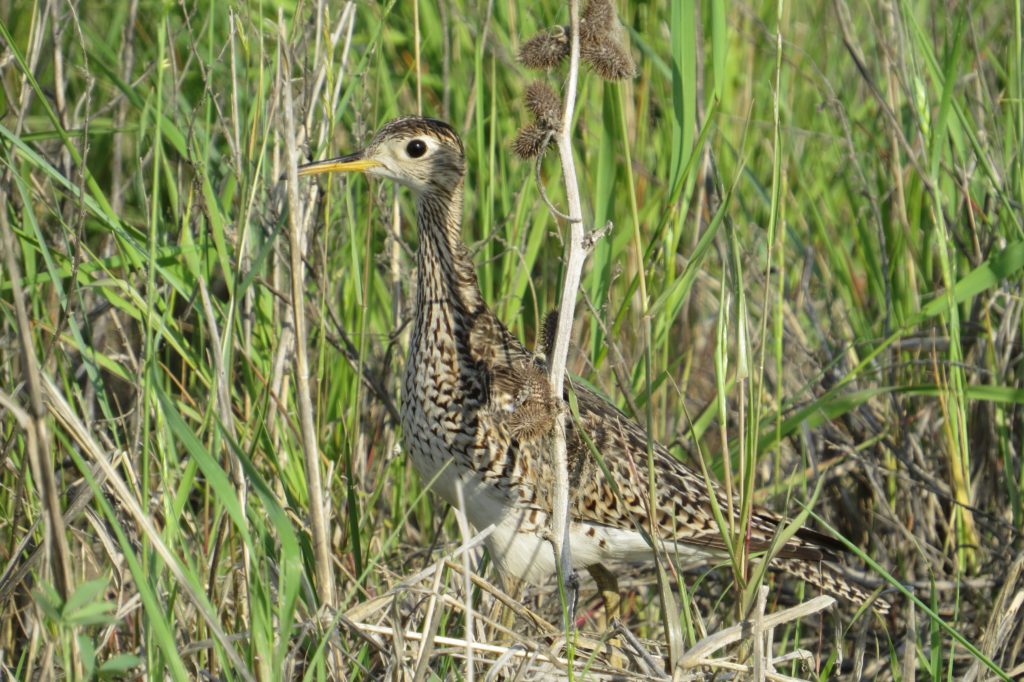
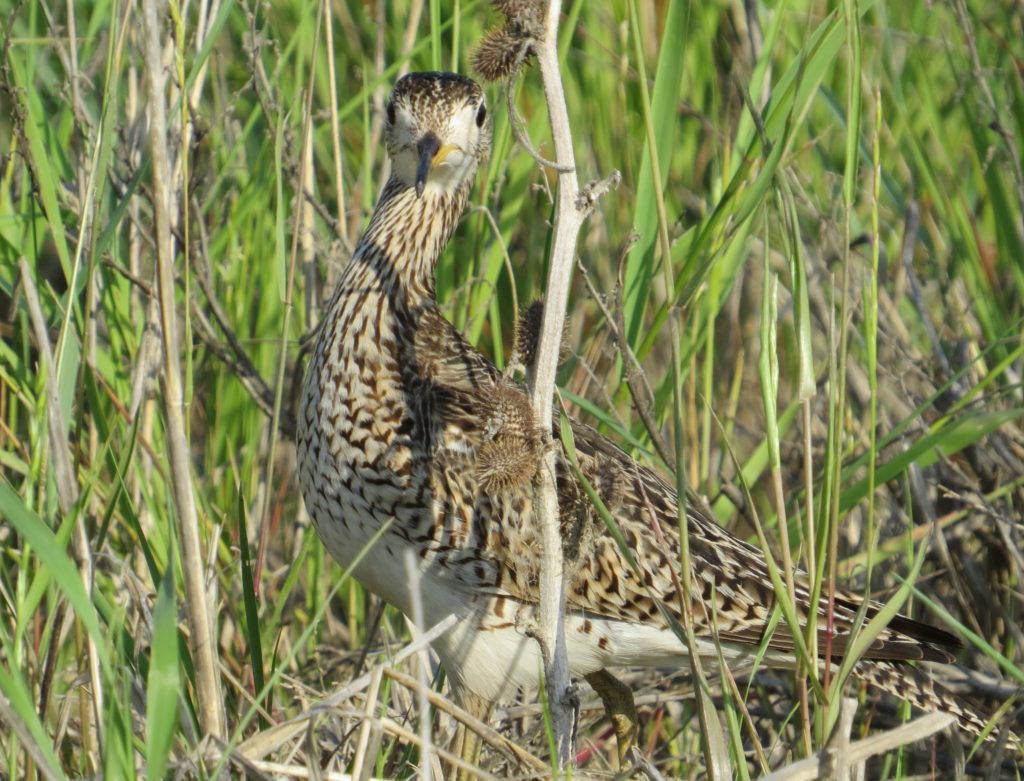 Steve and I felt pretty darn good about our trip and our nice haul of birds. We were completely satisfied, until….
Steve and I felt pretty darn good about our trip and our nice haul of birds. We were completely satisfied, until….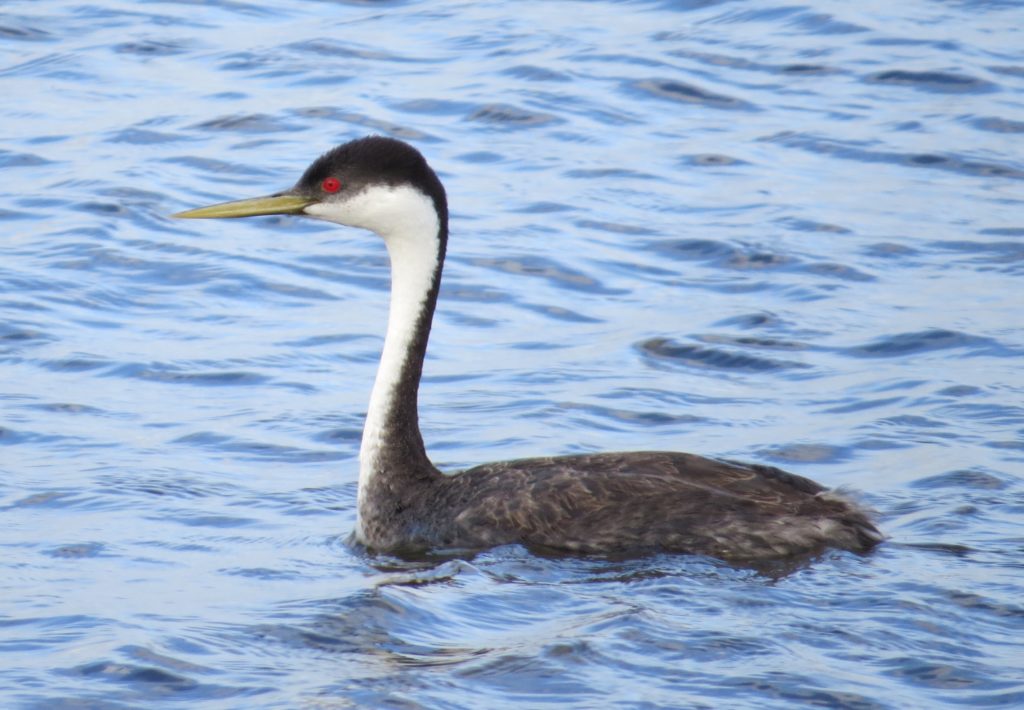 Steve and I did, however, see another casual species that was also discovered during this historic period of MN birding which I have failed to disclose in the timeline. A pair of Black-necked Stilts had set up shop in one of the shallow pools of the Impoundment. Considering I already had Black-necked Stilts for Grant County from several years ago and that Steve had just gotten this state bird recently, we just weren’t too fired up about it, especially after our double dip.
Steve and I did, however, see another casual species that was also discovered during this historic period of MN birding which I have failed to disclose in the timeline. A pair of Black-necked Stilts had set up shop in one of the shallow pools of the Impoundment. Considering I already had Black-necked Stilts for Grant County from several years ago and that Steve had just gotten this state bird recently, we just weren’t too fired up about it, especially after our double dip.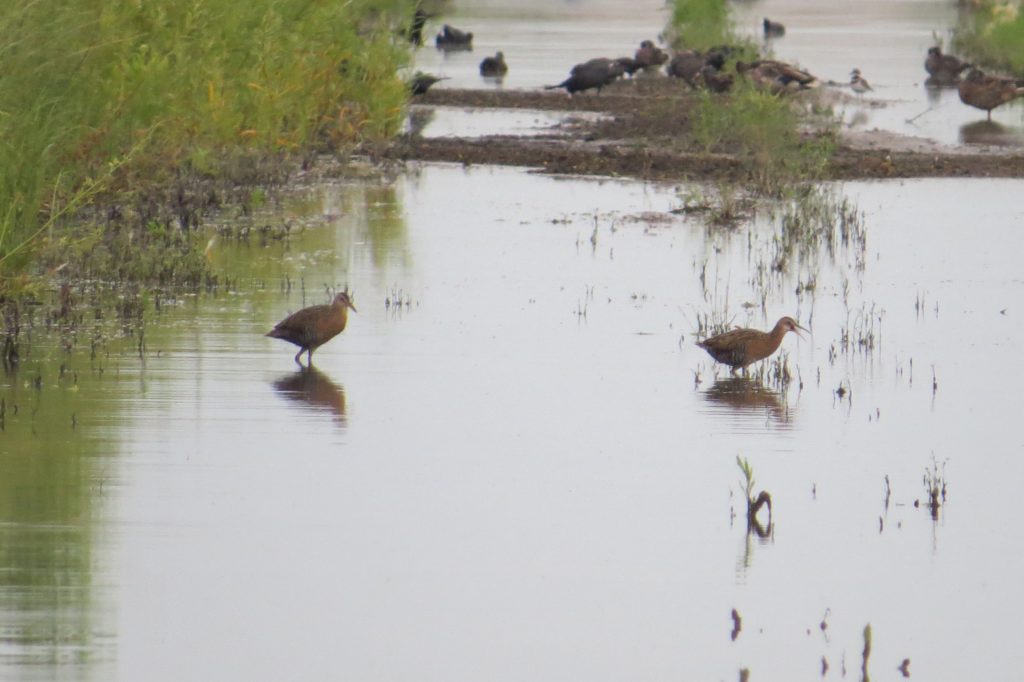 Look at the size of these things compared to the Mallards in the background. No wonder it’s the King of the Rails.
Look at the size of these things compared to the Mallards in the background. No wonder it’s the King of the Rails.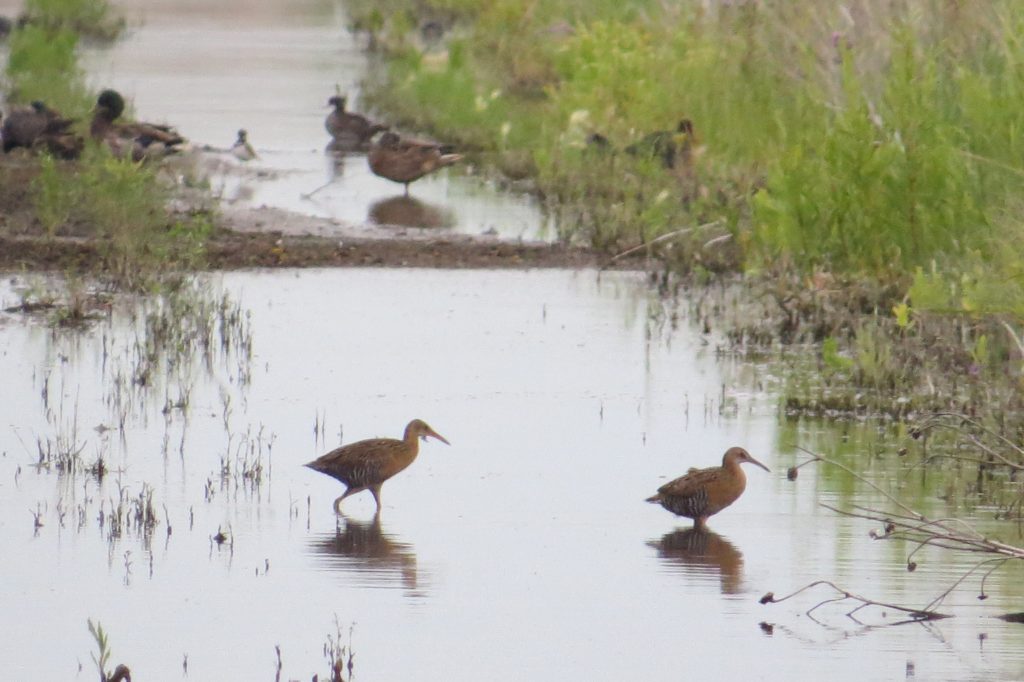
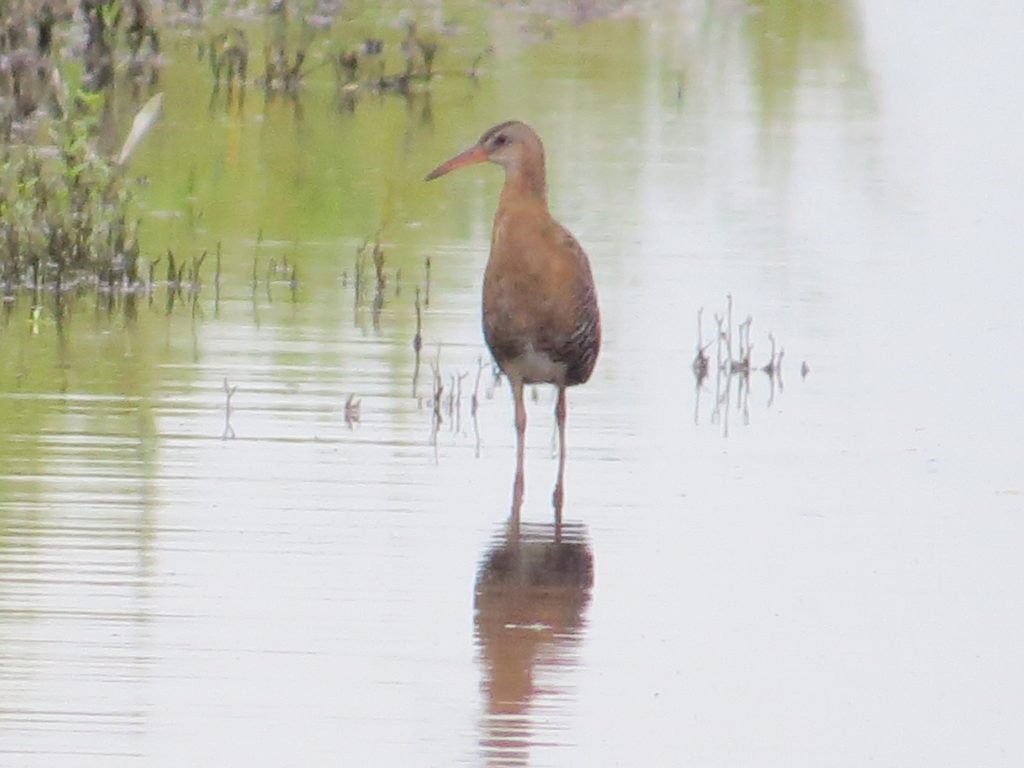 Birding is a roller coaster of emotions, and Steve and I were back on top after this sighting. Steve suggested we try for those Nelson’s Sparrows again. Despite our good fortune of the morning, I was skeptical we would find the Sparrows. But not looking certainly guarantees that outcome. So we walked the dike berm that we had a week ago. This time it definitely felt more Sparrowy–no wind, early morning, etc. We played the tape and didn’t get a response. Then a couple minutes later, I heard the recording, or what I thought was the recording, again. I asked Steve if he had left his phone app on. When he replied that he hadn’t we knew were hearing the real deal! We continued to work the area, and eventually we saw two Nelson’s Sparrows!
Birding is a roller coaster of emotions, and Steve and I were back on top after this sighting. Steve suggested we try for those Nelson’s Sparrows again. Despite our good fortune of the morning, I was skeptical we would find the Sparrows. But not looking certainly guarantees that outcome. So we walked the dike berm that we had a week ago. This time it definitely felt more Sparrowy–no wind, early morning, etc. We played the tape and didn’t get a response. Then a couple minutes later, I heard the recording, or what I thought was the recording, again. I asked Steve if he had left his phone app on. When he replied that he hadn’t we knew were hearing the real deal! We continued to work the area, and eventually we saw two Nelson’s Sparrows!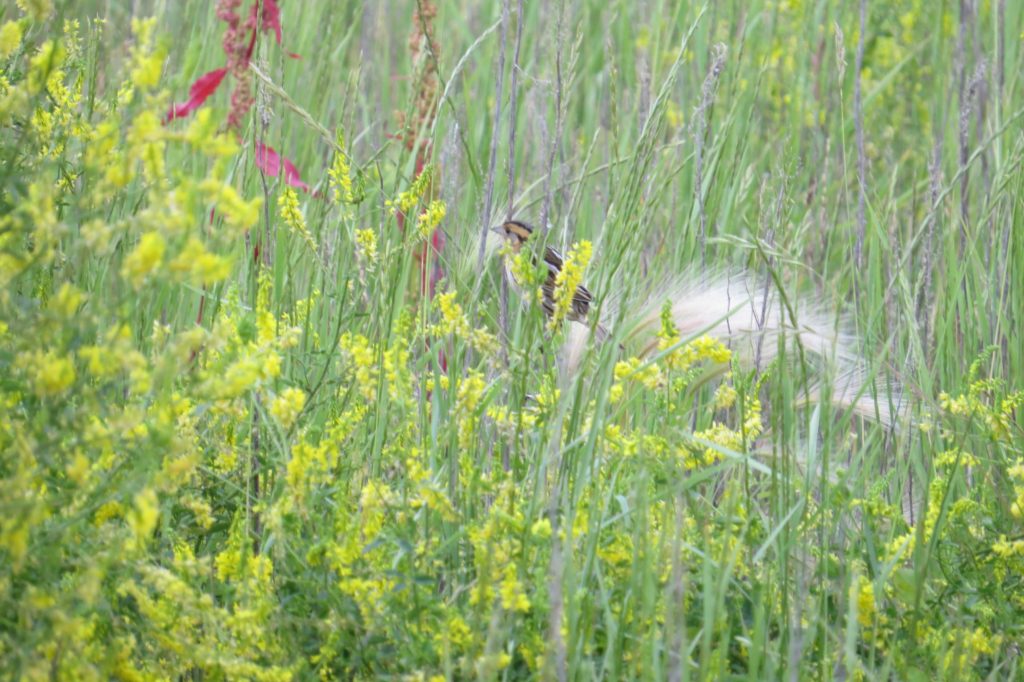 With some pishing we were able to get them to pop up for some great looks at these skulkers.
With some pishing we were able to get them to pop up for some great looks at these skulkers.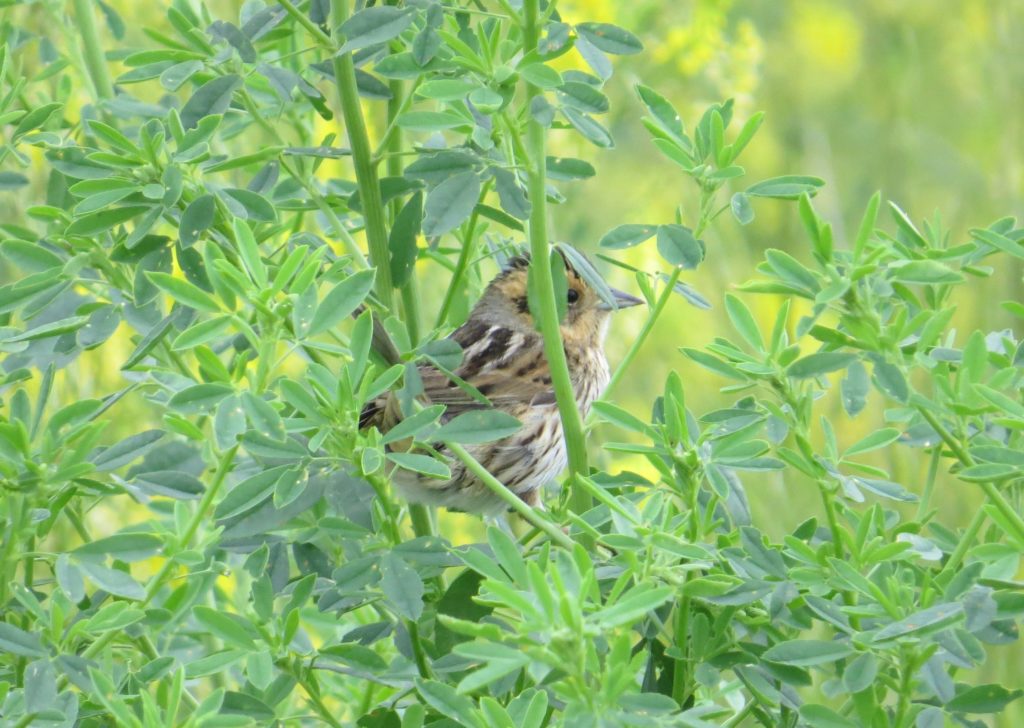
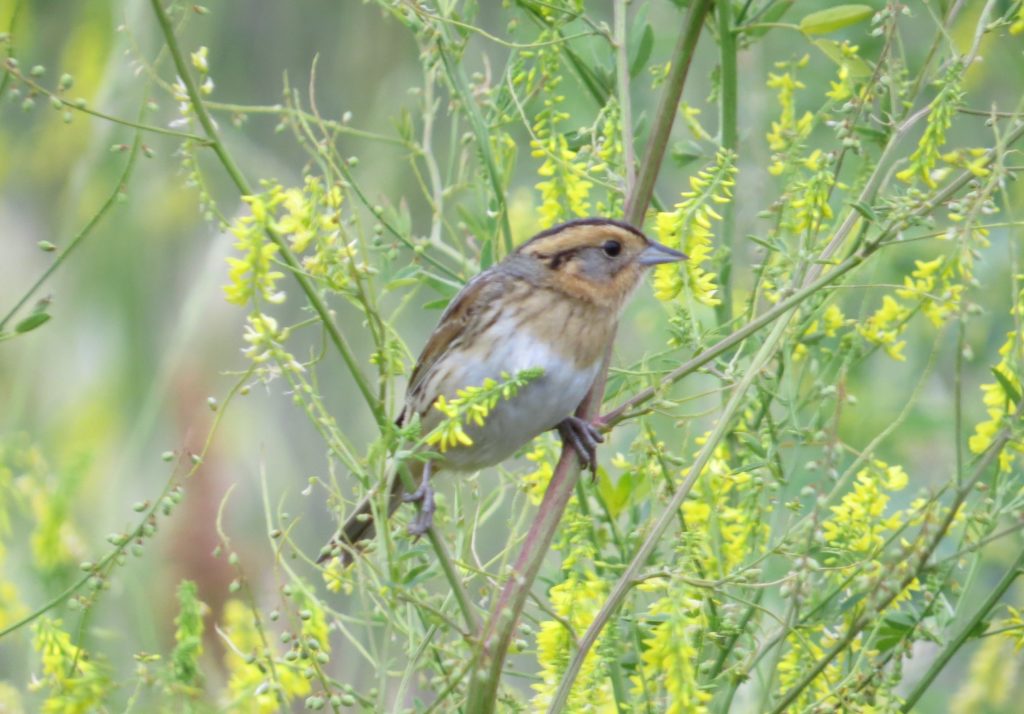 Steve and I followed these birds around for a bit, thoroughly soaking up the experience. I don’t think either of us ever expected to lifer on this bird with such good looks. We certainly didn’t expect to get this lifer in Grant County. This nighttime singer is often a heard-only bird that people trek to middle of nowhere (McGregor) to find in the middle of the night. We were stupefied. Talking it over on the ride home, we concluded that the Nelson’s Sparrow lifer experience topped the King Rails even though the Sparrow is a summer resident in our state. More than once I have been surprised by how much of an impact a Sparrow lifer has on me. A huge thanks goes out to Becca Engdahl for her find and her tips on locating it!
Steve and I followed these birds around for a bit, thoroughly soaking up the experience. I don’t think either of us ever expected to lifer on this bird with such good looks. We certainly didn’t expect to get this lifer in Grant County. This nighttime singer is often a heard-only bird that people trek to middle of nowhere (McGregor) to find in the middle of the night. We were stupefied. Talking it over on the ride home, we concluded that the Nelson’s Sparrow lifer experience topped the King Rails even though the Sparrow is a summer resident in our state. More than once I have been surprised by how much of an impact a Sparrow lifer has on me. A huge thanks goes out to Becca Engdahl for her find and her tips on locating it!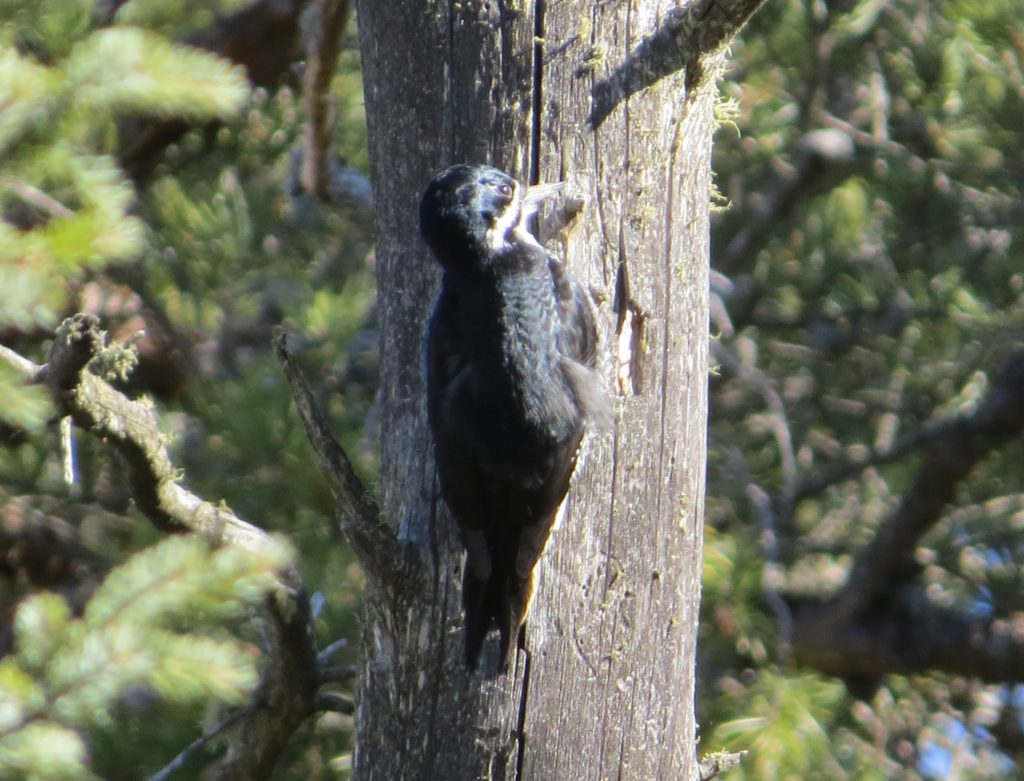 We carried on with our walk that had us traversing the same stretch of road several times. Then we heard drumming quite a ways from the Black-backed and knew it was a different bird. We repeated the drill of tracking down the source. Only this time it was different. John was the first one to get eyes on it and announced it was the American Three-toed Woodpecker and the male at that!
We carried on with our walk that had us traversing the same stretch of road several times. Then we heard drumming quite a ways from the Black-backed and knew it was a different bird. We repeated the drill of tracking down the source. Only this time it was different. John was the first one to get eyes on it and announced it was the American Three-toed Woodpecker and the male at that!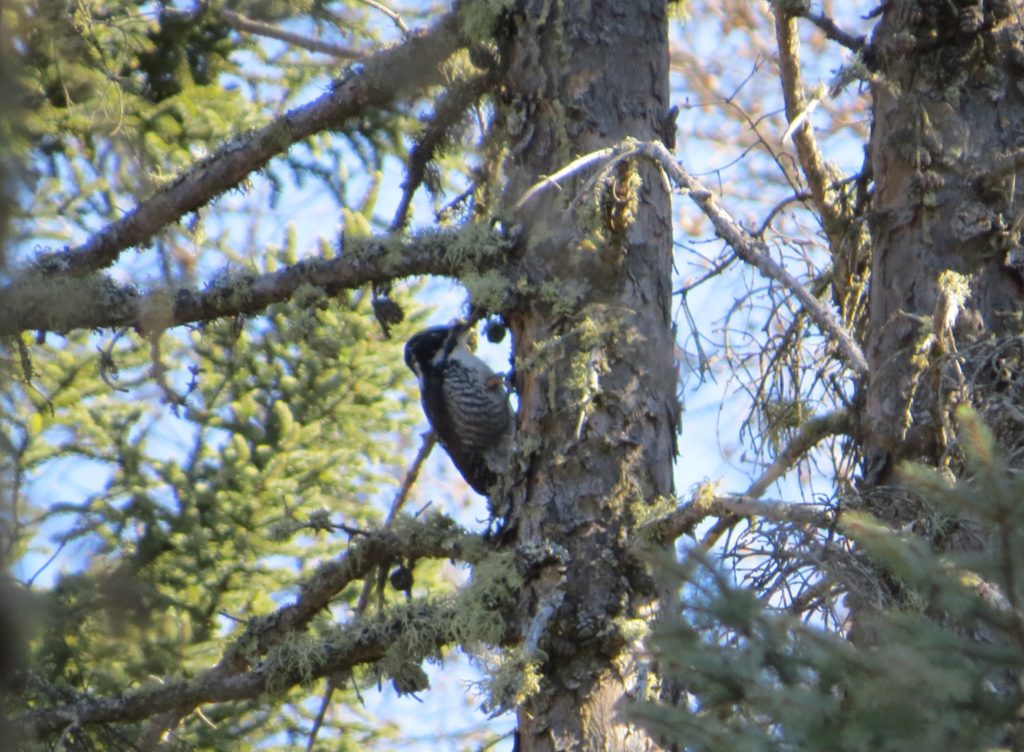 It was a huge lifer for me–there are only a handful of regular birds in Minnesota I can still add to my life list, and the icing on the cake was that this was a hometown bird. It really doesn’t get better than that, and I spent a lot of time soaking up the experience and taking lots of photos.
It was a huge lifer for me–there are only a handful of regular birds in Minnesota I can still add to my life list, and the icing on the cake was that this was a hometown bird. It really doesn’t get better than that, and I spent a lot of time soaking up the experience and taking lots of photos.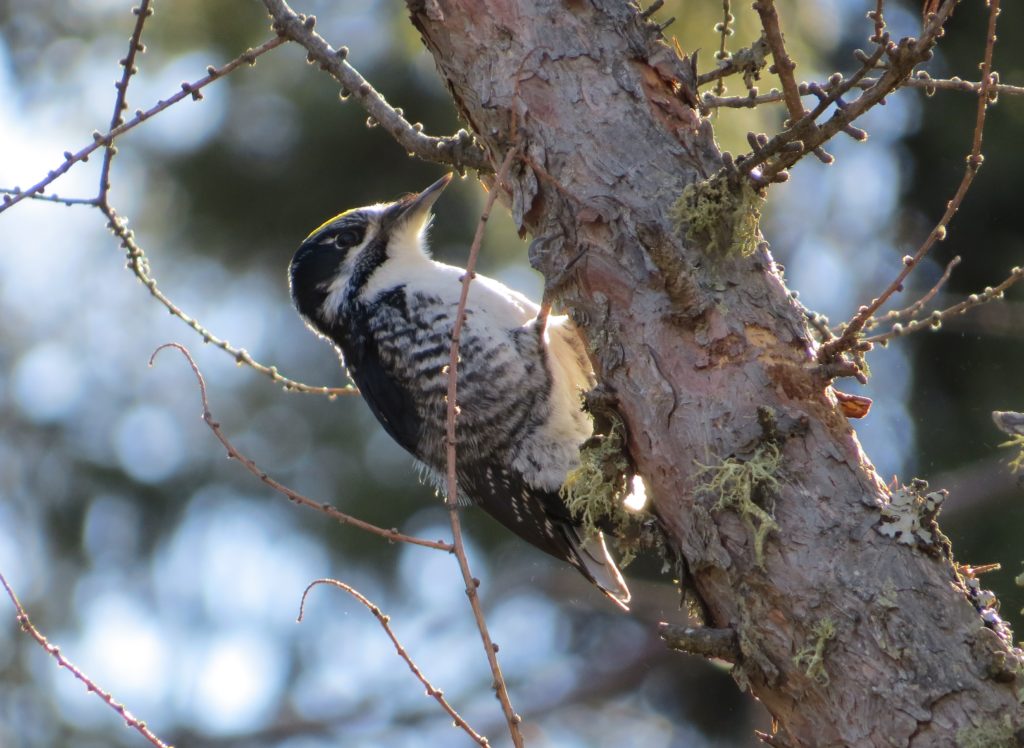
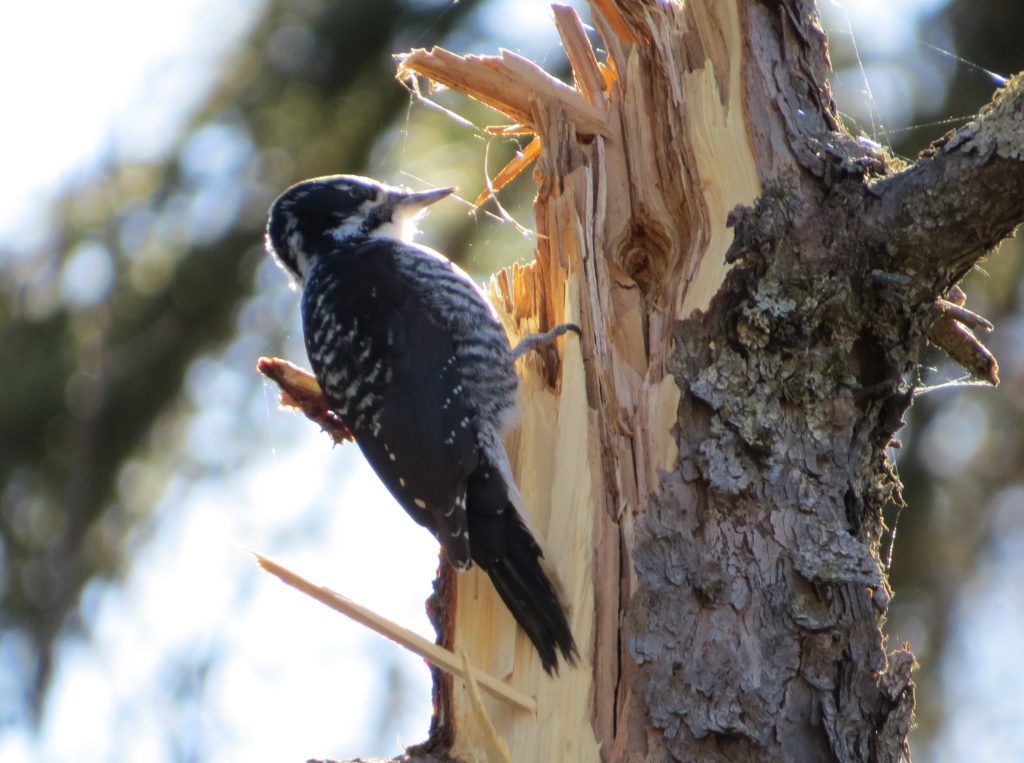 At one point this Woodpecker flew down and worked the bark along a downed tree. This bird was oblivious to my presence and let me approach within 5 feet as it frantically flaked bark to look for insects.
At one point this Woodpecker flew down and worked the bark along a downed tree. This bird was oblivious to my presence and let me approach within 5 feet as it frantically flaked bark to look for insects.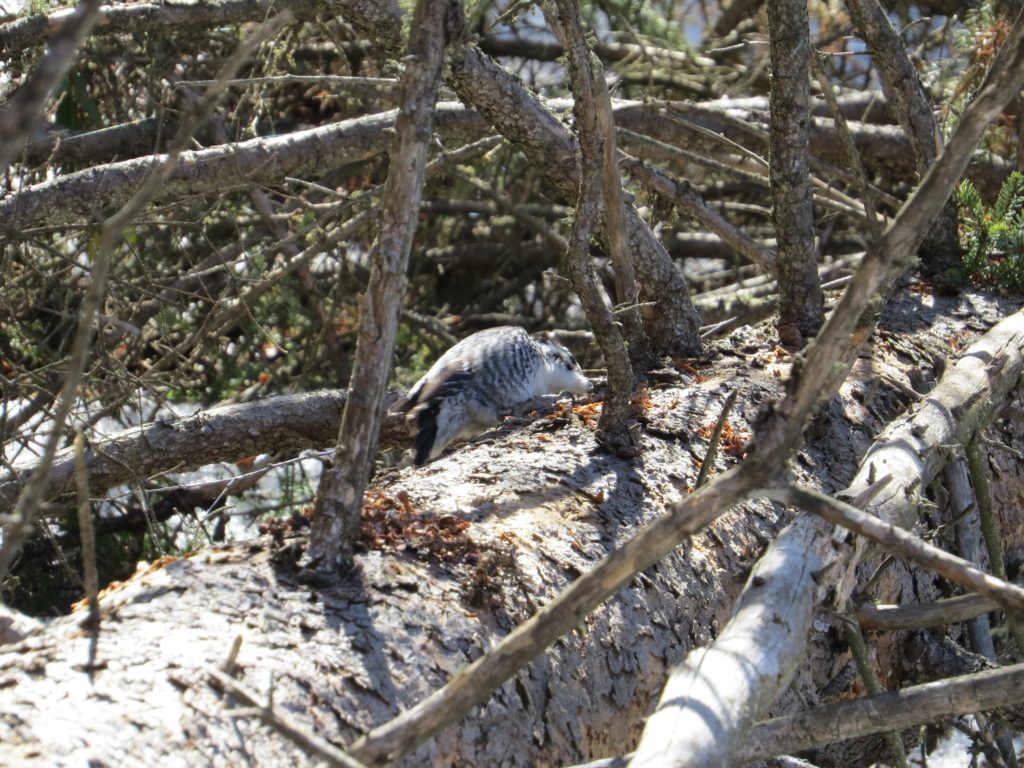
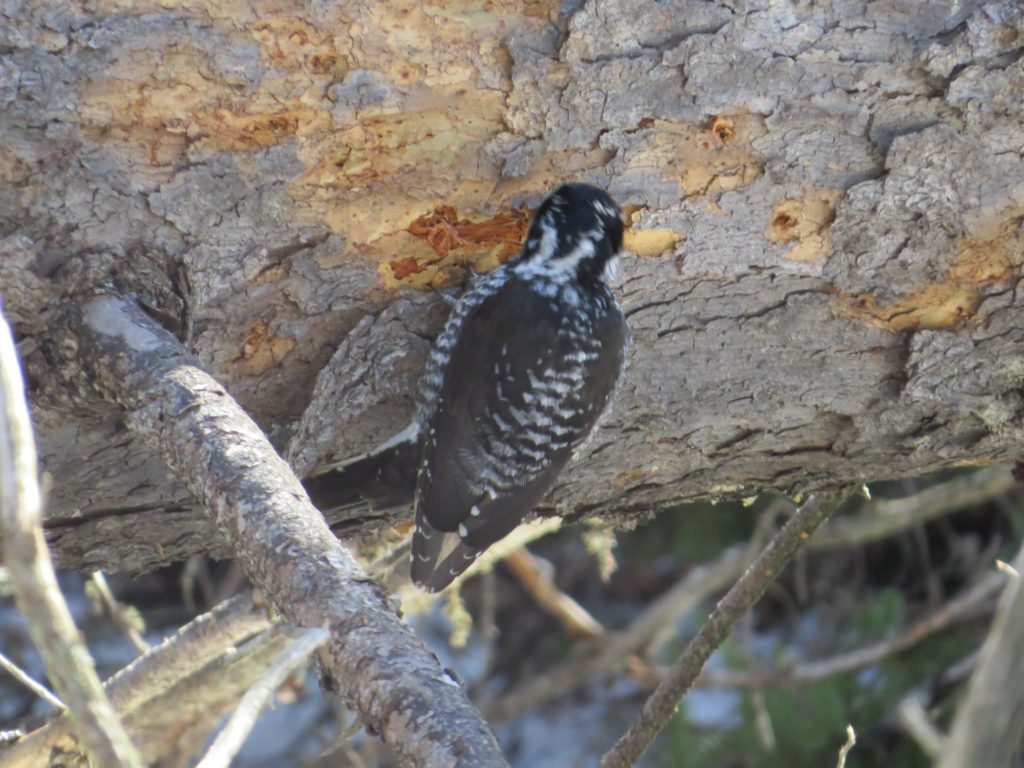
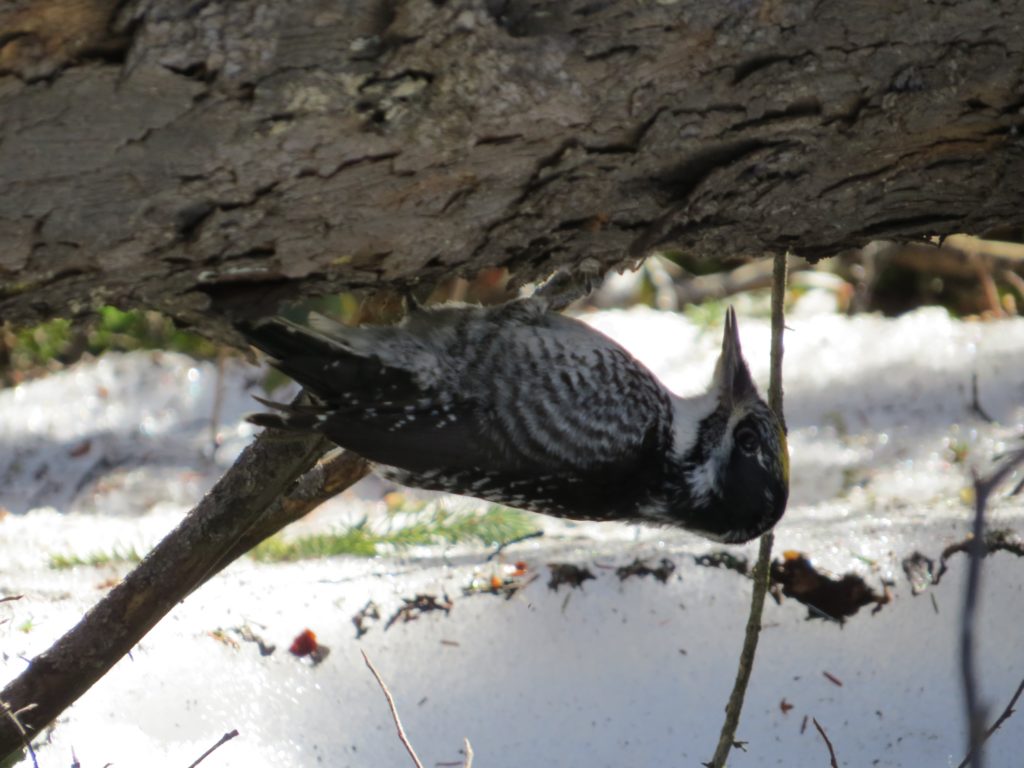
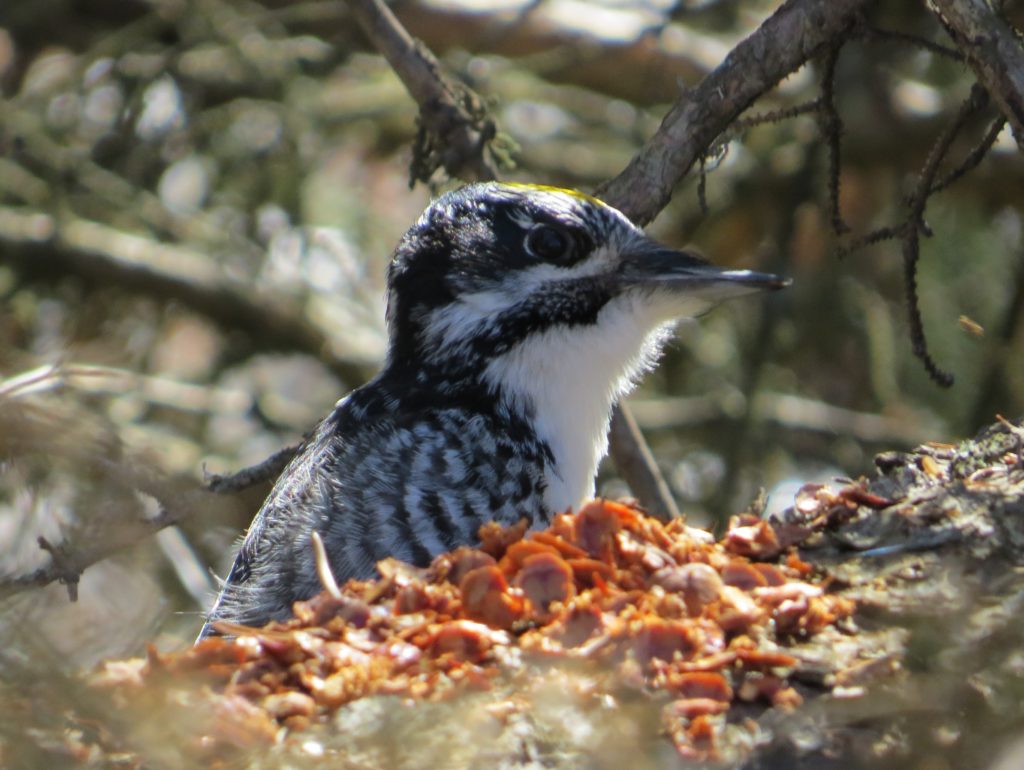 It was a beautiful day to be birding back home and enjoying a long-awaited lifer. John had gotten his fill long ago and left. Julie was quite patient as I spent an inordinate amount of time photographing this incredibly accommodating bird.
It was a beautiful day to be birding back home and enjoying a long-awaited lifer. John had gotten his fill long ago and left. Julie was quite patient as I spent an inordinate amount of time photographing this incredibly accommodating bird.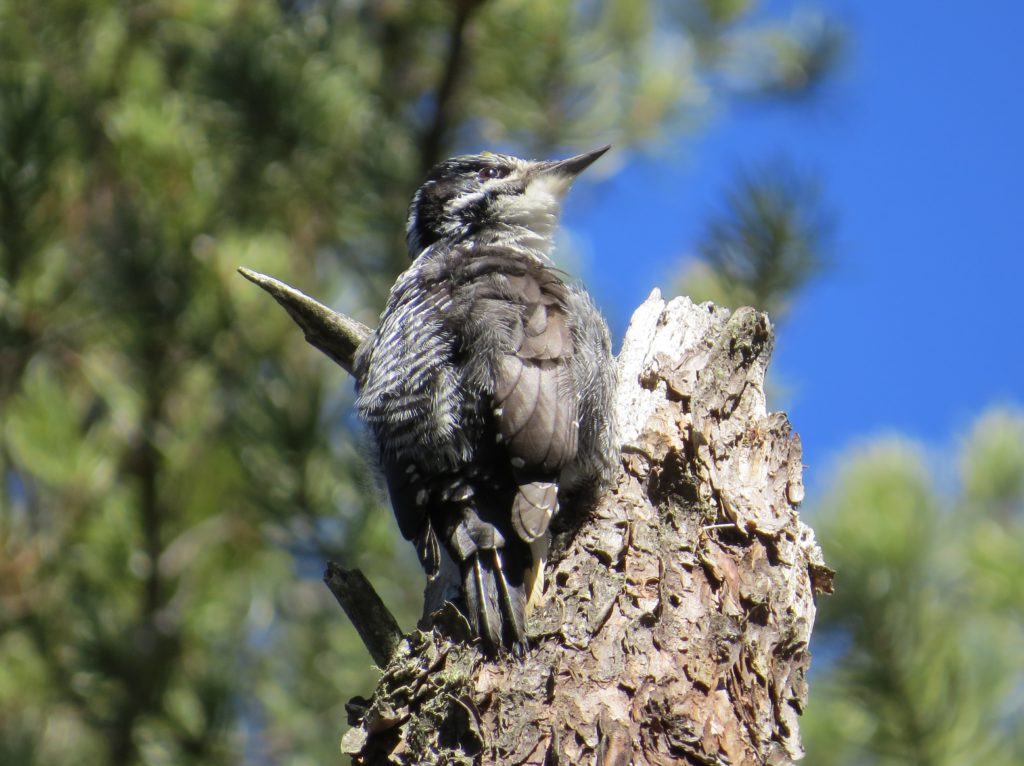 I did, finally, pry myself away and Julie and I wrapped up our birding for the day. However, I found myself back on this road the next morning because the allure of these Woodpeckers and the Spruce Grouse was just too strong. That second morning I decided to drive the stretch of road first with the windows down. Unlike the day before, the action started almost immediately. I heard the unmistakable rattle call of TWO Black-backed Woodpeckers that seemed to be chasing each other around in some sort of courtship dance. I got lucky enough to catch them on the same tree together.
I did, finally, pry myself away and Julie and I wrapped up our birding for the day. However, I found myself back on this road the next morning because the allure of these Woodpeckers and the Spruce Grouse was just too strong. That second morning I decided to drive the stretch of road first with the windows down. Unlike the day before, the action started almost immediately. I heard the unmistakable rattle call of TWO Black-backed Woodpeckers that seemed to be chasing each other around in some sort of courtship dance. I got lucky enough to catch them on the same tree together.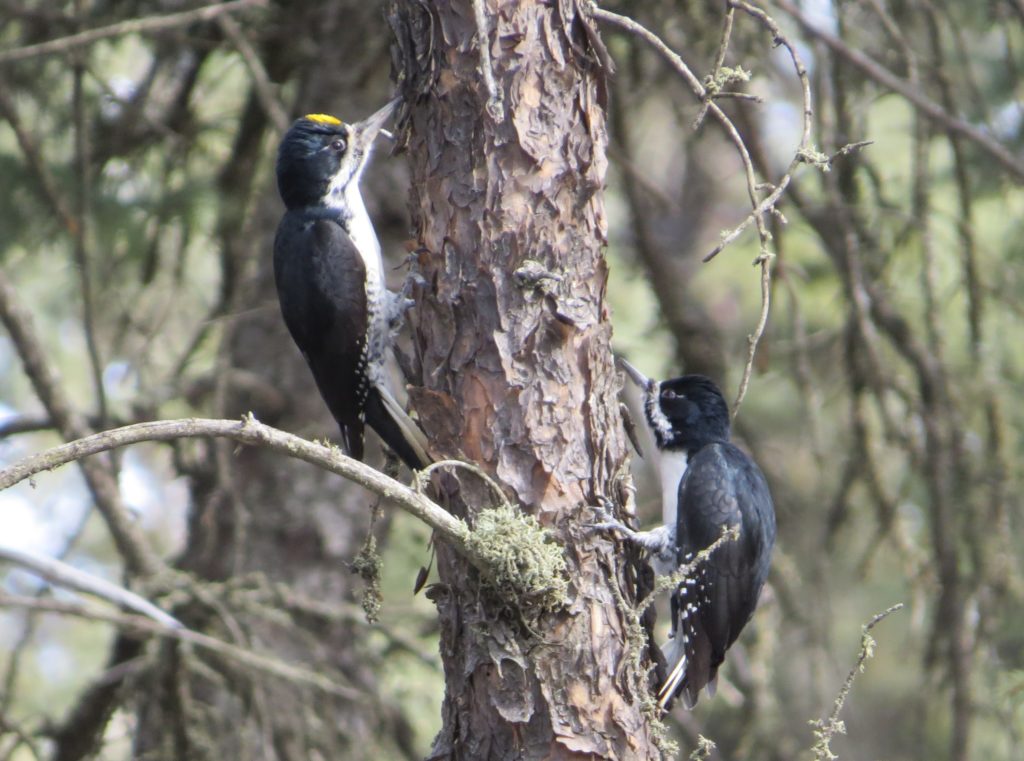 Then all craziness broke loose (as if it hadn’t already). There were now four Woodpeckers chasing each other around. As I tried to make sense of it all, another unexpected sighting happened–Sparky Stensaas came bursting out of the woods with a large camera and tripod in hot pursuit of this action. All of this action was just nuts. I started photographing two Woodpeckers on a dead snag and realized I had the male Black-backed and male Three-toed together on the same tree!
Then all craziness broke loose (as if it hadn’t already). There were now four Woodpeckers chasing each other around. As I tried to make sense of it all, another unexpected sighting happened–Sparky Stensaas came bursting out of the woods with a large camera and tripod in hot pursuit of this action. All of this action was just nuts. I started photographing two Woodpeckers on a dead snag and realized I had the male Black-backed and male Three-toed together on the same tree!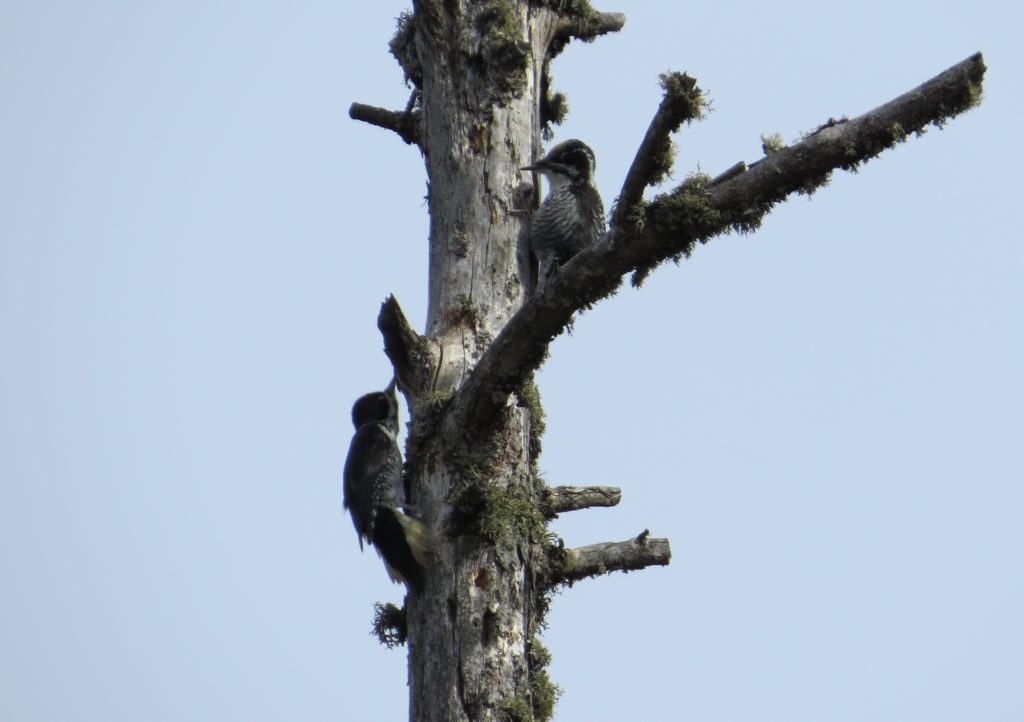
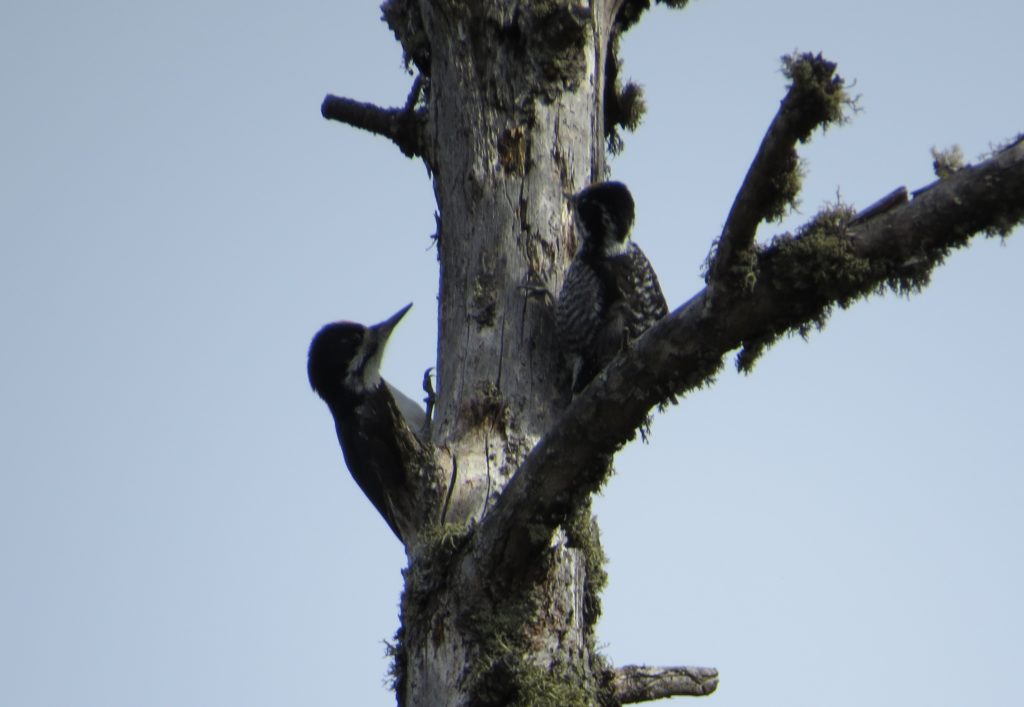 And in the end, one Woodpecker clearly won out.
And in the end, one Woodpecker clearly won out.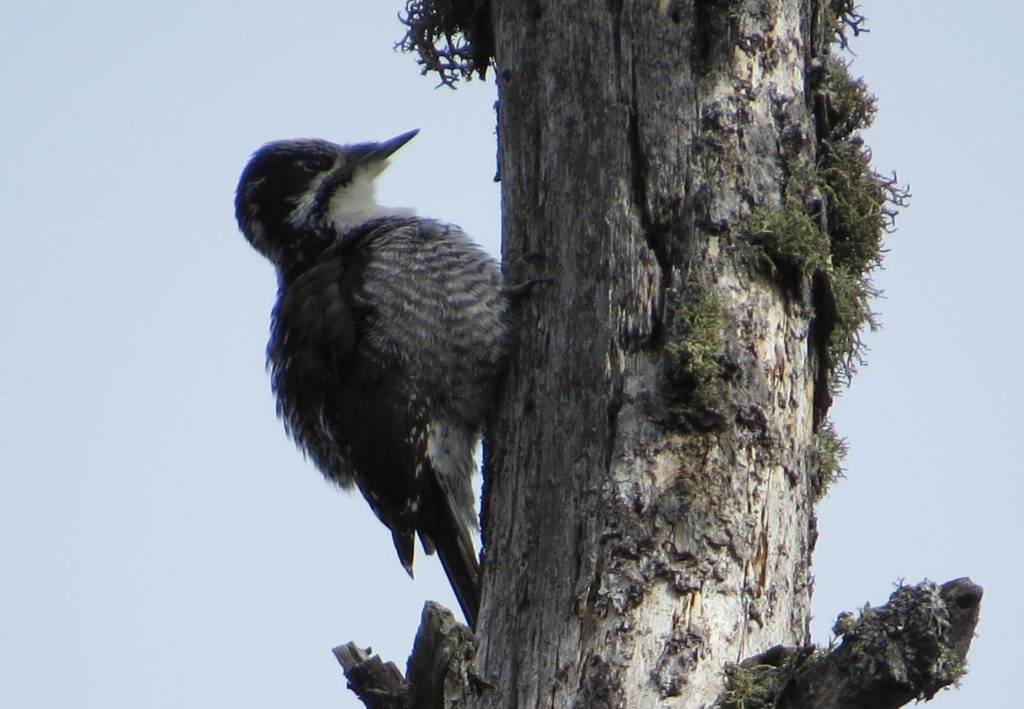 Eventually, the Woodpeckers (and Sparky) dispersed into the woods and the excitement was over. Later on, Julie Grahn and Dee Kuder showed up, and along with Sparky we all enjoyed the Spruce Grouse show that was highlighted in the last post. A huge thank you goes out to Julie Grahn for finding and reporting these birds and assisting me in finding them. It was an incredible experience–I couldn’t have asked for a better way to get this lifer.
Eventually, the Woodpeckers (and Sparky) dispersed into the woods and the excitement was over. Later on, Julie Grahn and Dee Kuder showed up, and along with Sparky we all enjoyed the Spruce Grouse show that was highlighted in the last post. A huge thank you goes out to Julie Grahn for finding and reporting these birds and assisting me in finding them. It was an incredible experience–I couldn’t have asked for a better way to get this lifer.
 When I pulled up to the boat launch at Lake Waconia Regional Park, I saw a Carver County Sheriff truck trailering a patrol boat. I thought it was odd since no one would be on the lake on a day like this nor could a boat be launched in the rapidly building ice. Strange. I didn’t think about it much more and set about my business of finding my target. Watching the sea swells and facing into the sub-zero windchills was brutal even for being dressed for the elements. Scans of the big lake were intermittent and necessitated warm-up sessions in the car. Having no luck seeing the duck (which was there that morning), I asked Julie for any tips on where to stare into that blue abyss to find this duck. In giving me directions, Julie also reminded me of the ongoing search for a paddleboarder that went missing two week prior. The dots started connecting in my head regarding the Sheriff’s trailered boat, trucks driving slowly along the shoreline who I had thought were also looking for the Scoter, and my own vague recollection of a news report I had seen. It was suddenly a grim realization that I should be looking for more than just my bird.
When I pulled up to the boat launch at Lake Waconia Regional Park, I saw a Carver County Sheriff truck trailering a patrol boat. I thought it was odd since no one would be on the lake on a day like this nor could a boat be launched in the rapidly building ice. Strange. I didn’t think about it much more and set about my business of finding my target. Watching the sea swells and facing into the sub-zero windchills was brutal even for being dressed for the elements. Scans of the big lake were intermittent and necessitated warm-up sessions in the car. Having no luck seeing the duck (which was there that morning), I asked Julie for any tips on where to stare into that blue abyss to find this duck. In giving me directions, Julie also reminded me of the ongoing search for a paddleboarder that went missing two week prior. The dots started connecting in my head regarding the Sheriff’s trailered boat, trucks driving slowly along the shoreline who I had thought were also looking for the Scoter, and my own vague recollection of a news report I had seen. It was suddenly a grim realization that I should be looking for more than just my bird.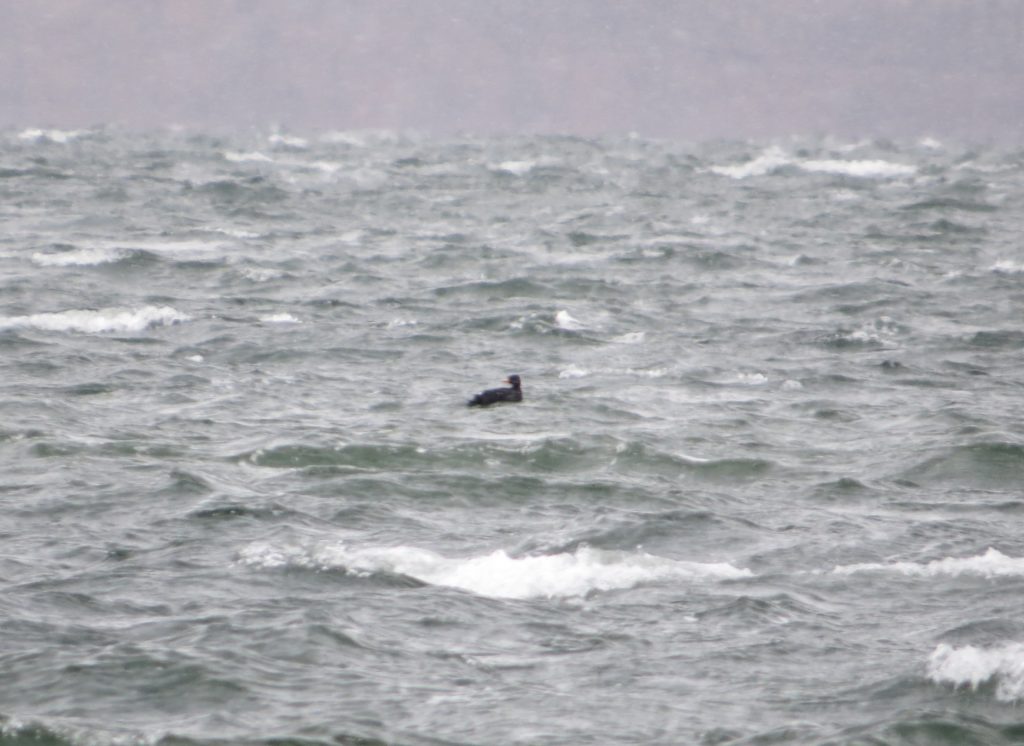 The incredible distance, the numb fingers, and disappearing/reappearing bird made picture-taking a nightmare. Regardless, I was thrilled to finally add this bird and see an adult male at that, a gender/plumage combo that is rarely ever seen in the state.
The incredible distance, the numb fingers, and disappearing/reappearing bird made picture-taking a nightmare. Regardless, I was thrilled to finally add this bird and see an adult male at that, a gender/plumage combo that is rarely ever seen in the state.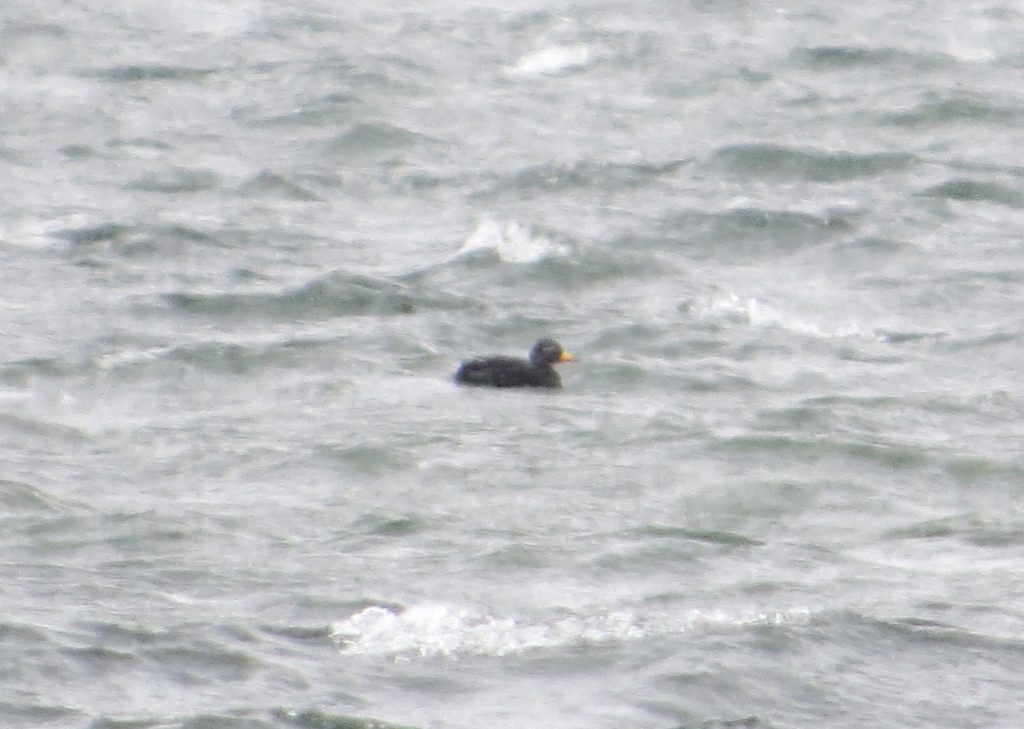
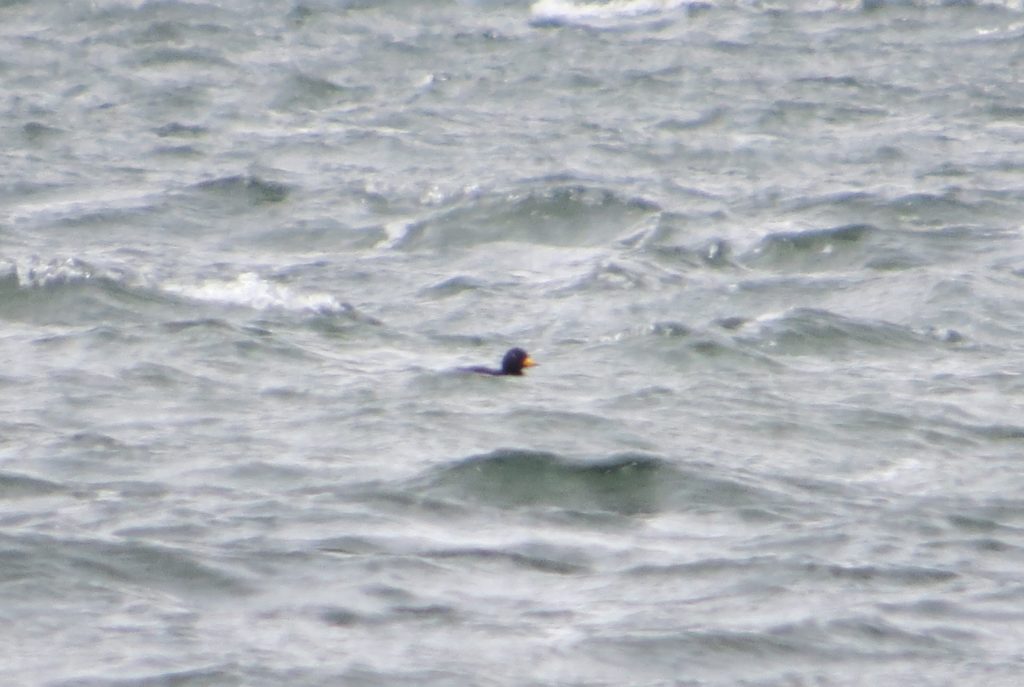
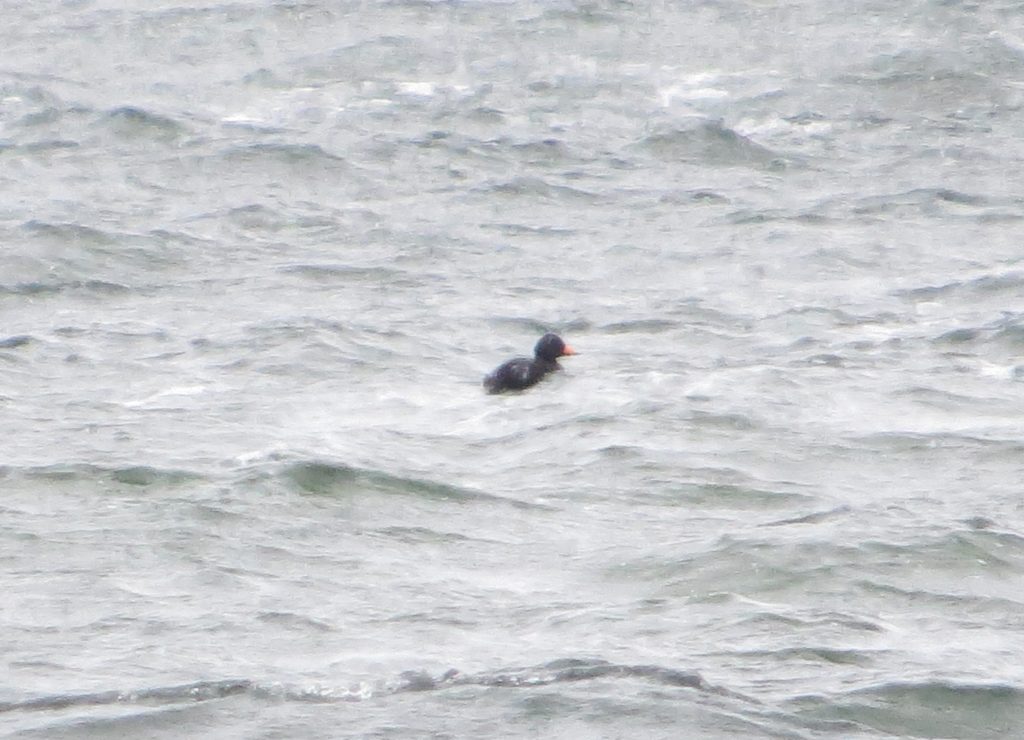 The excitement of this new addition was tempered by a Sheriff’s helicopter making constant circles around the lake the whole time I was there, undoubtedly desperate to find this man on this last day of open water. The man was just a couple years younger than me with two young kids and another on the way. He had gone out to pursue his passion of wildlife photography from his paddleboard. And here I was at the same body of water just a couple weeks later pursuing mine. Life really is unfair. The whole ride back to work it was hard not to wonder if I sometimes take unnecessary risks in the pursuit of my hobby. Then again, a life lived with no adventure is a life not fully lived. Seize the day.
The excitement of this new addition was tempered by a Sheriff’s helicopter making constant circles around the lake the whole time I was there, undoubtedly desperate to find this man on this last day of open water. The man was just a couple years younger than me with two young kids and another on the way. He had gone out to pursue his passion of wildlife photography from his paddleboard. And here I was at the same body of water just a couple weeks later pursuing mine. Life really is unfair. The whole ride back to work it was hard not to wonder if I sometimes take unnecessary risks in the pursuit of my hobby. Then again, a life lived with no adventure is a life not fully lived. Seize the day.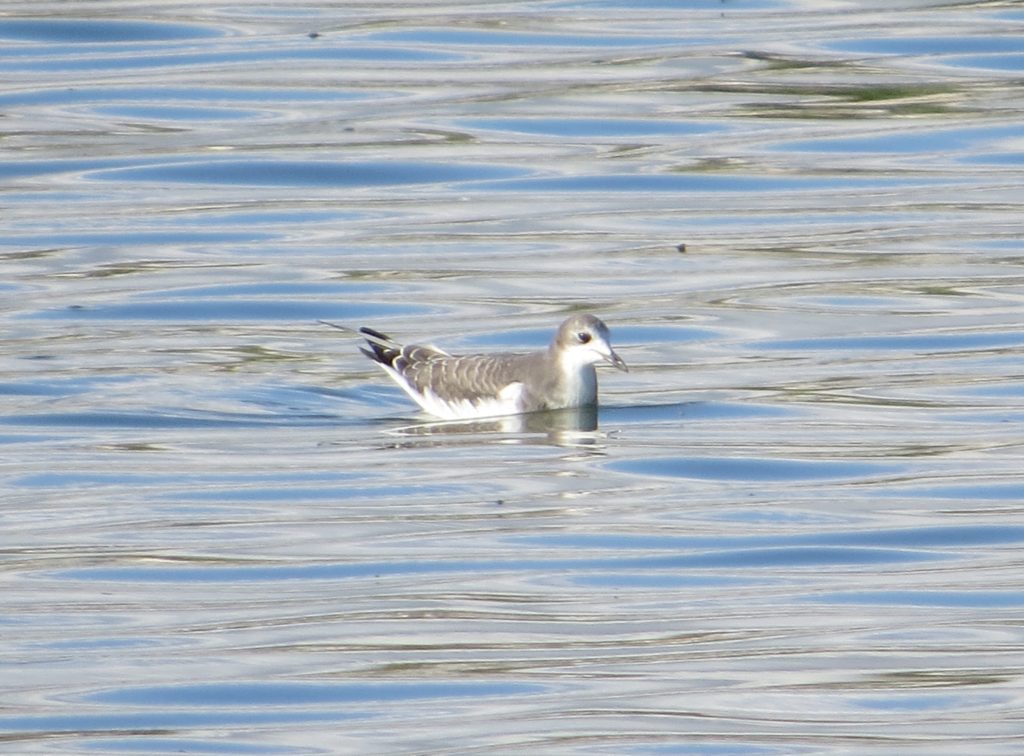
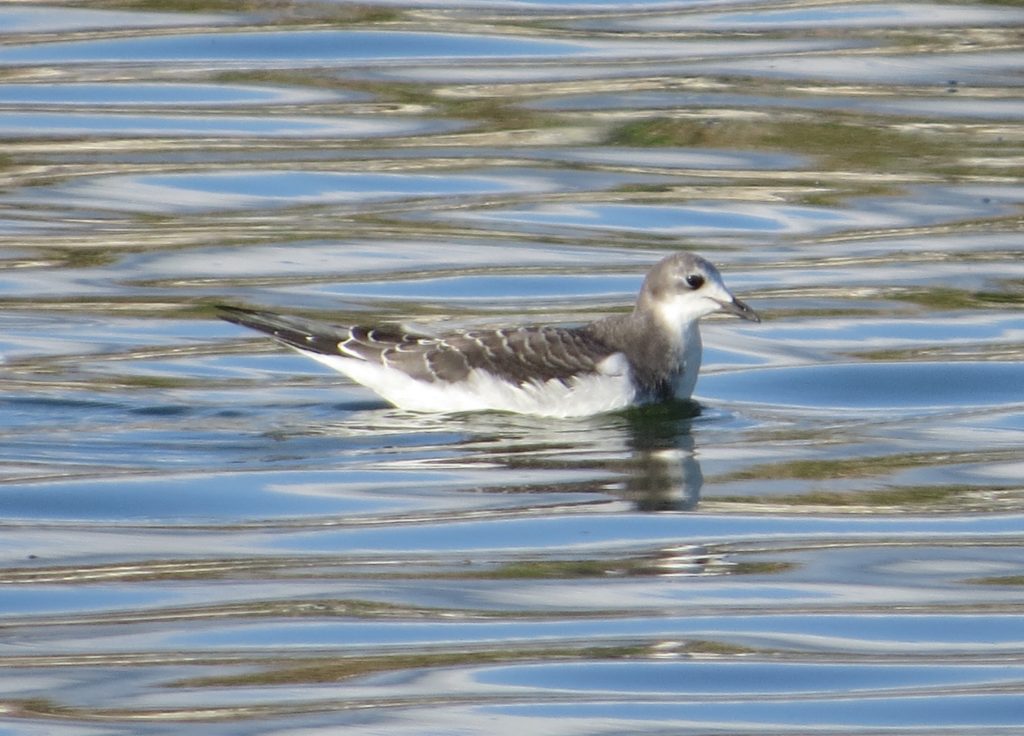 Sabine’s Gulls are a rare but expected species throughout the Minnesota during September. What wasn’t expected was a bird that turned up two weeks later in Carver County–a first state record Sharp-tailed Sandpiper, a bird from Siberia. They mostly show up in Alaska but are also seen occasionally in the lower 48 along the west coast. This find by Pete Hoeger and Bob Williams was absolutely remarkable. Consequently, Randy Frederickson and I chased this bird together after work on September 21st. The hordes were out in full force for this mega. Initially when we arrived, we and the 20 other people there couldn’t find it even though it had been spotted 10 minutes before we showed up. After a good 20 minutes filled with much internal panic everywhere, one of the birders got us on the bird. The wind, distance, and similar looking juvenile Pectoral Sandpipers made spotting and re-spotting the bird a tough task. Photography was a nightmare; I would have to settle for diagnostic photos in these conditions. But considering I never thought I would ever, ever see this bird in my life, I’m not complaining.
Sabine’s Gulls are a rare but expected species throughout the Minnesota during September. What wasn’t expected was a bird that turned up two weeks later in Carver County–a first state record Sharp-tailed Sandpiper, a bird from Siberia. They mostly show up in Alaska but are also seen occasionally in the lower 48 along the west coast. This find by Pete Hoeger and Bob Williams was absolutely remarkable. Consequently, Randy Frederickson and I chased this bird together after work on September 21st. The hordes were out in full force for this mega. Initially when we arrived, we and the 20 other people there couldn’t find it even though it had been spotted 10 minutes before we showed up. After a good 20 minutes filled with much internal panic everywhere, one of the birders got us on the bird. The wind, distance, and similar looking juvenile Pectoral Sandpipers made spotting and re-spotting the bird a tough task. Photography was a nightmare; I would have to settle for diagnostic photos in these conditions. But considering I never thought I would ever, ever see this bird in my life, I’m not complaining.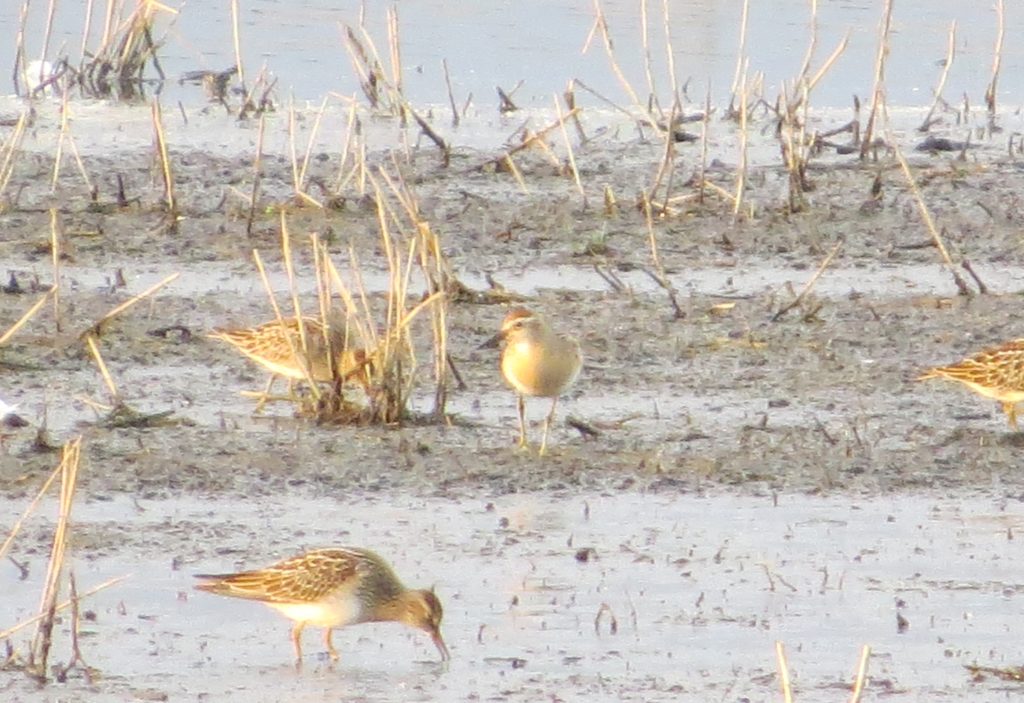
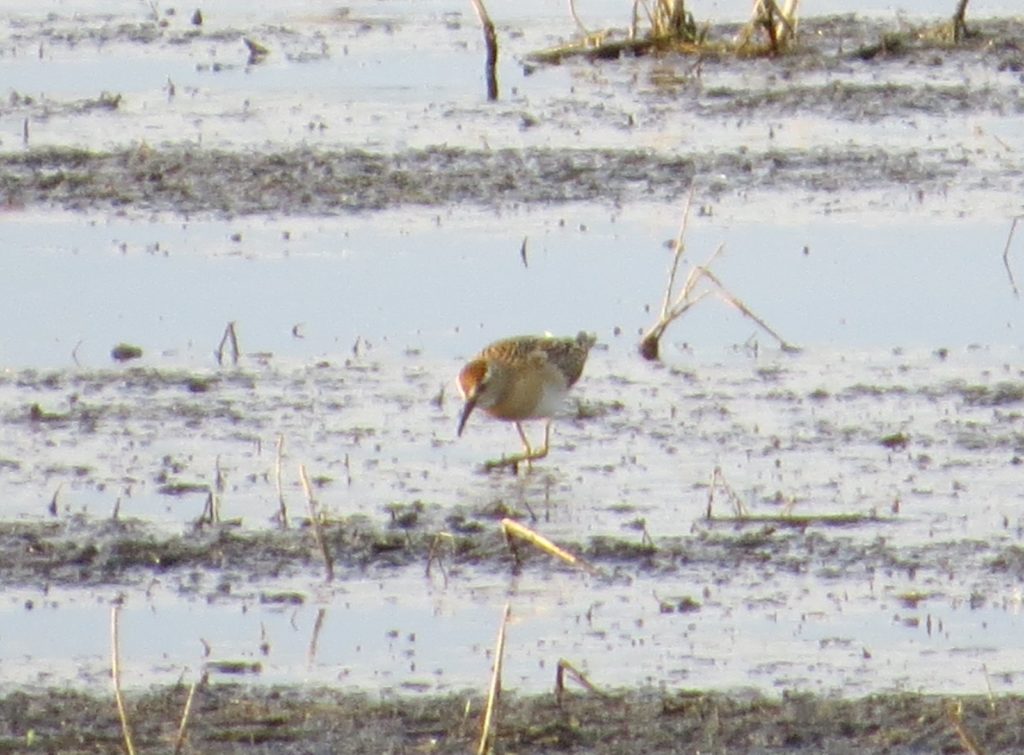 By birding standards I’ve actually been celebrating Birth Quarter instead of just Birth Month. The great birds have continued long past September. I’ve been to Arizona and back already, so there will be more stories of lifering and night-owling with the famous Tommy DeBardeleben of TOBY fame. There have also been good birds back home, including a new county record that I found. Lots of excitement coming at you on the blog in due time…
By birding standards I’ve actually been celebrating Birth Quarter instead of just Birth Month. The great birds have continued long past September. I’ve been to Arizona and back already, so there will be more stories of lifering and night-owling with the famous Tommy DeBardeleben of TOBY fame. There have also been good birds back home, including a new county record that I found. Lots of excitement coming at you on the blog in due time…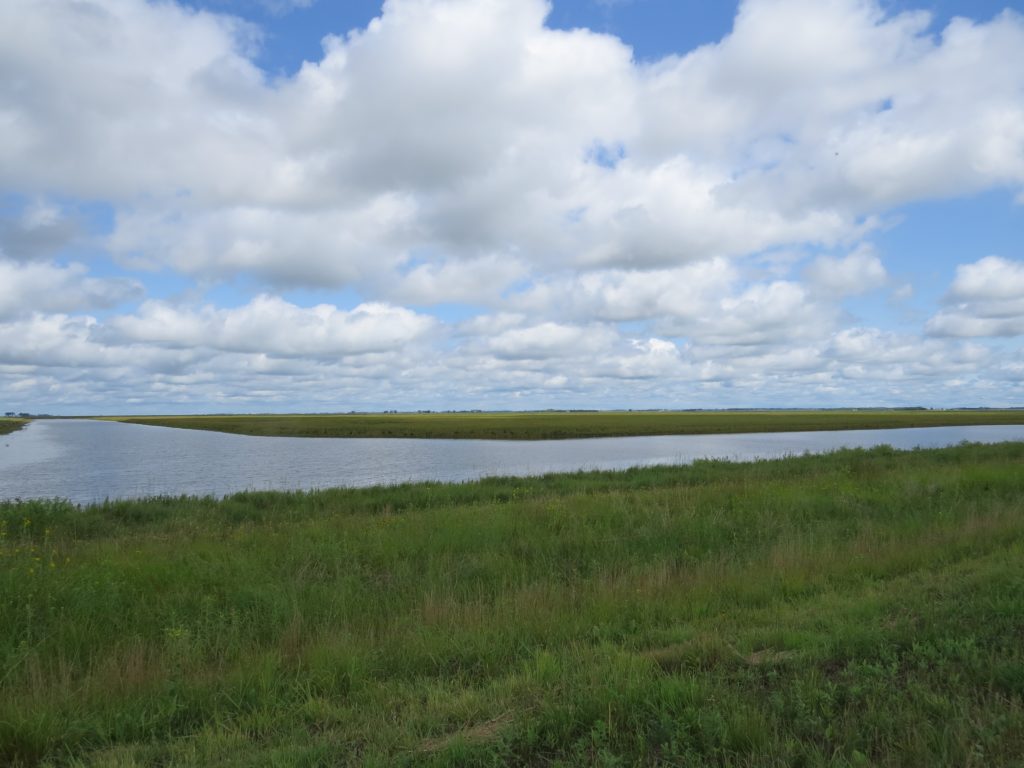 It was fun to return to this area. Two years prior, Randy Frederickson, Evan, and I came up here for a tidy haul of good birds in one trip: White-winged Dove, Cattle Egrets, Black-necked Stilts, and Loggerhead Shrike. This time I was looking for another great gift from Grant, and luckily, I found it.
It was fun to return to this area. Two years prior, Randy Frederickson, Evan, and I came up here for a tidy haul of good birds in one trip: White-winged Dove, Cattle Egrets, Black-necked Stilts, and Loggerhead Shrike. This time I was looking for another great gift from Grant, and luckily, I found it.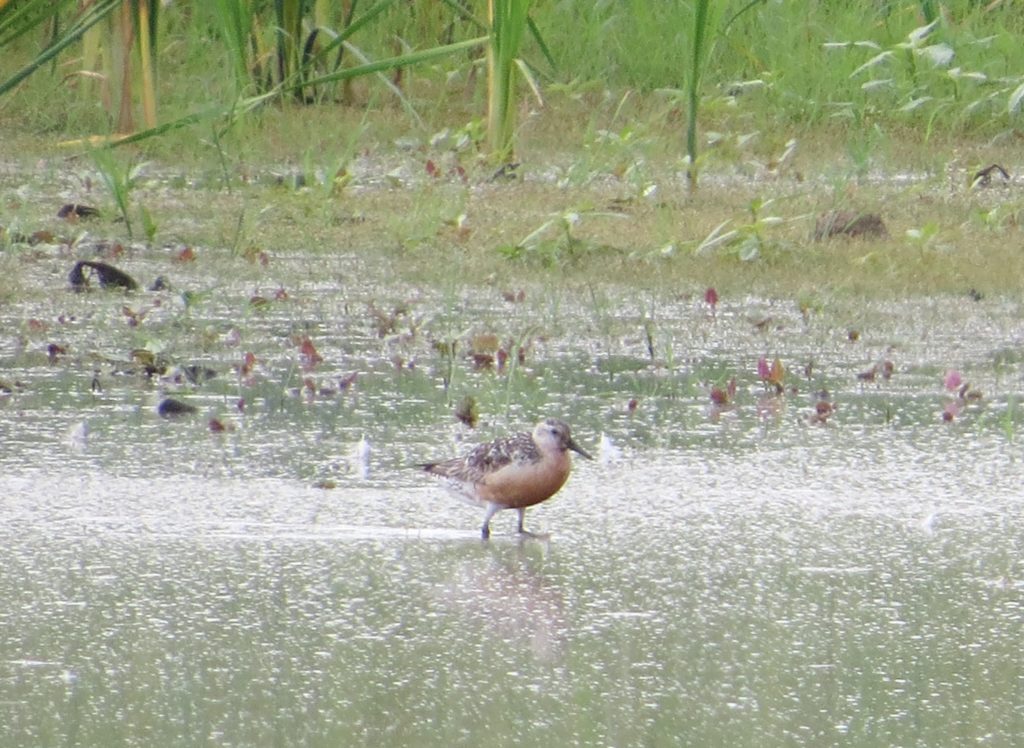 Initially I couldn’t find it and panicked since Joel Schmidt had just been there before me and assured me it was still there. It took me a good ten minutes to finally spot it, and I may or may not have been crabby and short with the kids during those tense first few minutes as they loudly pestered one another in the backseat to fight off the boredom. But with the chubby red bird now officially in sight, I was much more at ease and took things in stride.
Initially I couldn’t find it and panicked since Joel Schmidt had just been there before me and assured me it was still there. It took me a good ten minutes to finally spot it, and I may or may not have been crabby and short with the kids during those tense first few minutes as they loudly pestered one another in the backseat to fight off the boredom. But with the chubby red bird now officially in sight, I was much more at ease and took things in stride.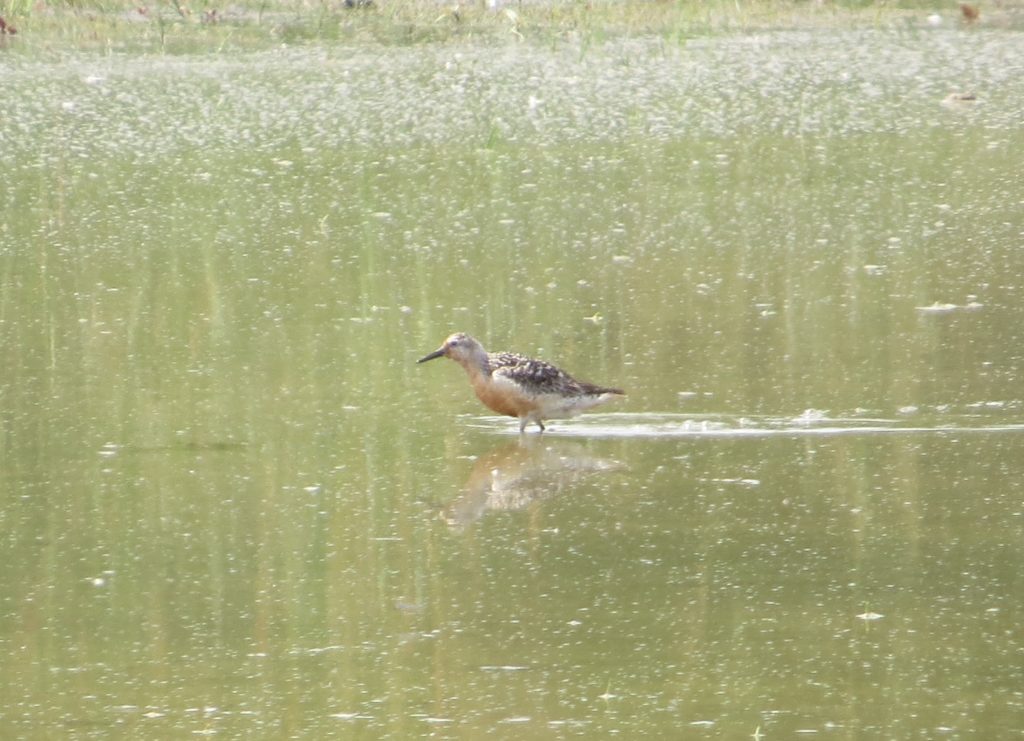
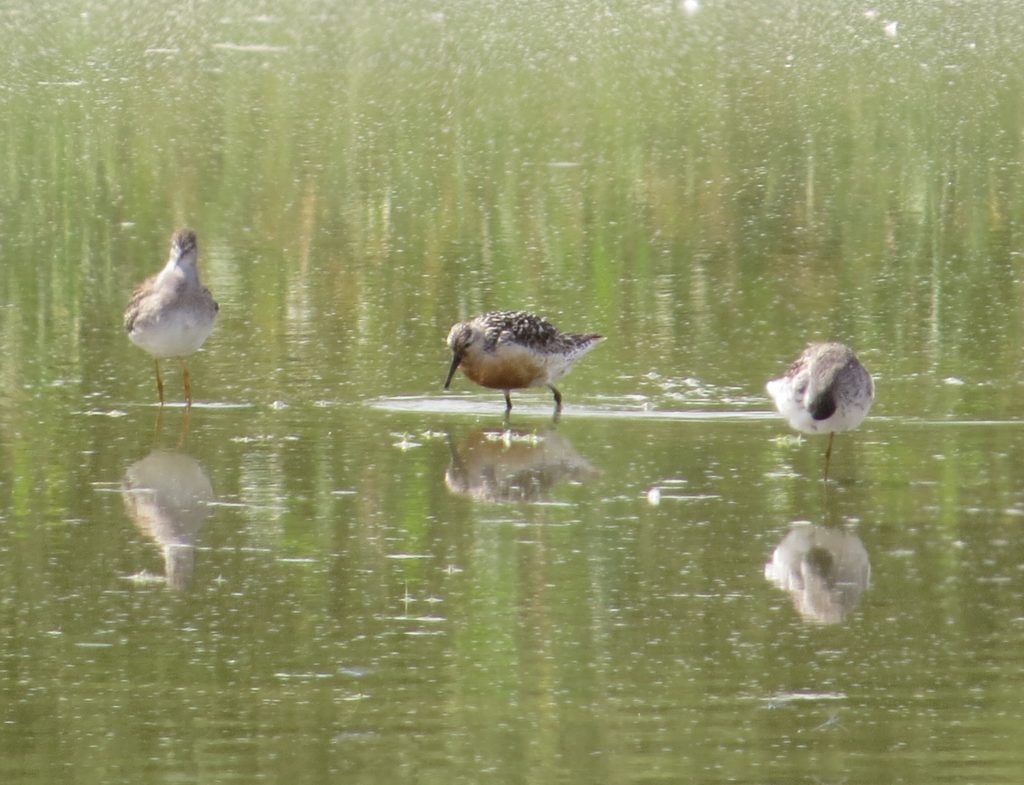
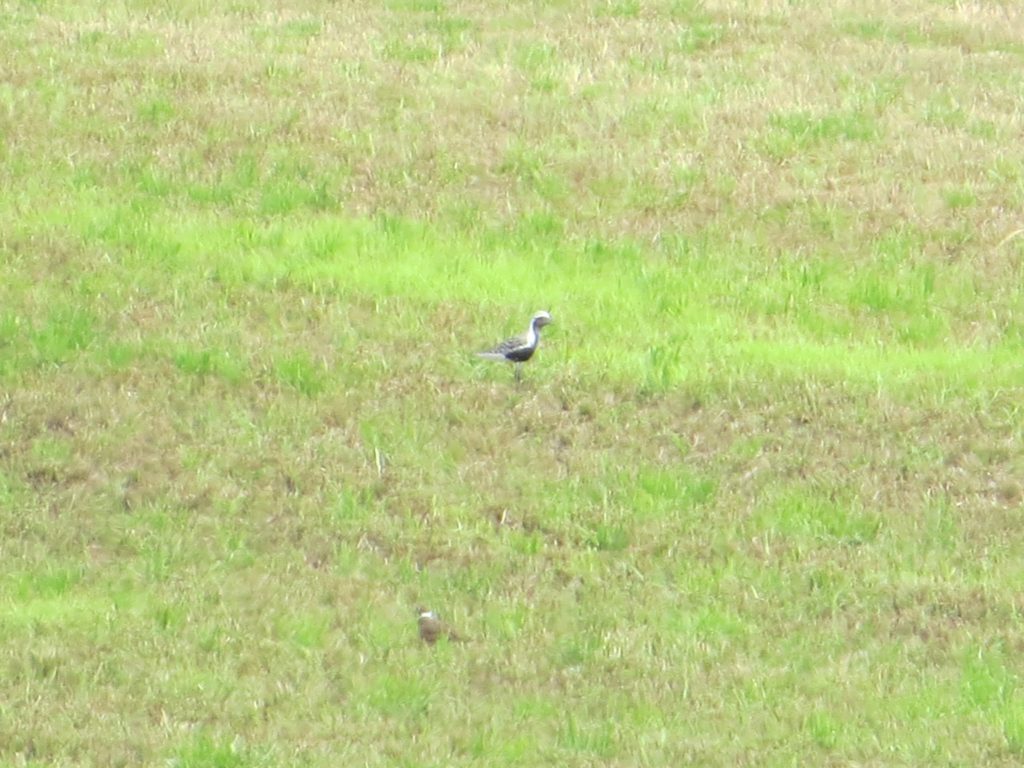 Eventually Joel and I found the Buff-breasteds and eventually I did get those kids home. After all, we had a lot of things to do at home, like get ready for out-of-state birding trip to grab some lifers and do some other fun things. That story is coming next.
Eventually Joel and I found the Buff-breasteds and eventually I did get those kids home. After all, we had a lot of things to do at home, like get ready for out-of-state birding trip to grab some lifers and do some other fun things. That story is coming next.